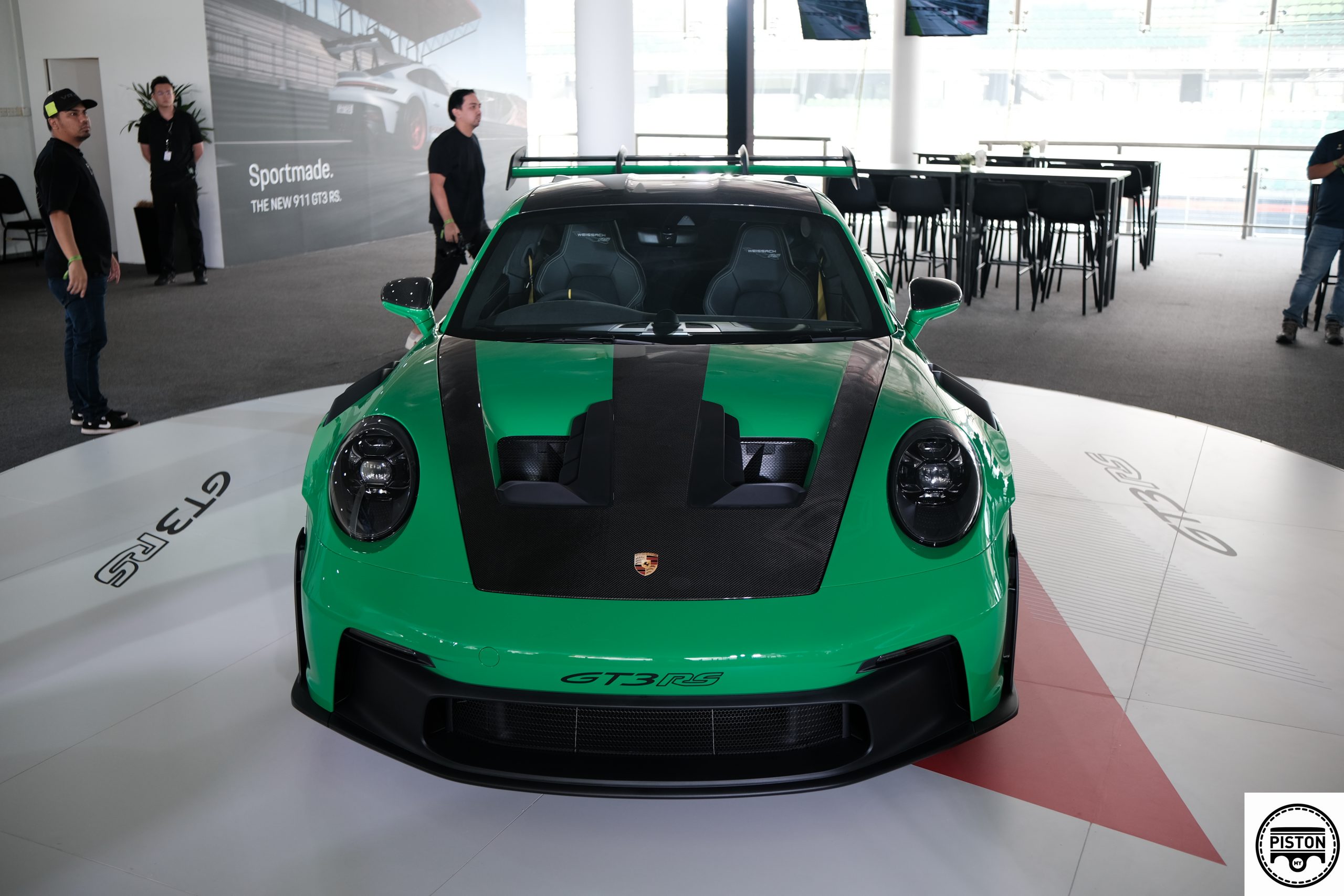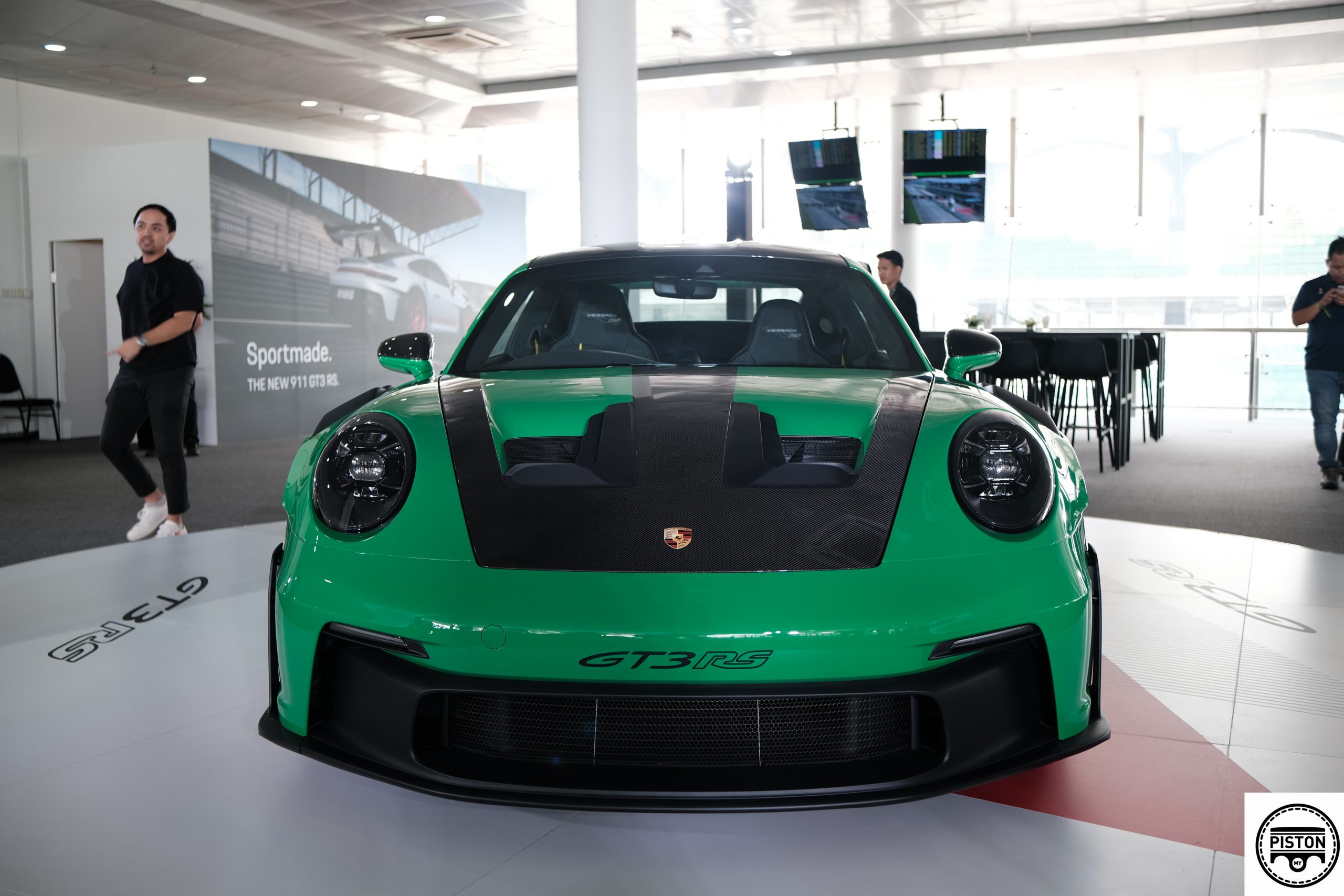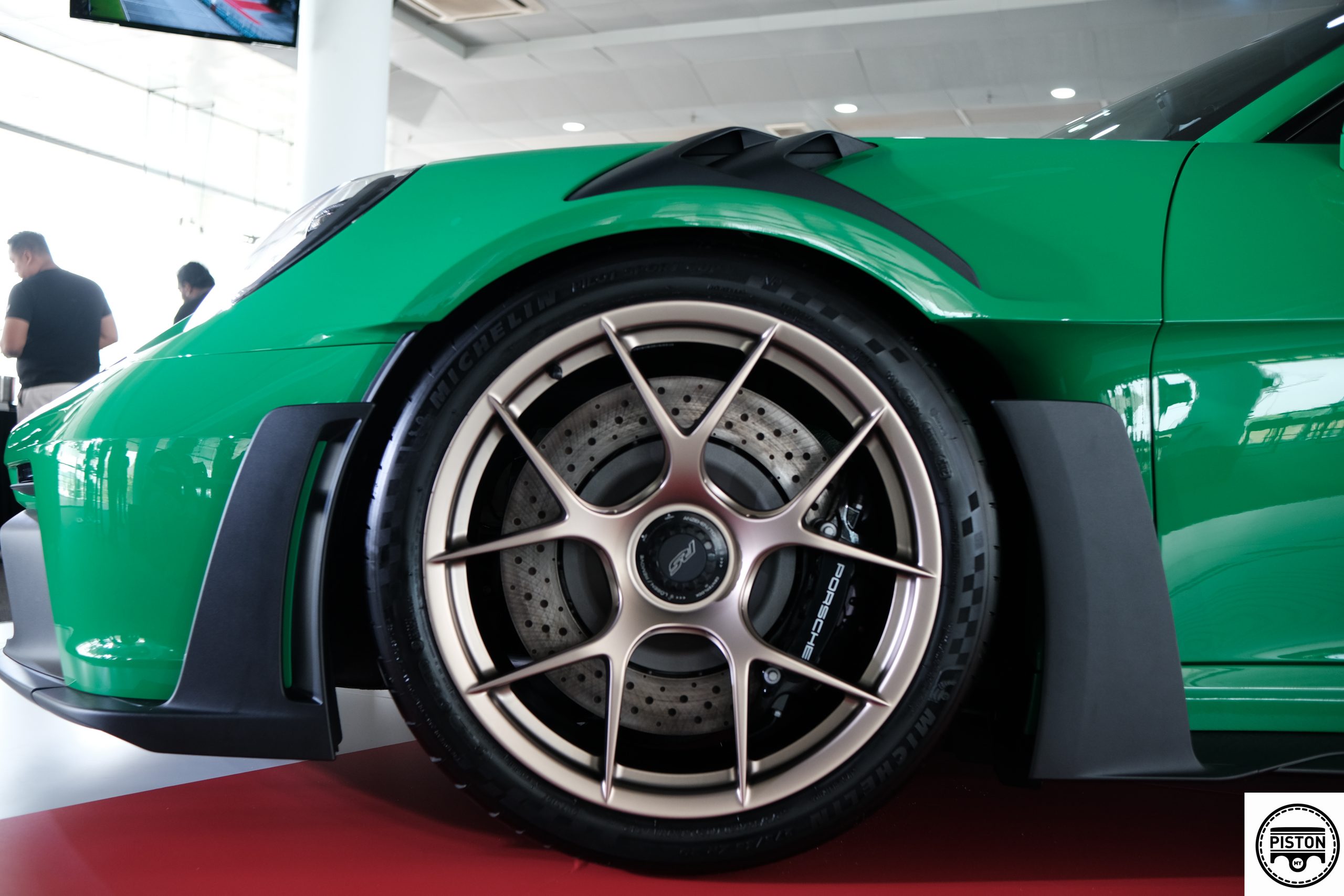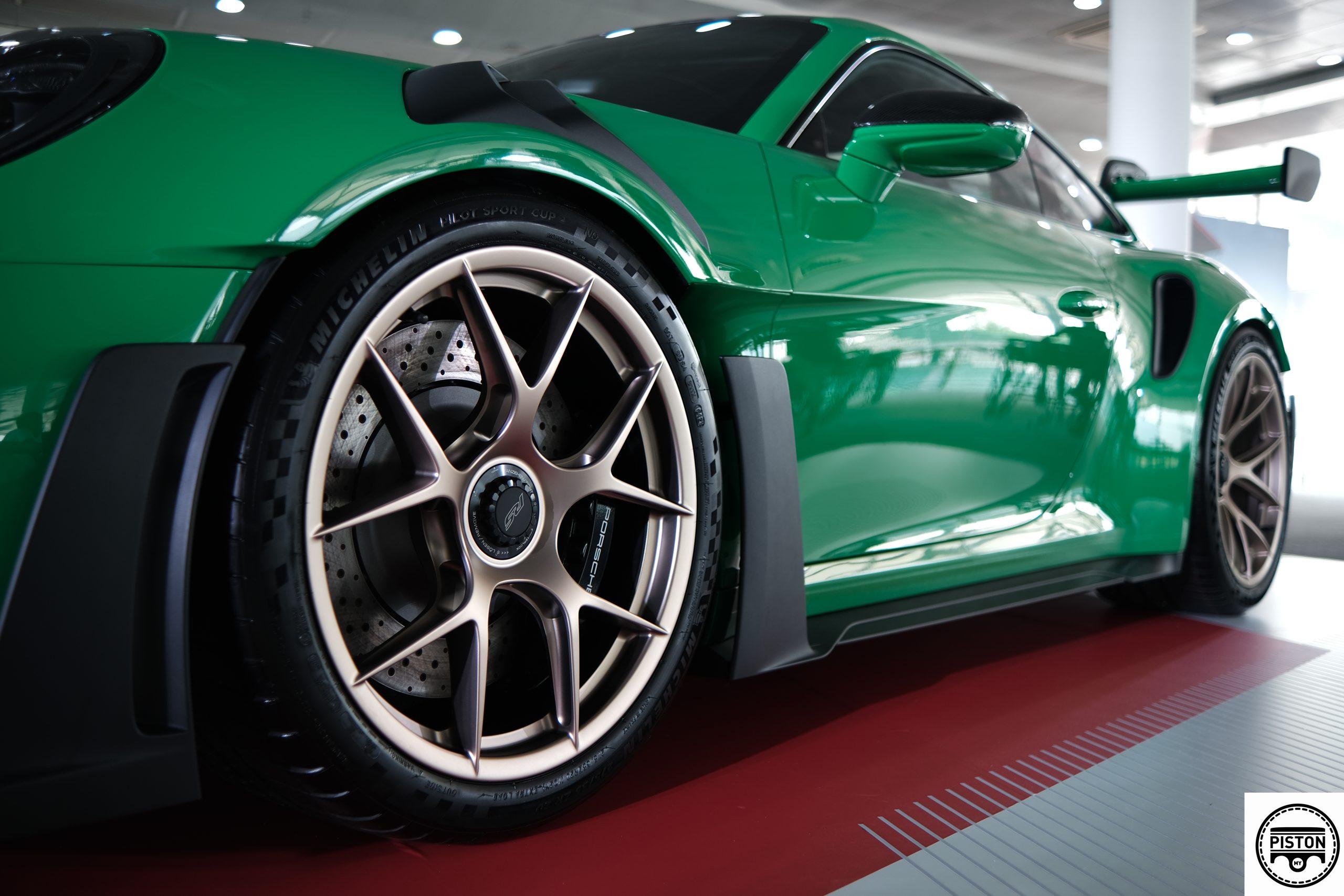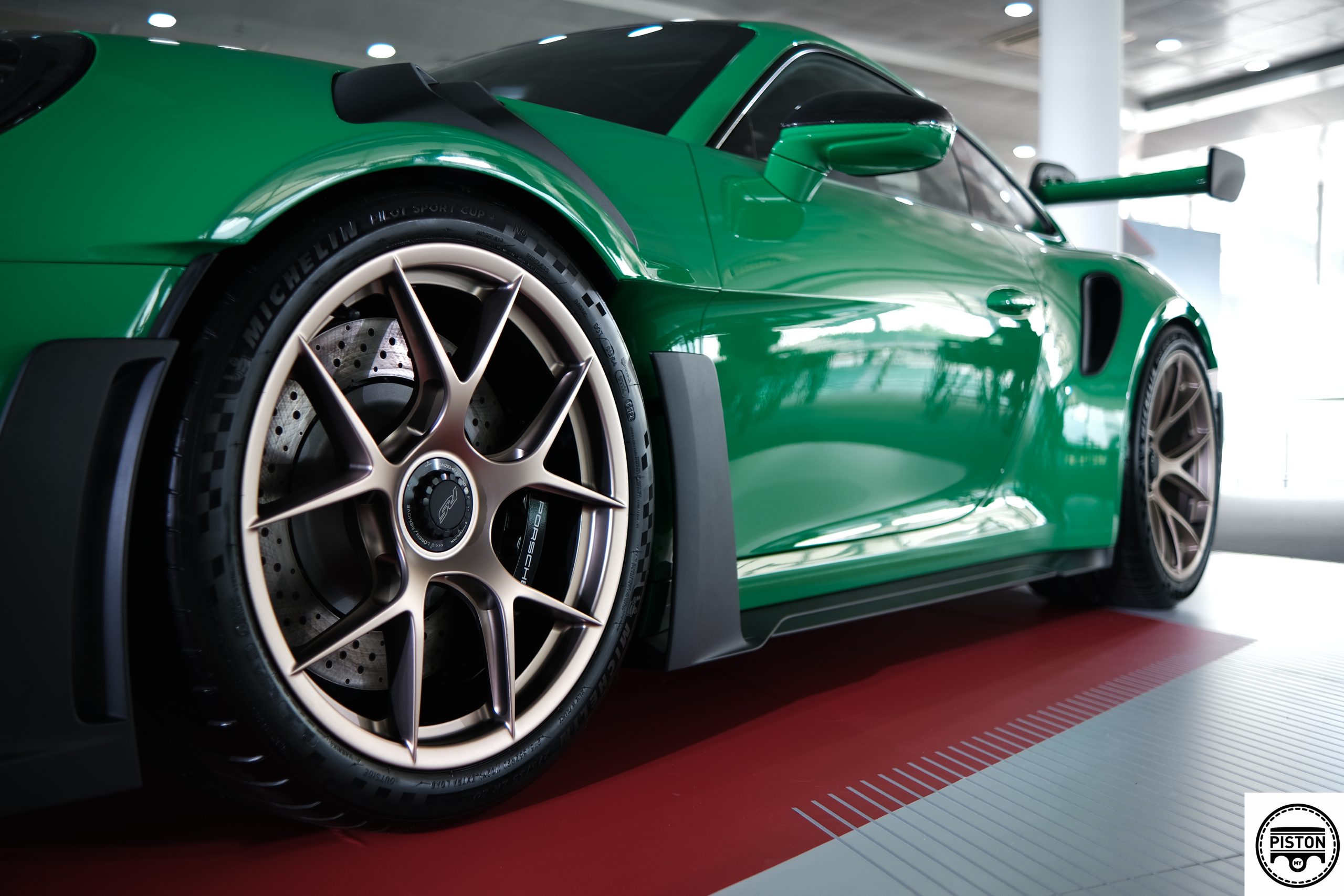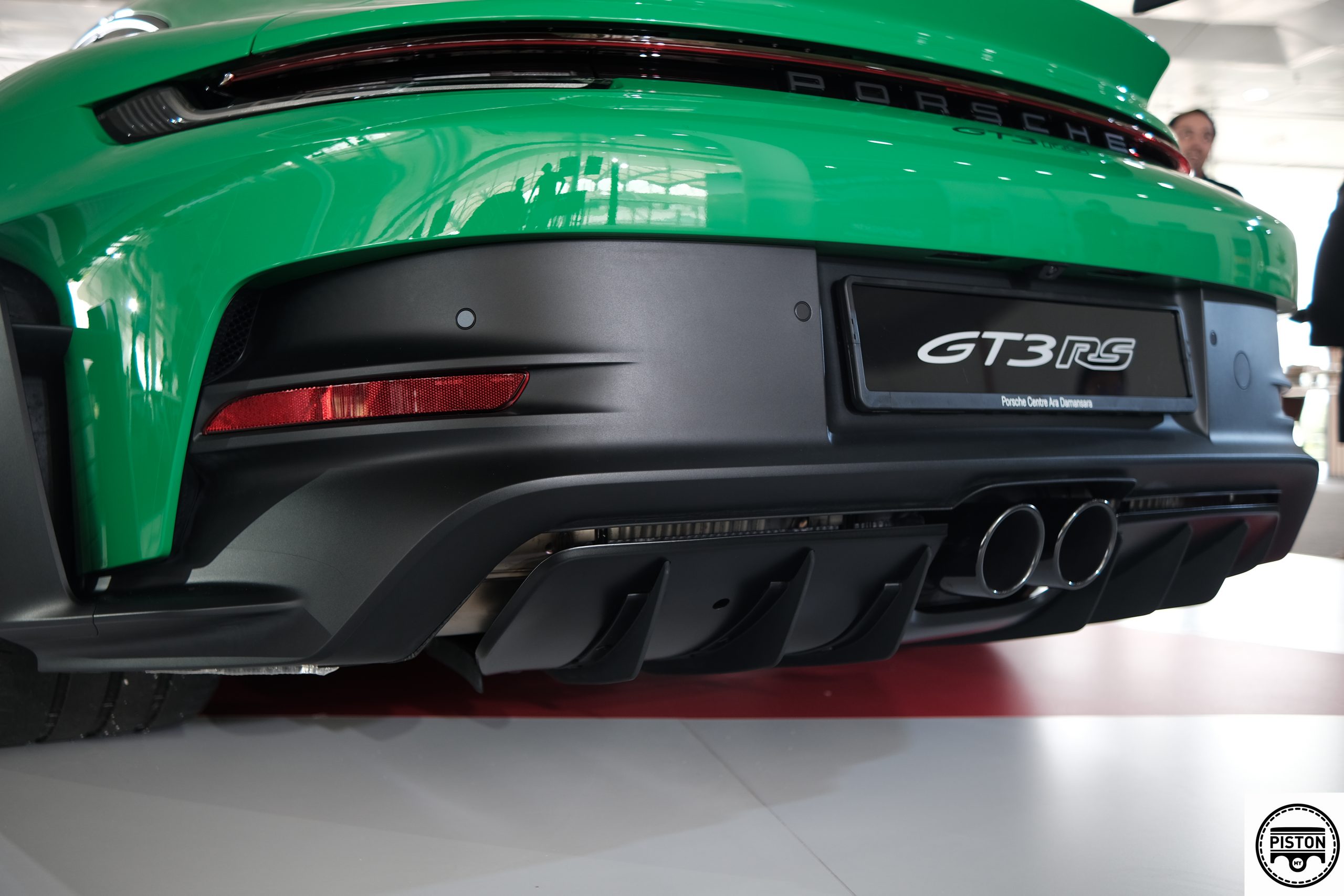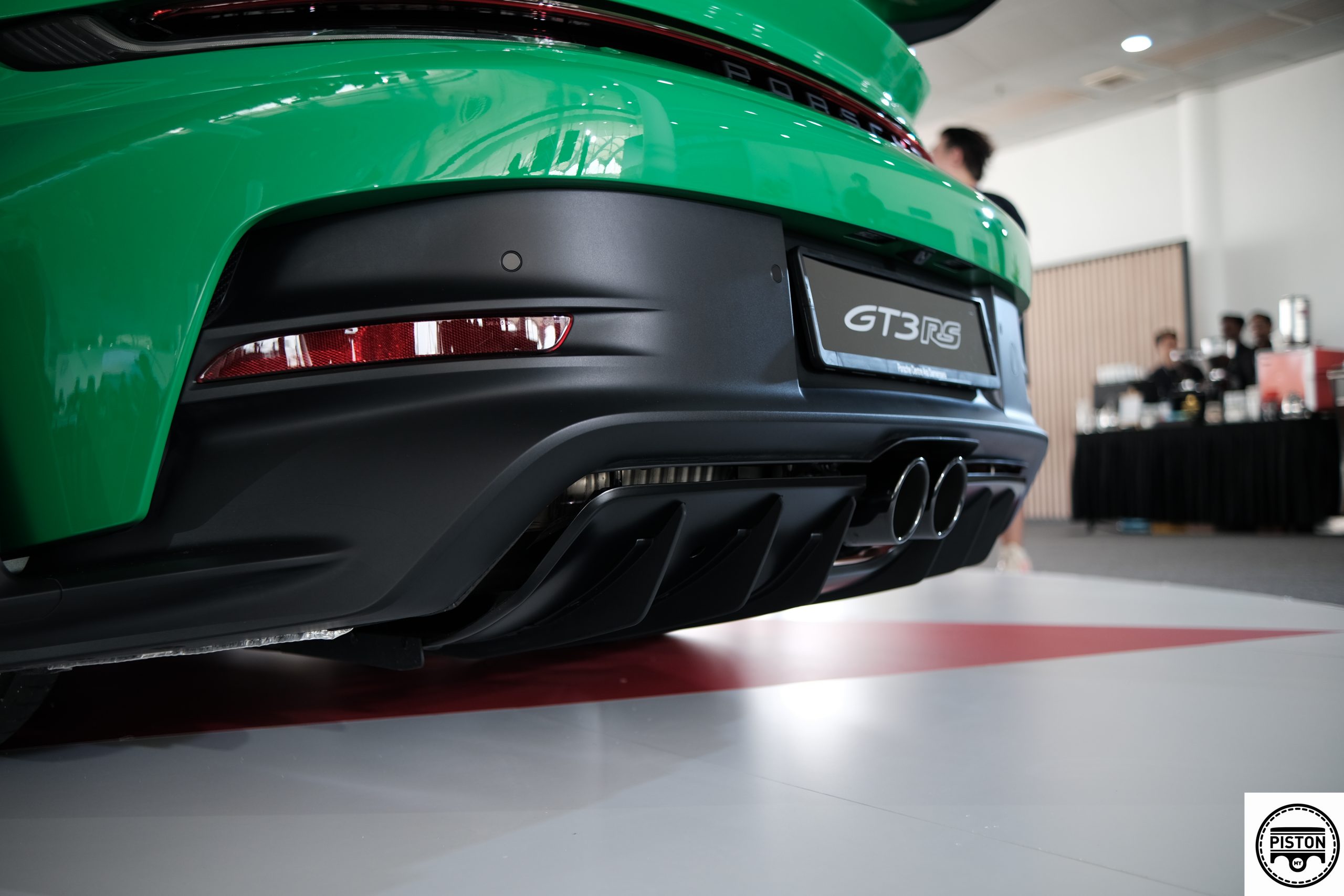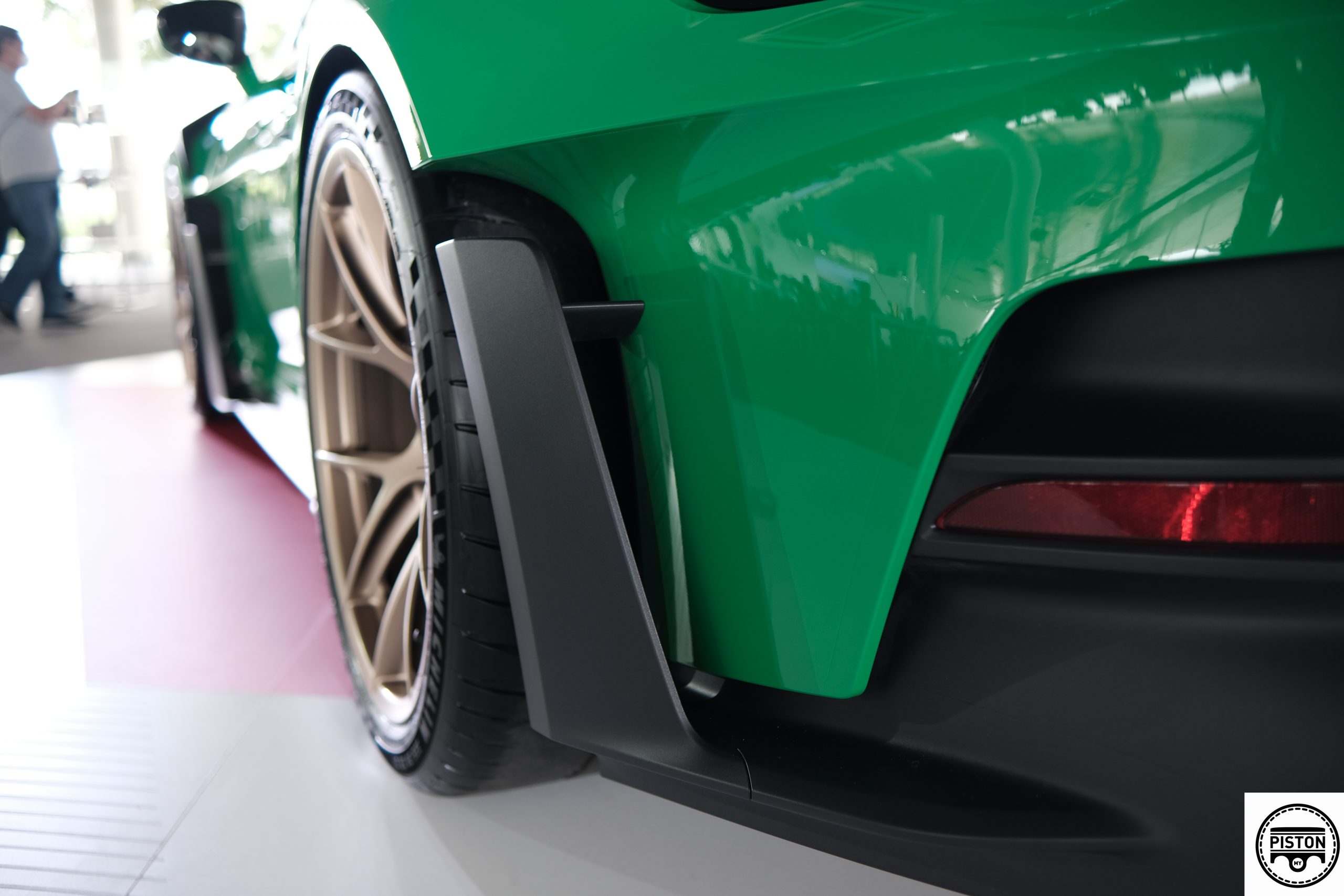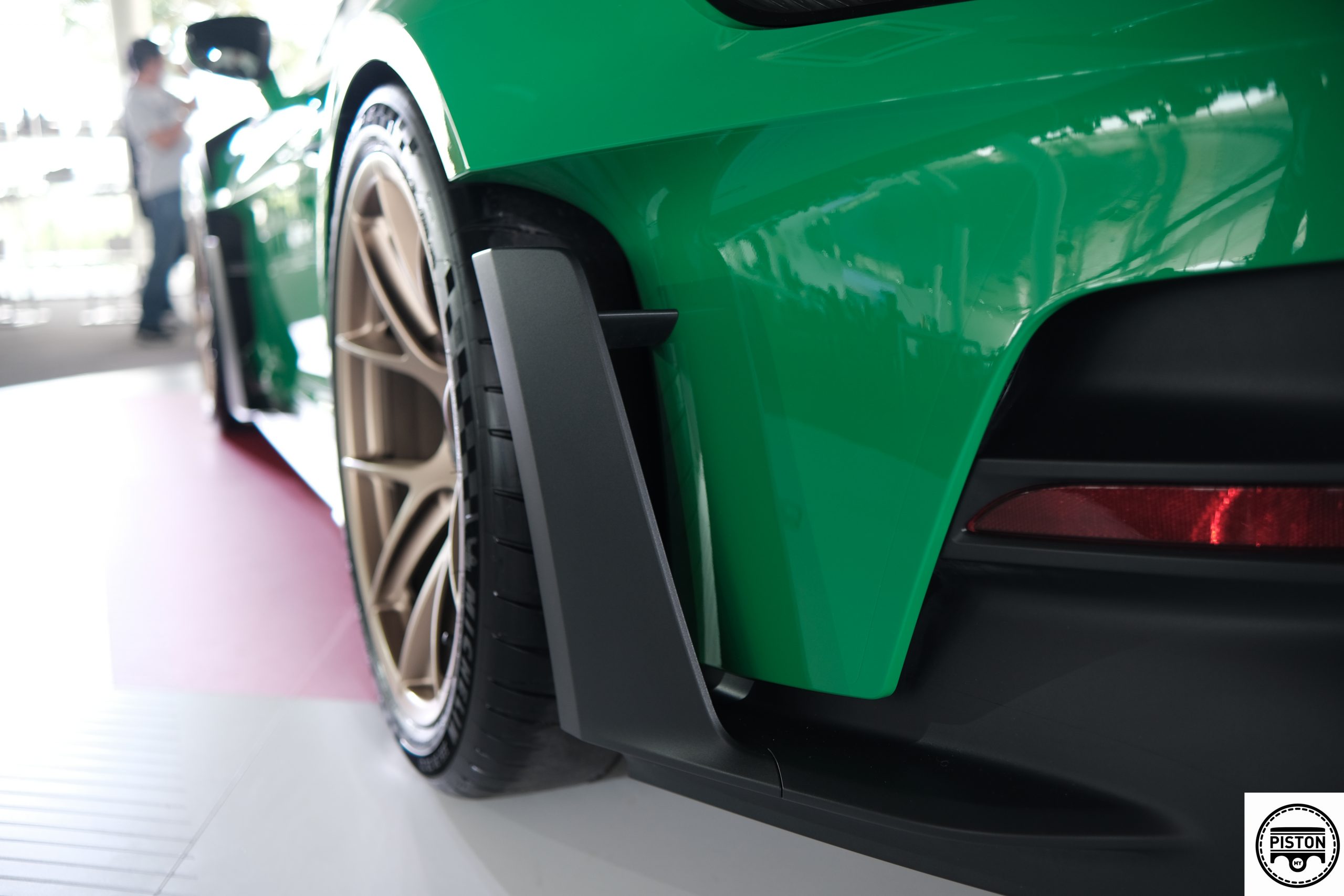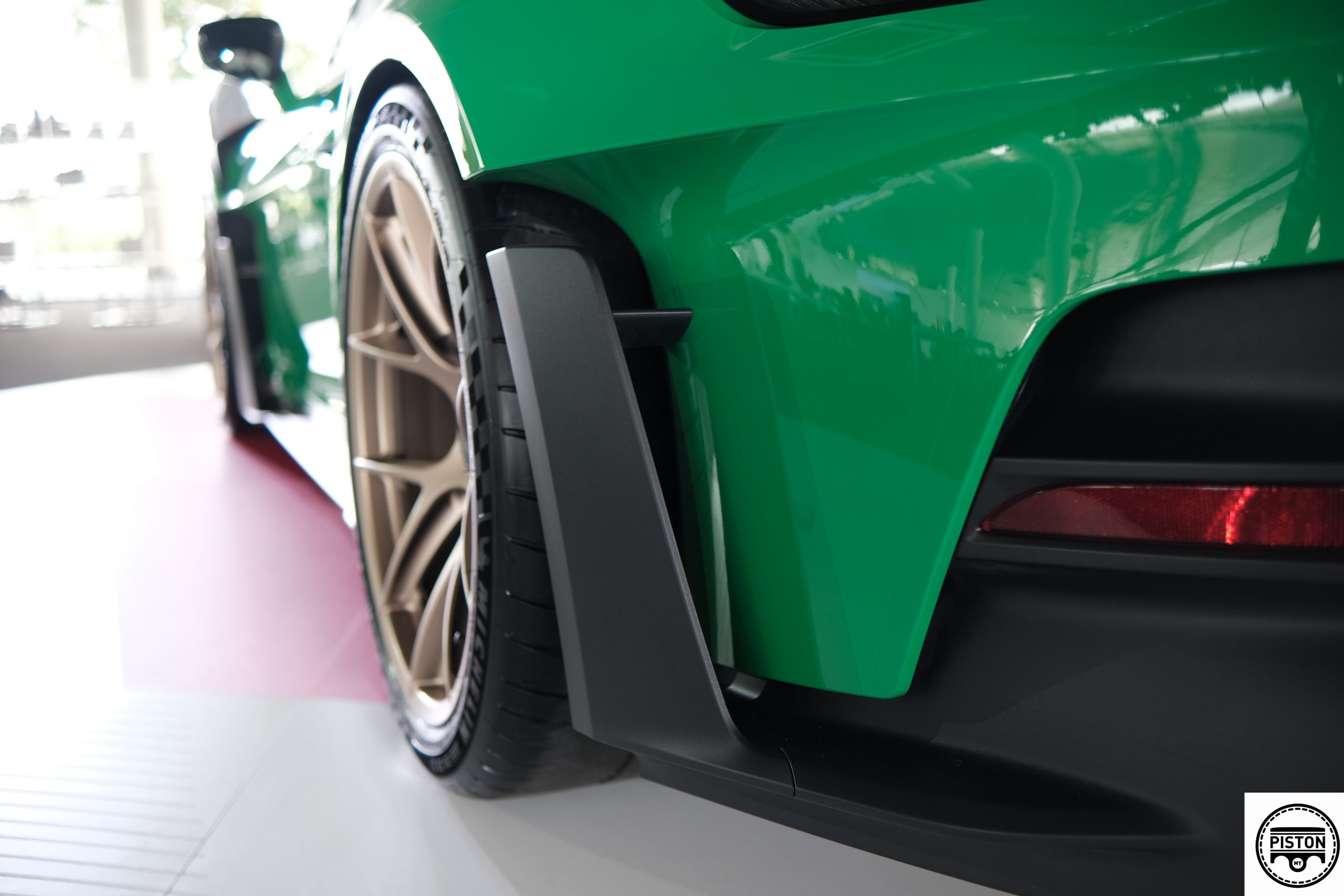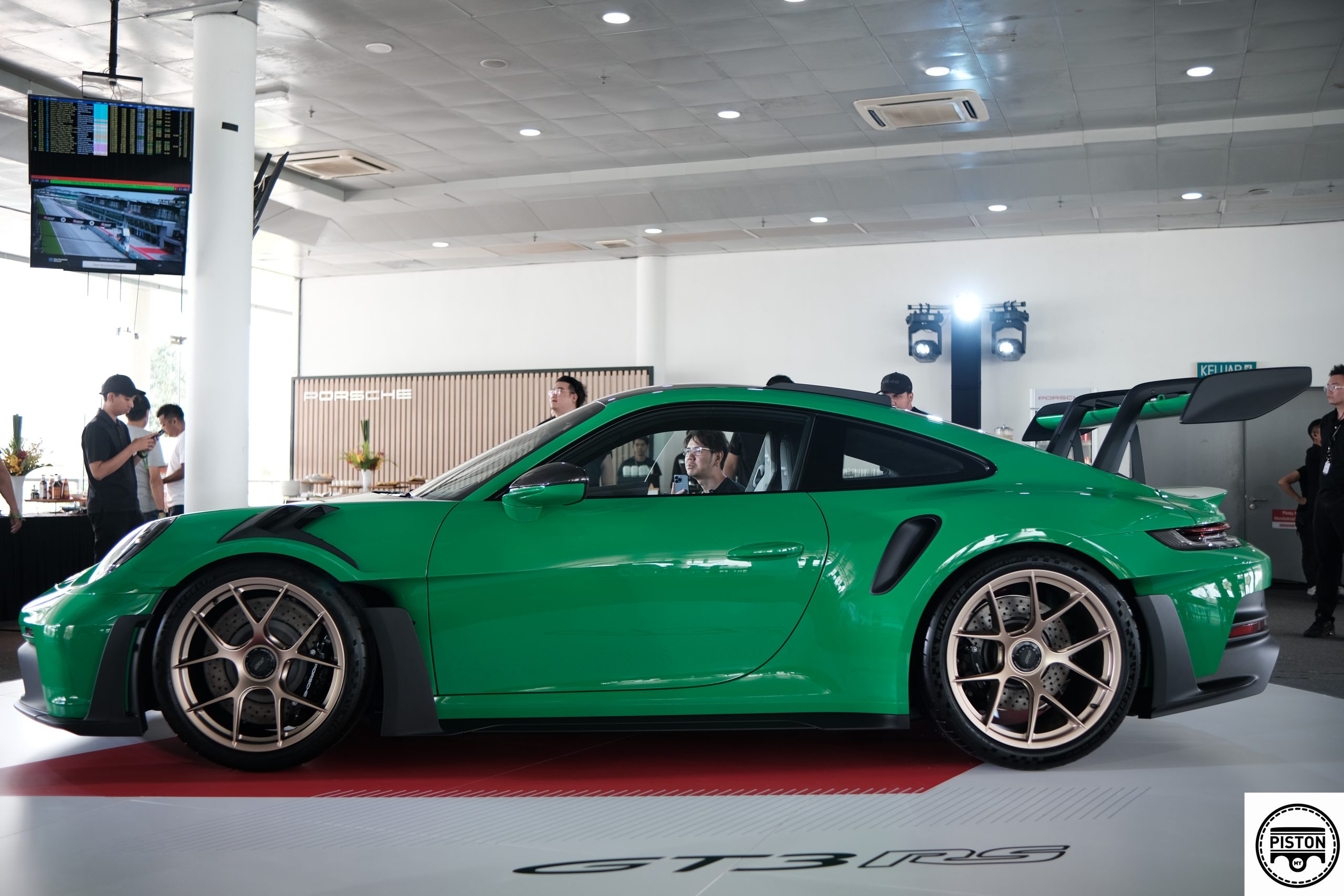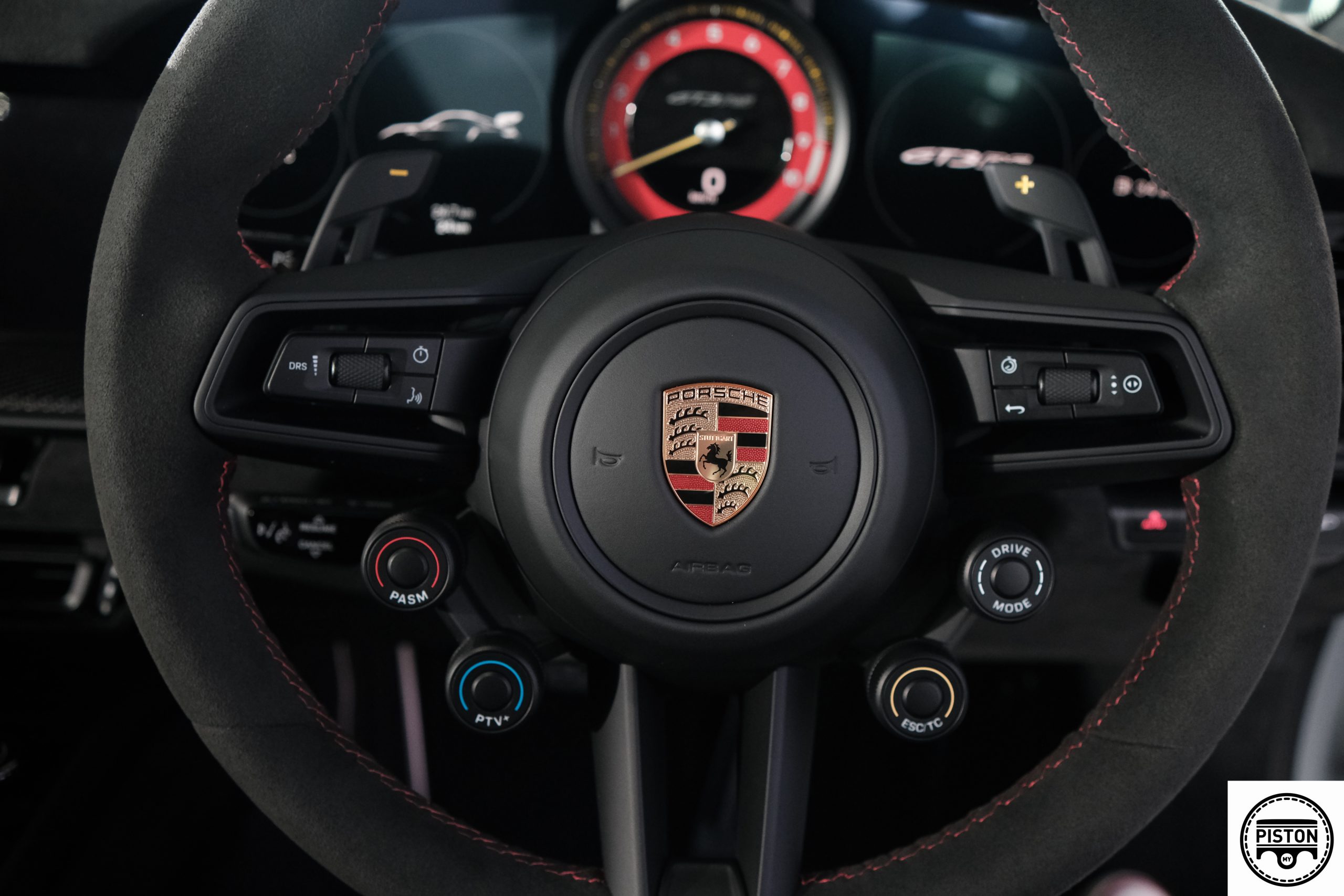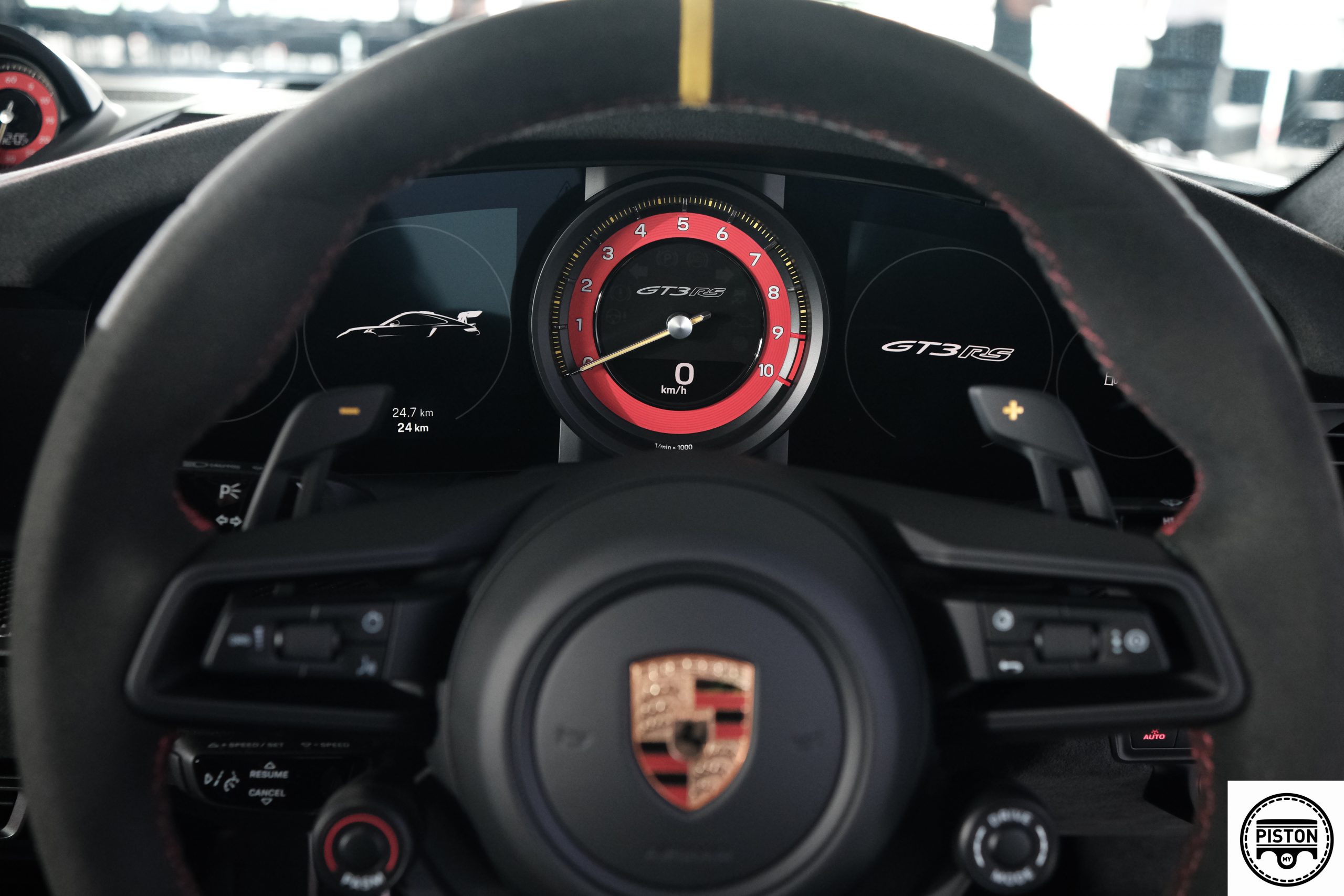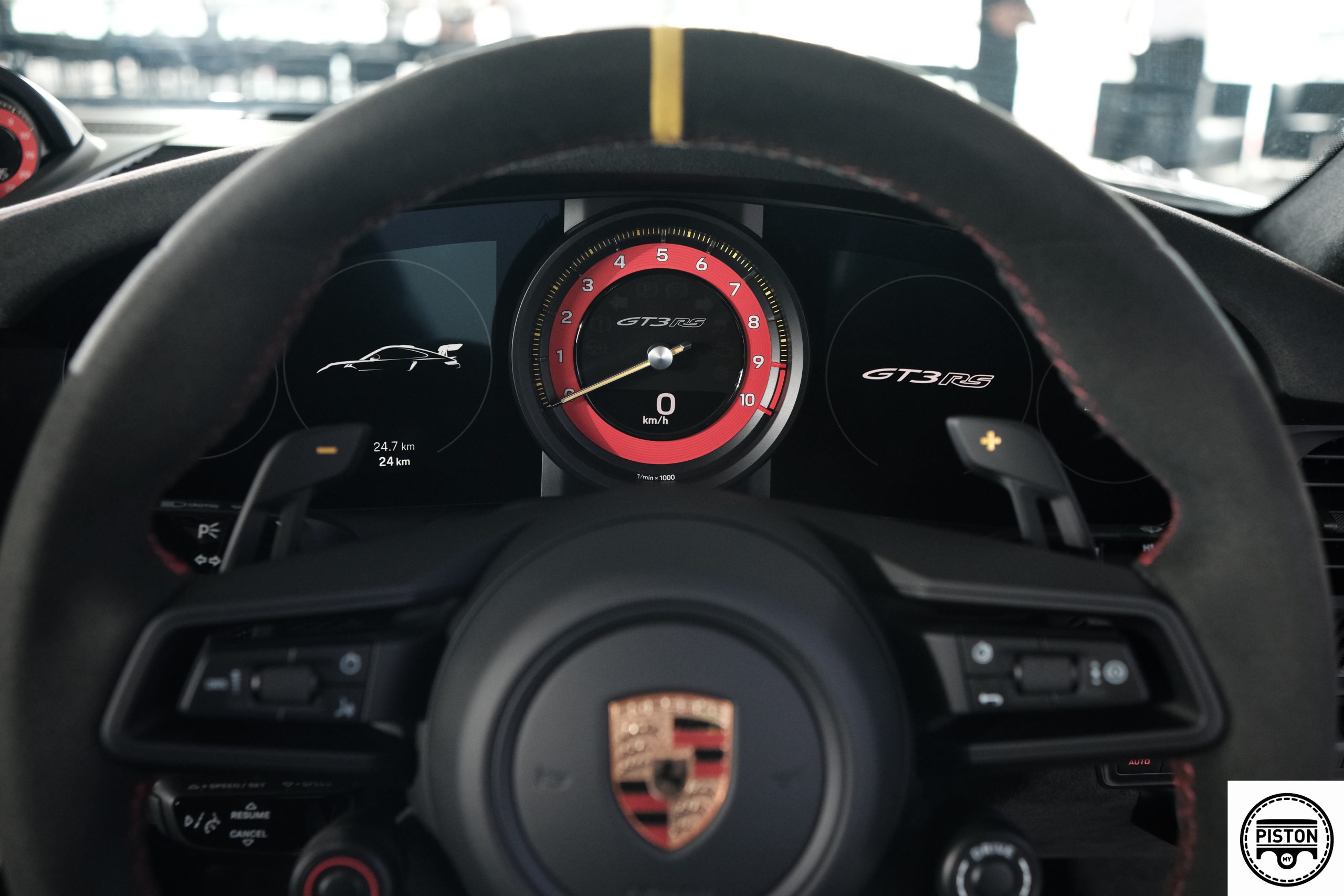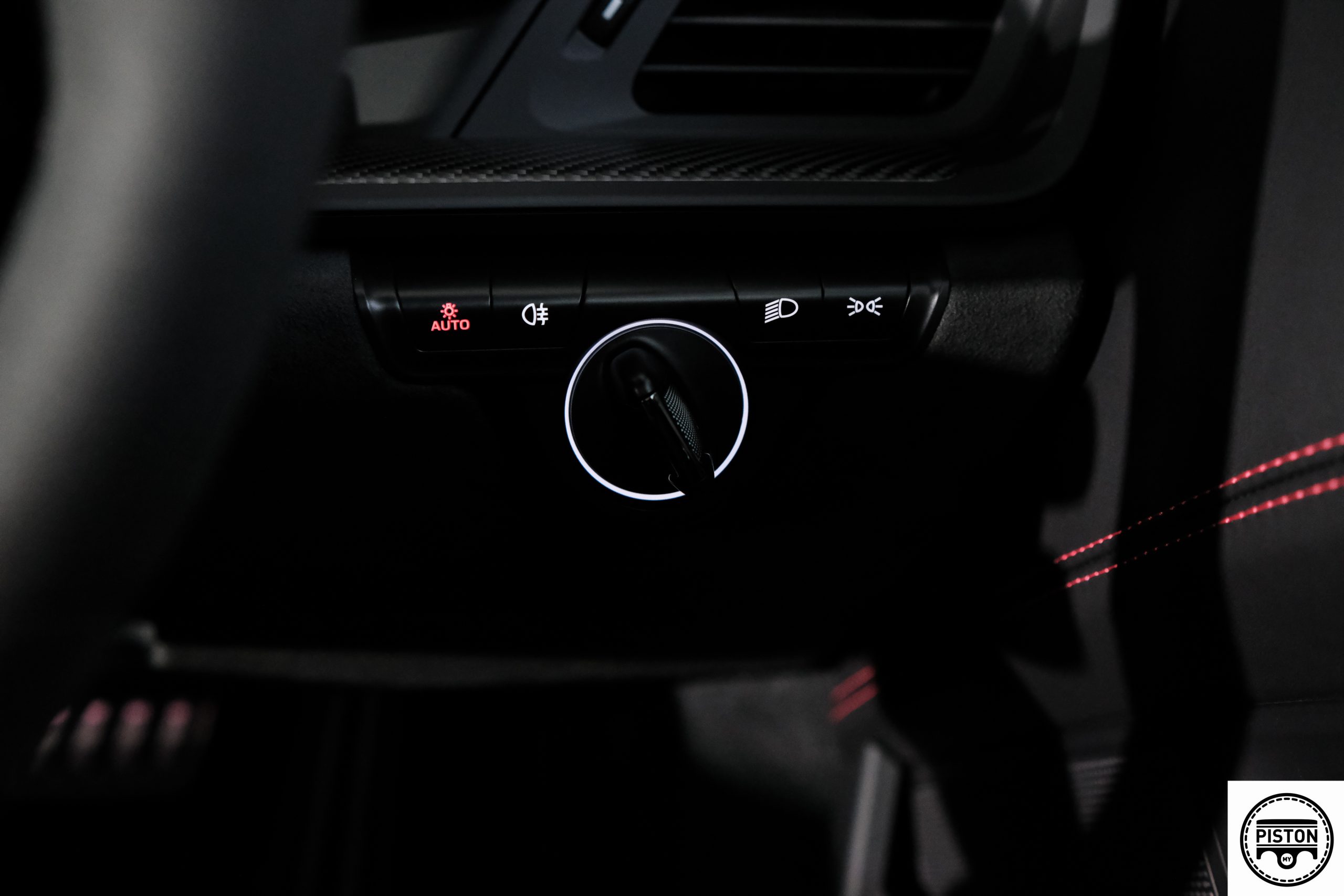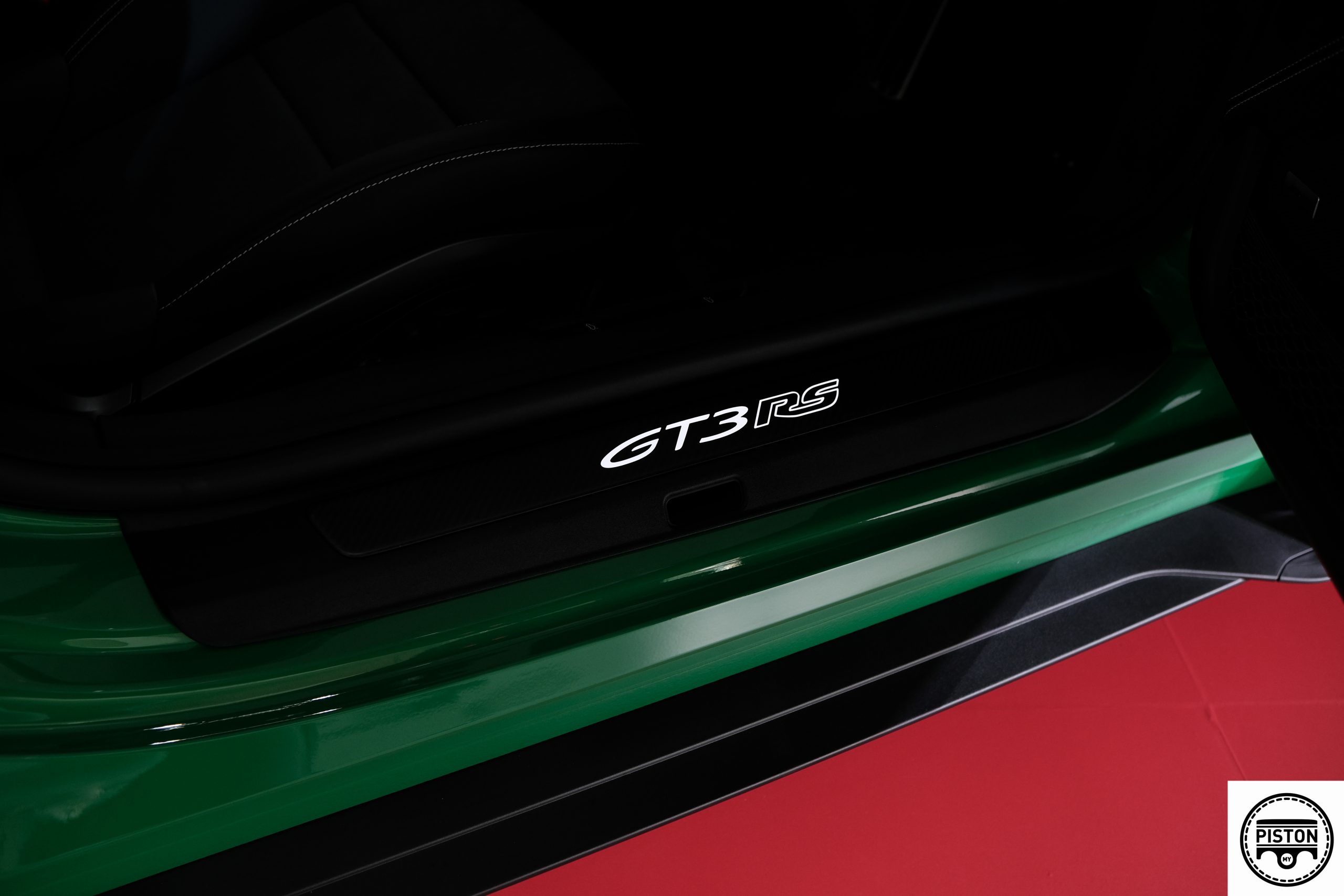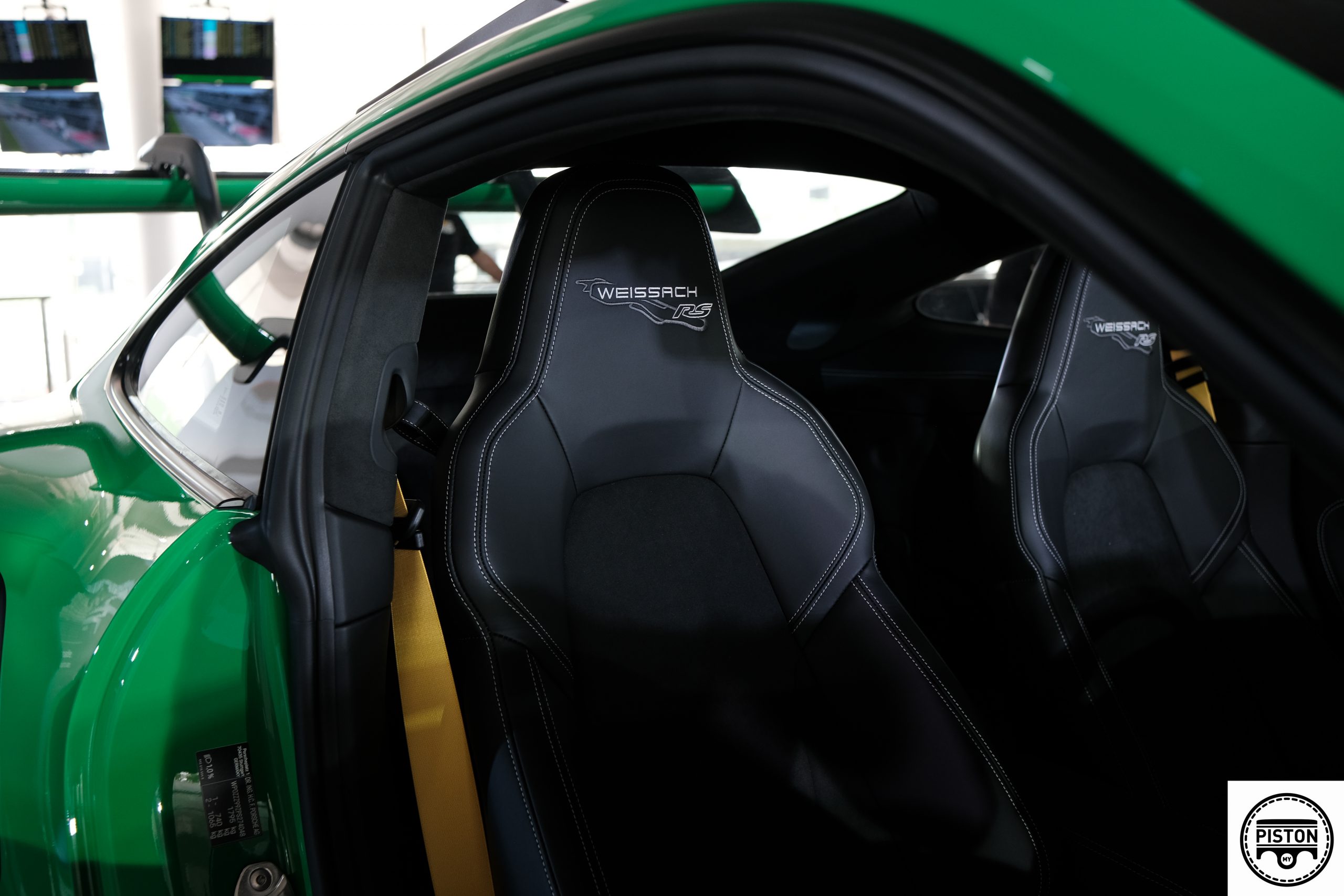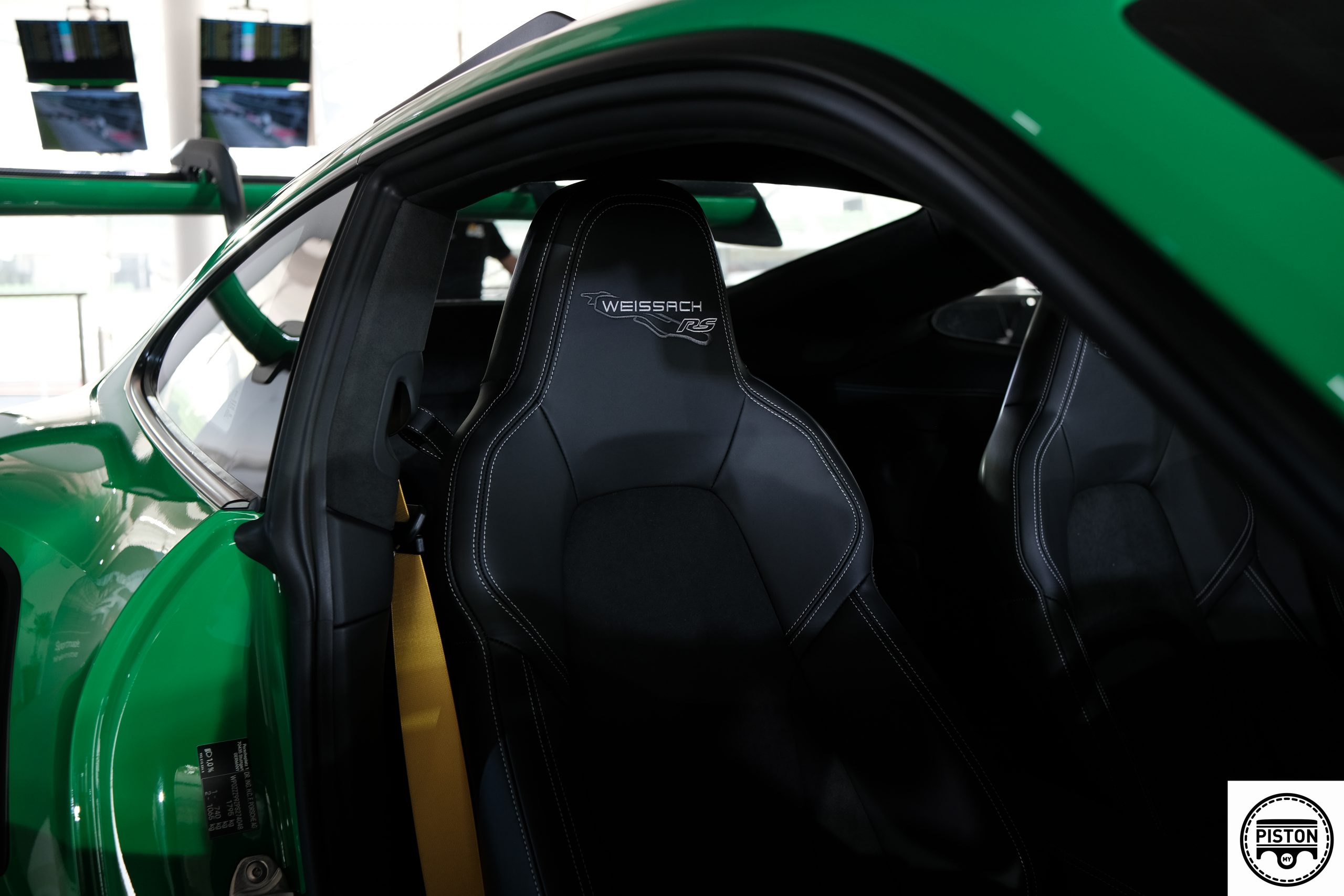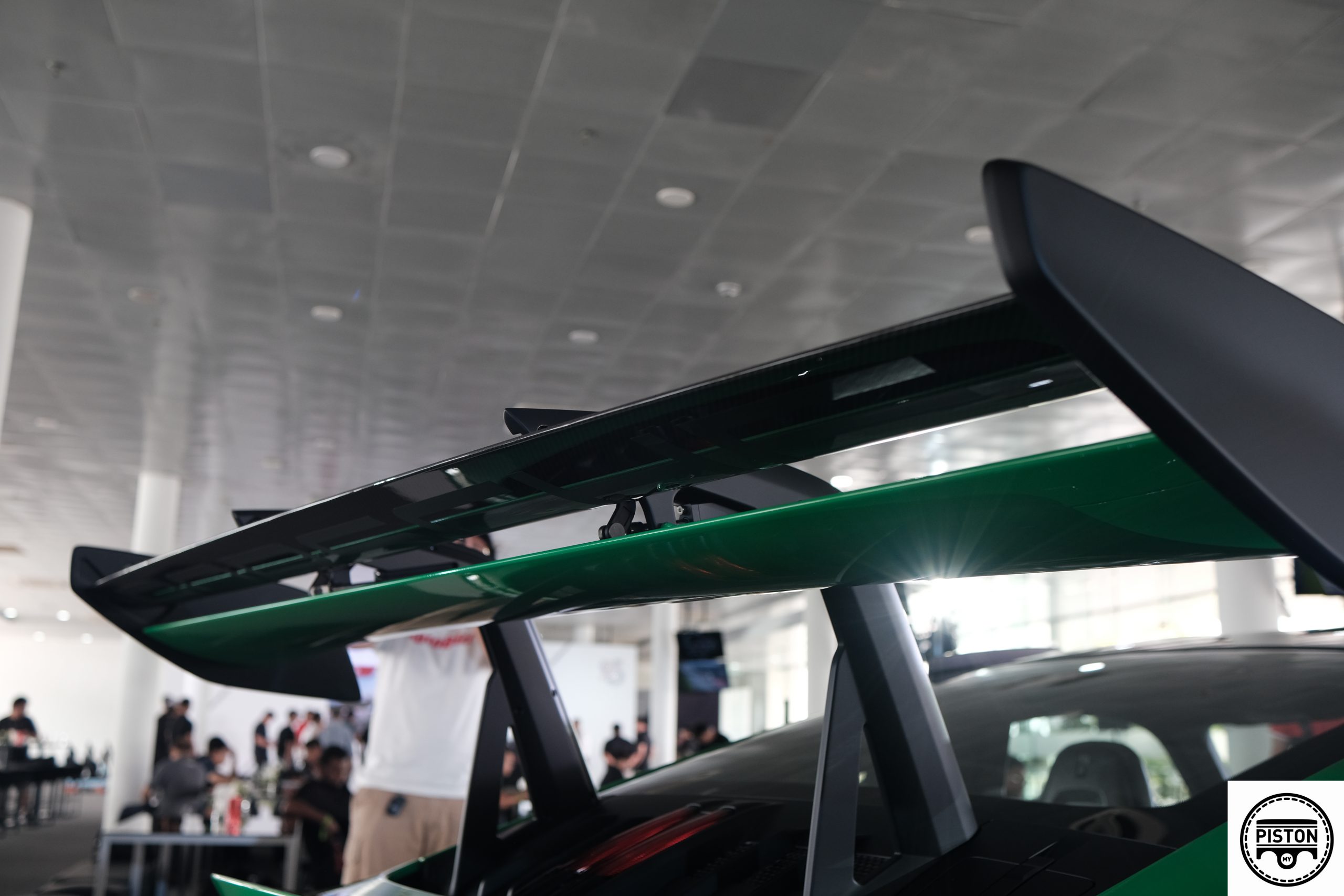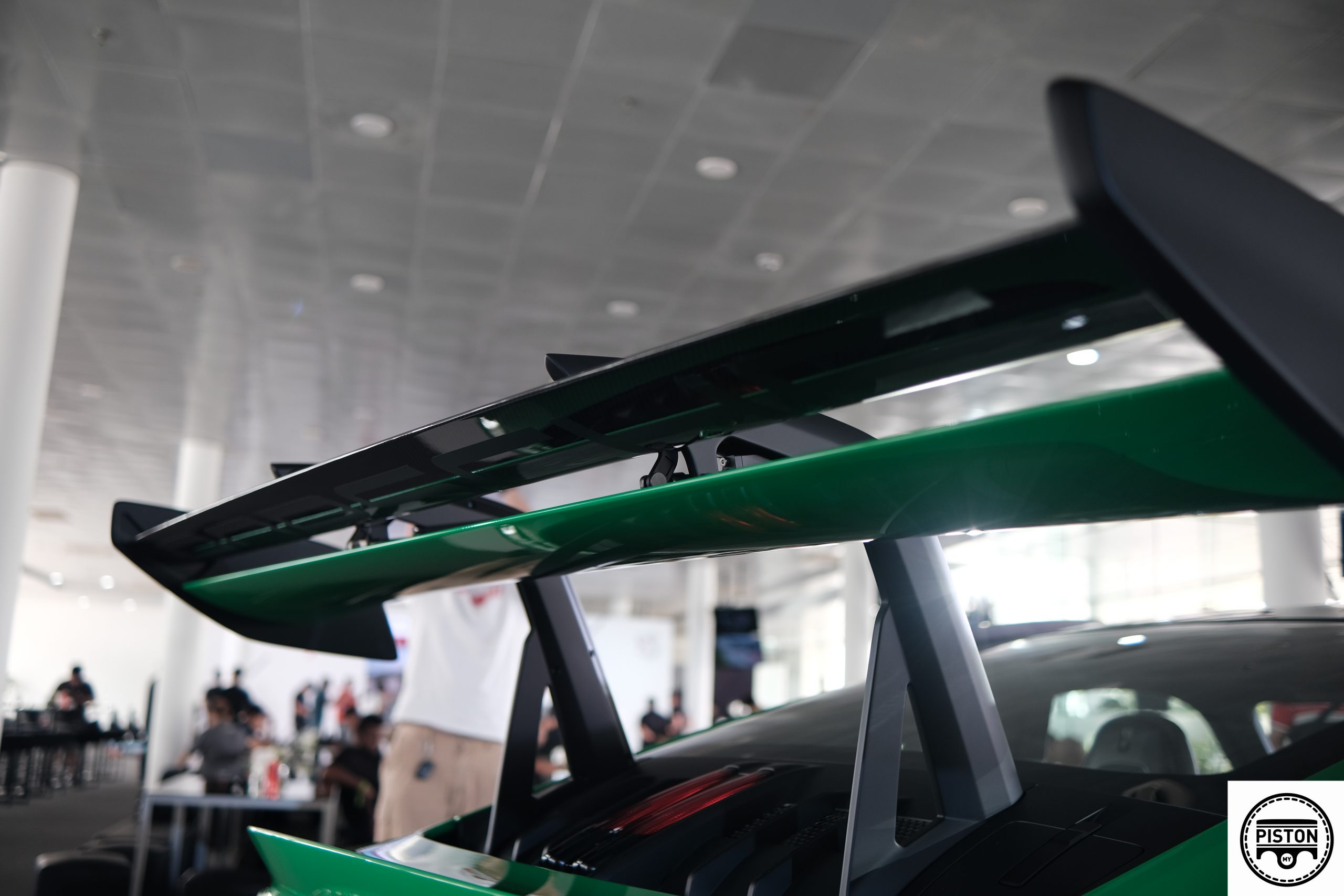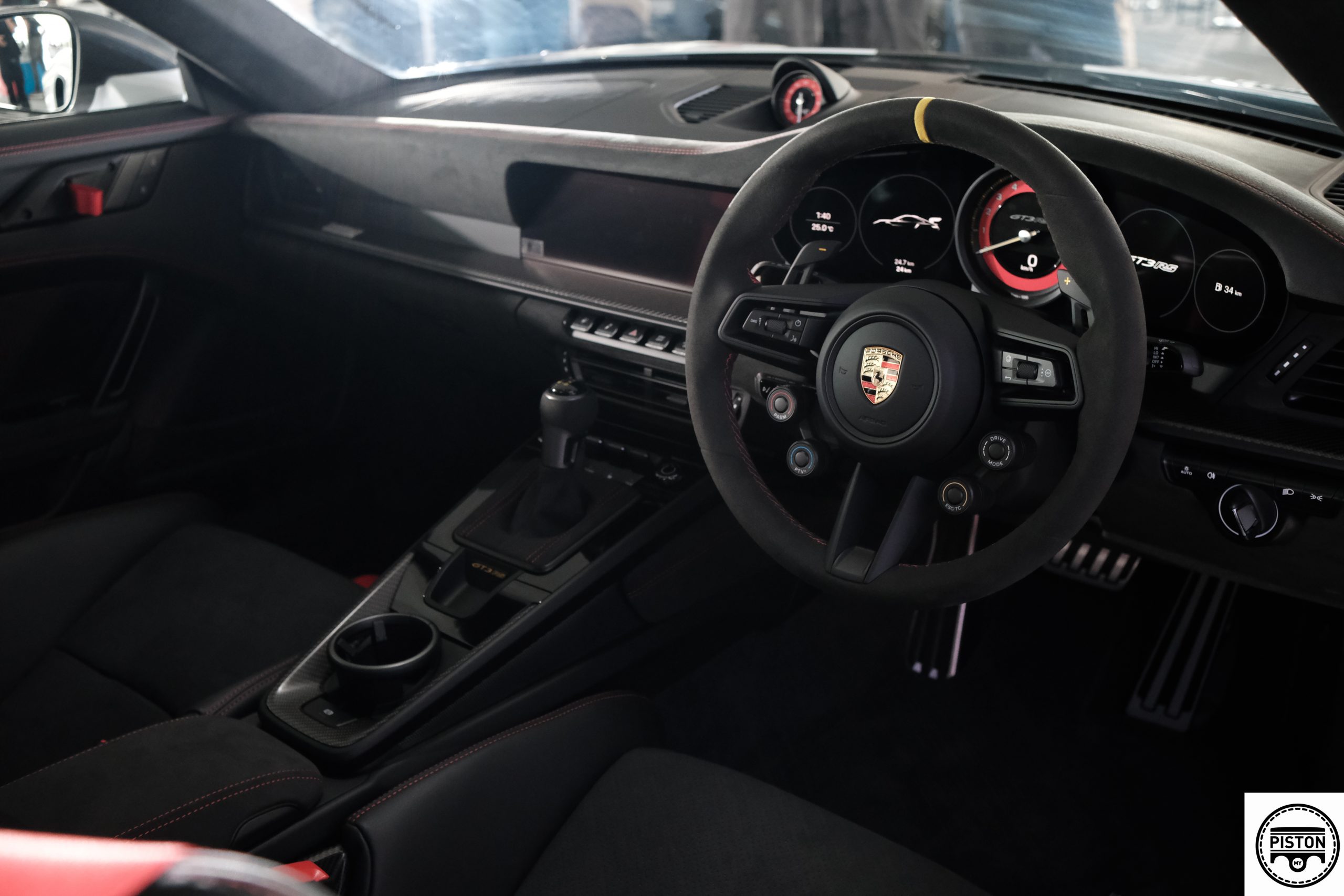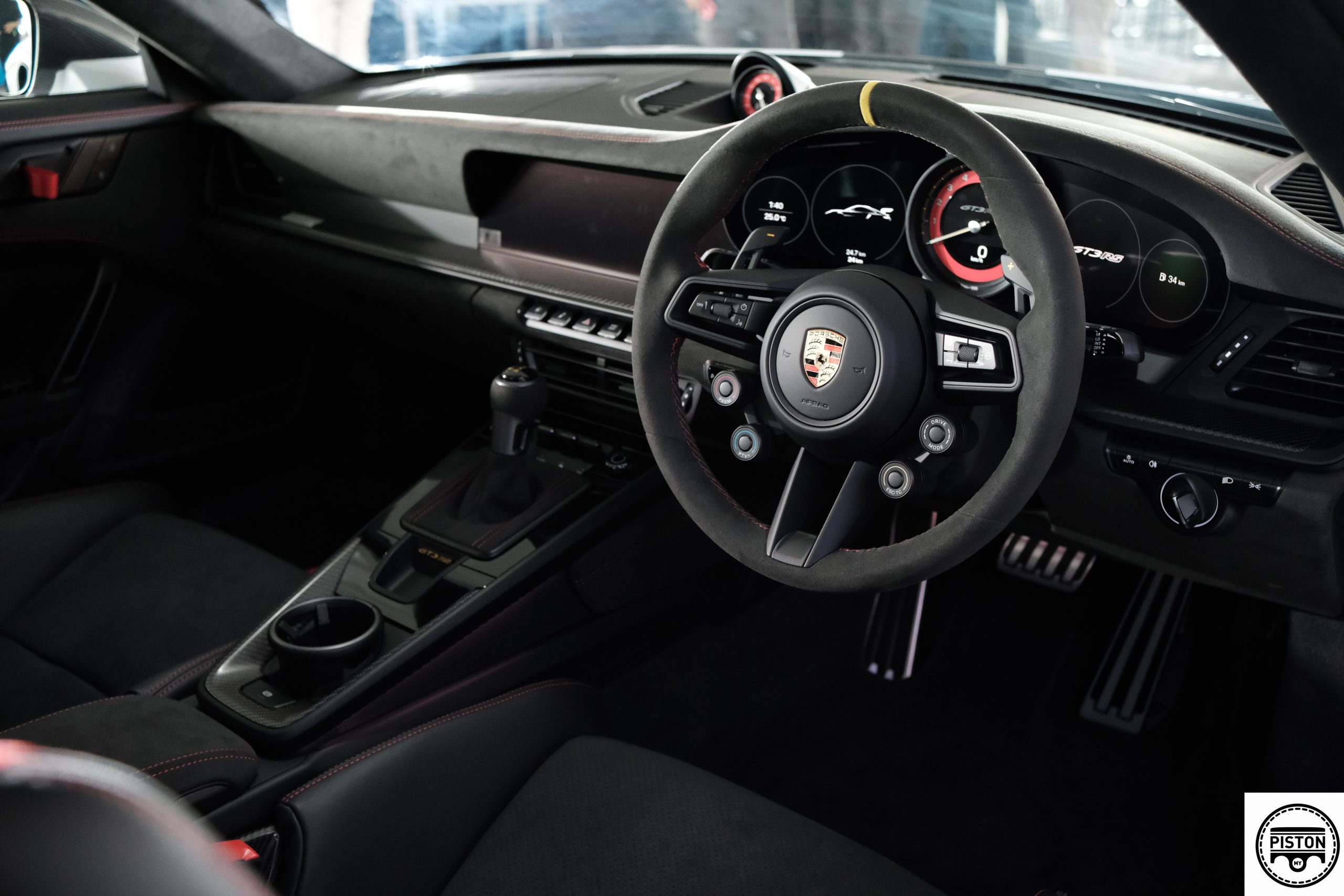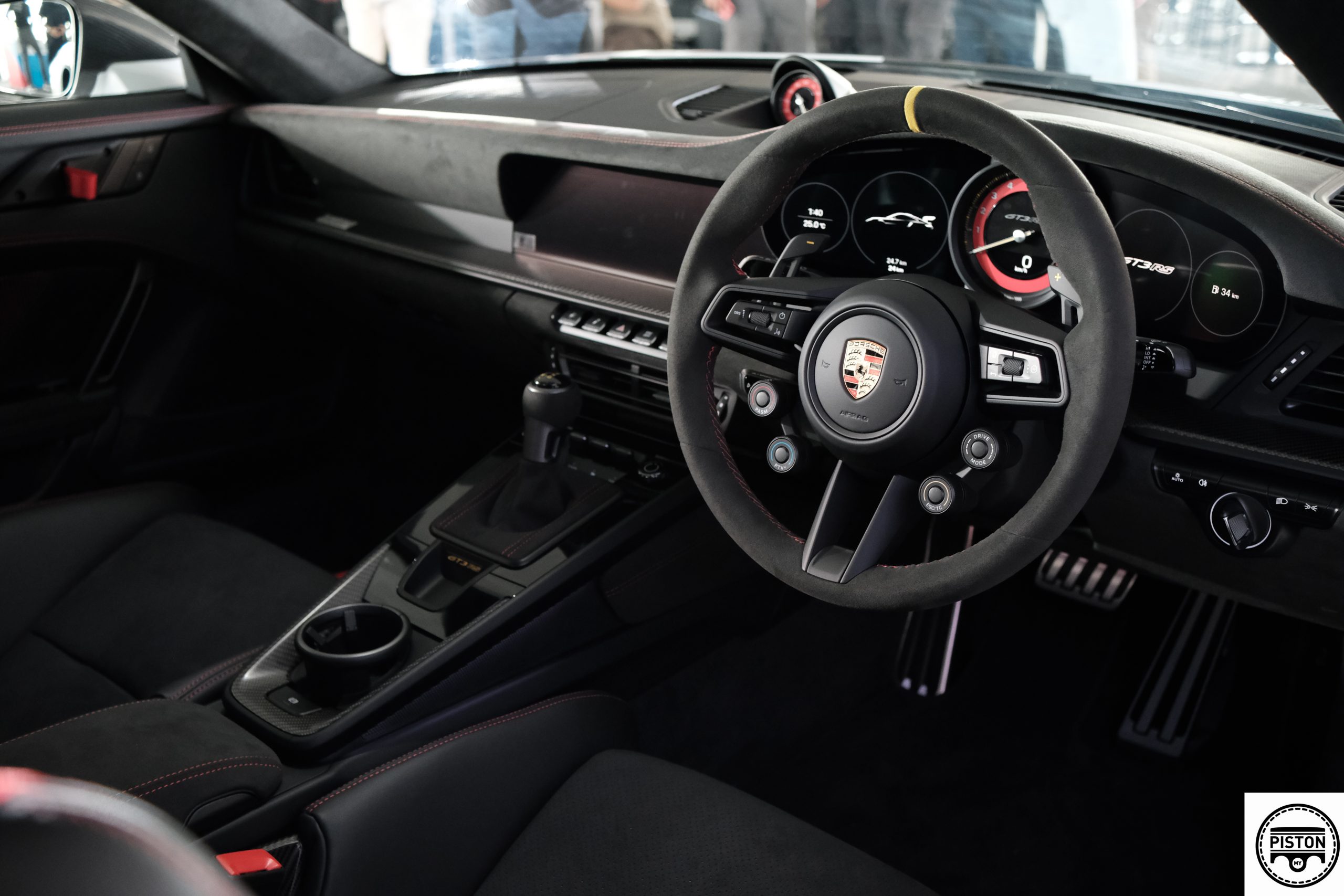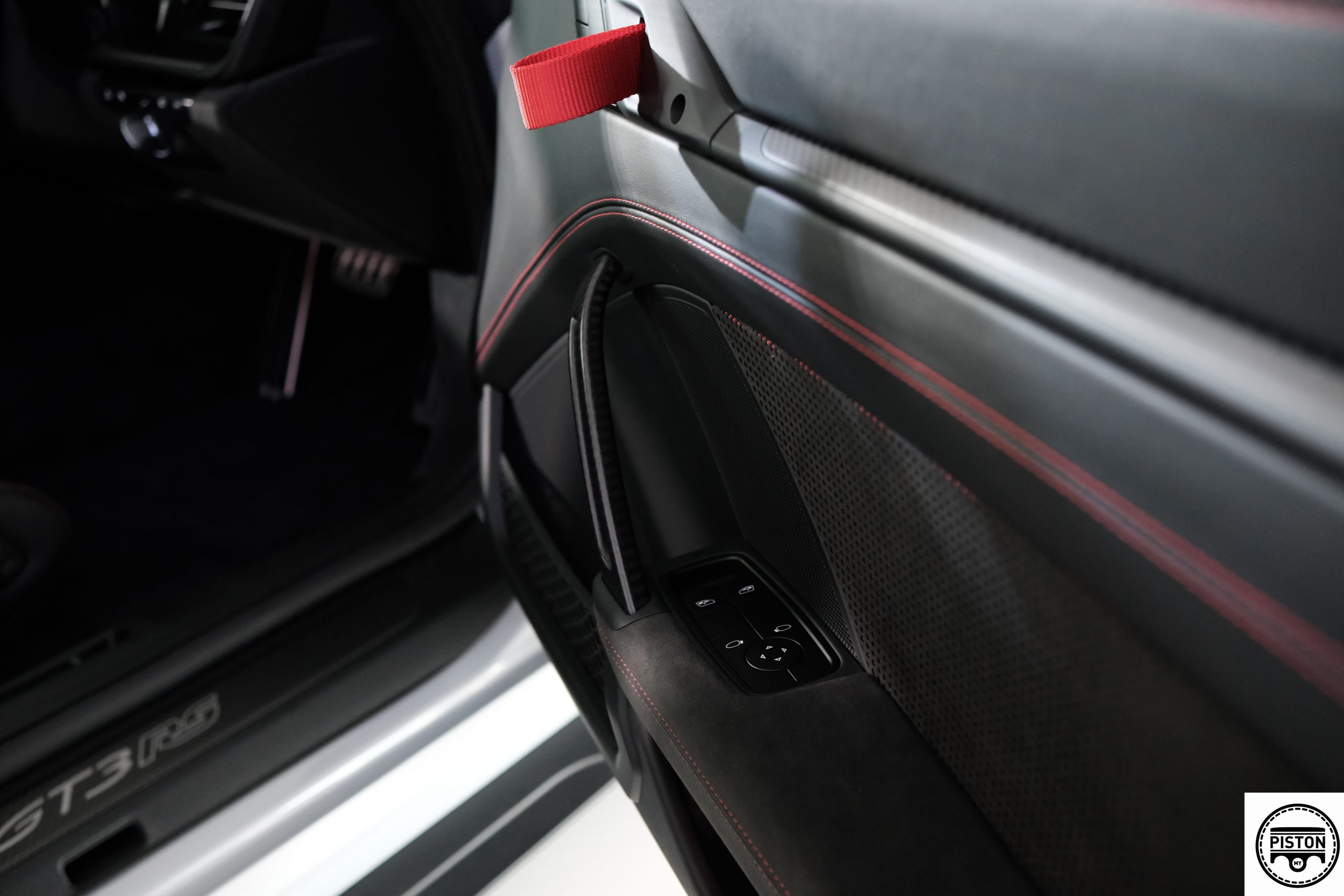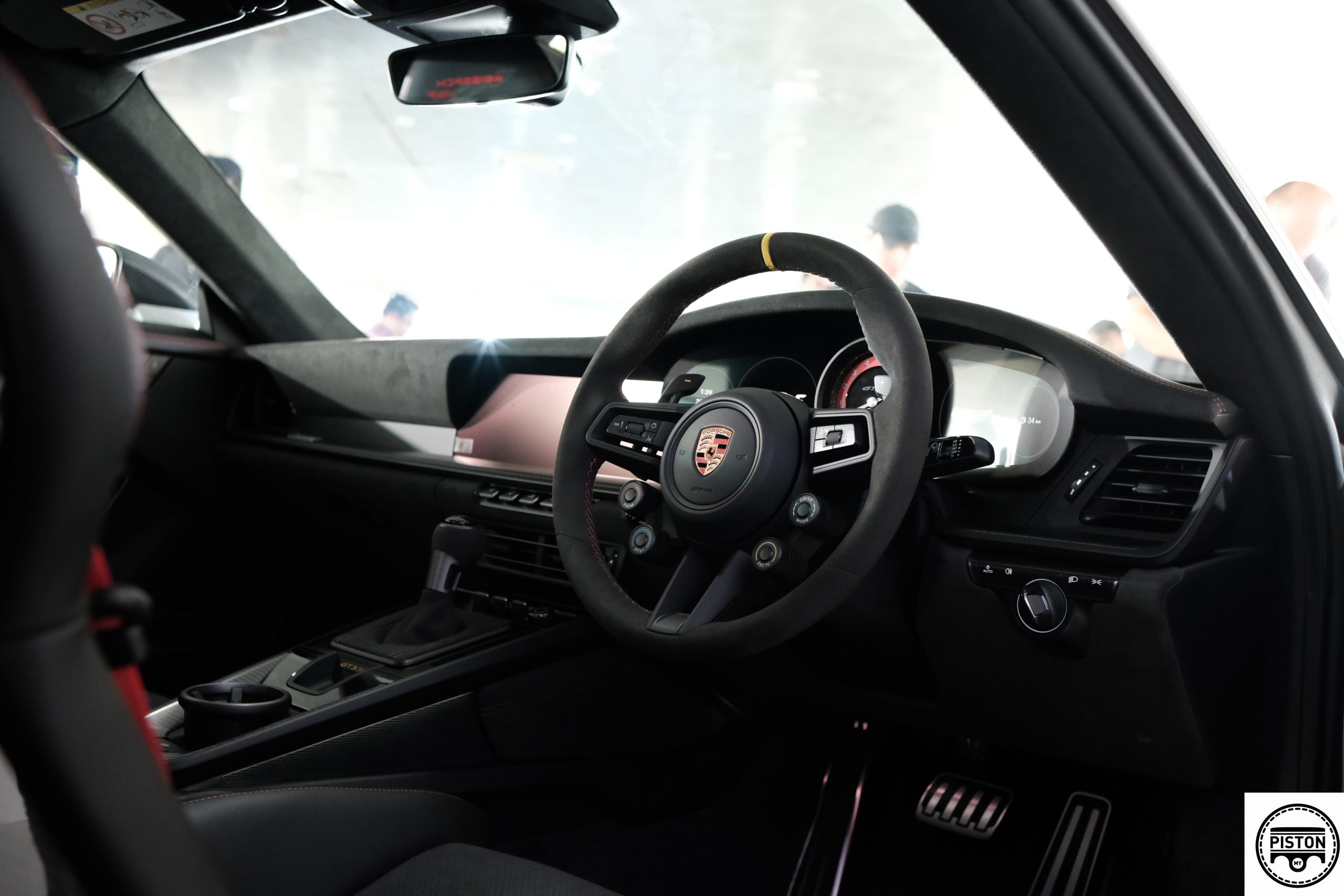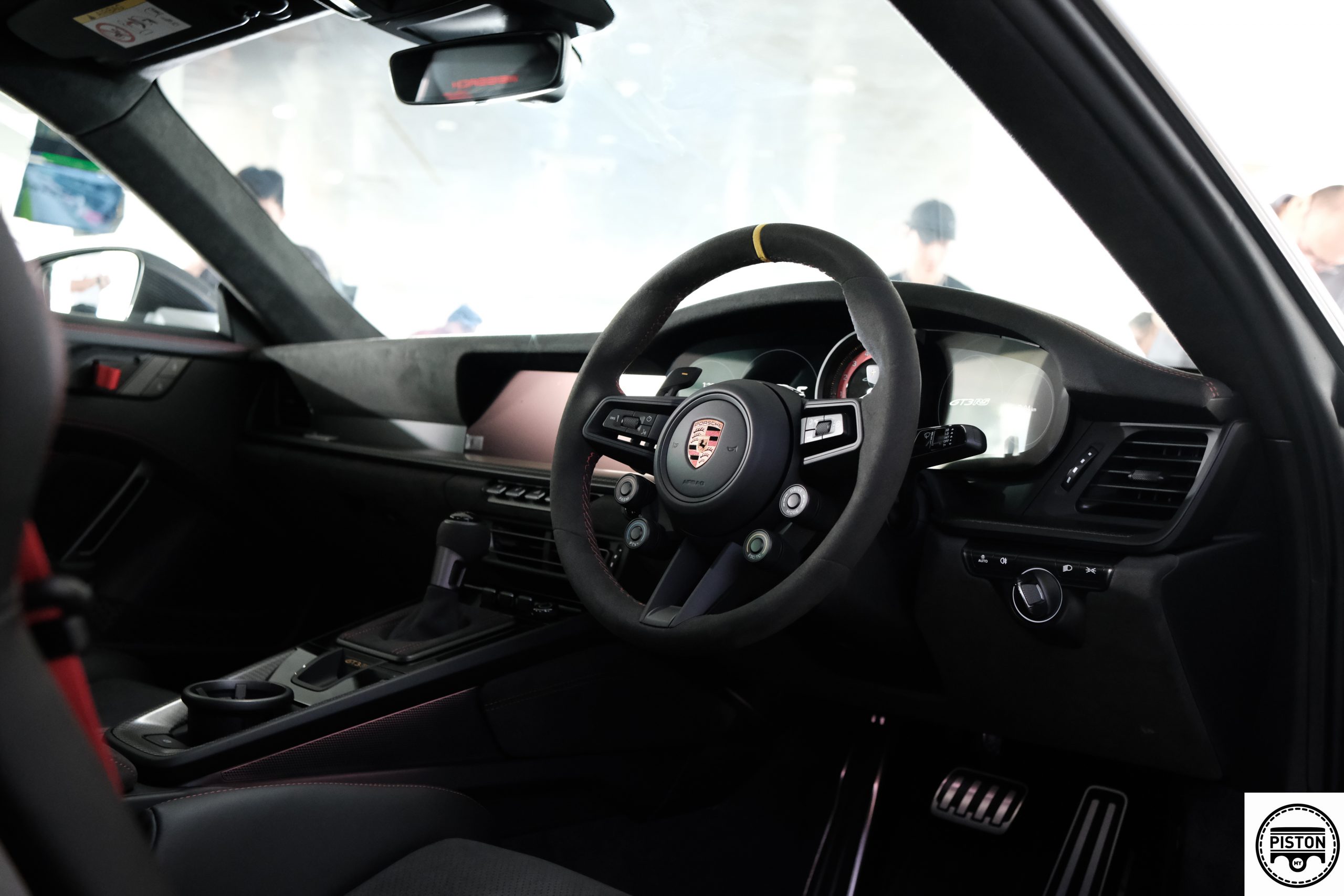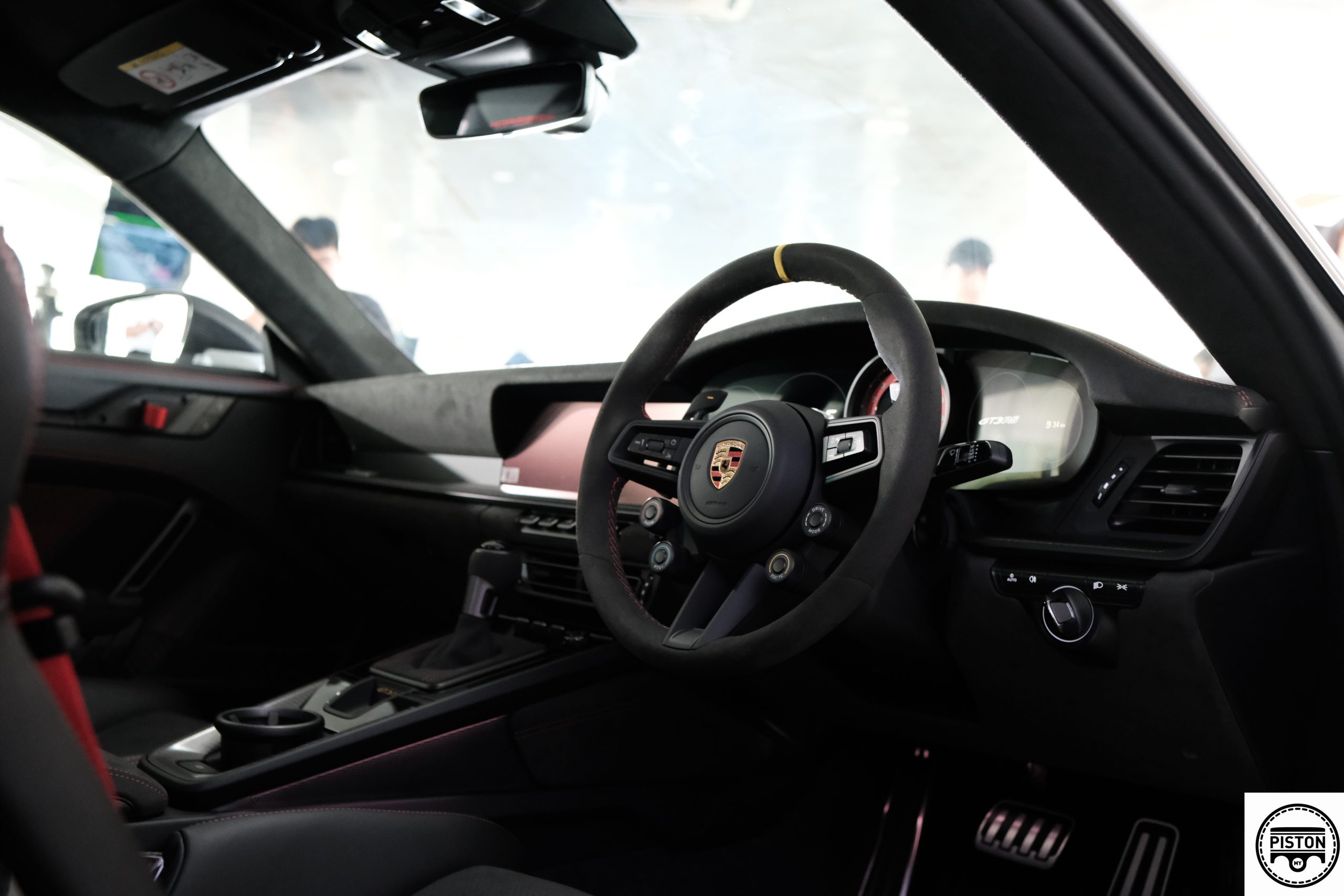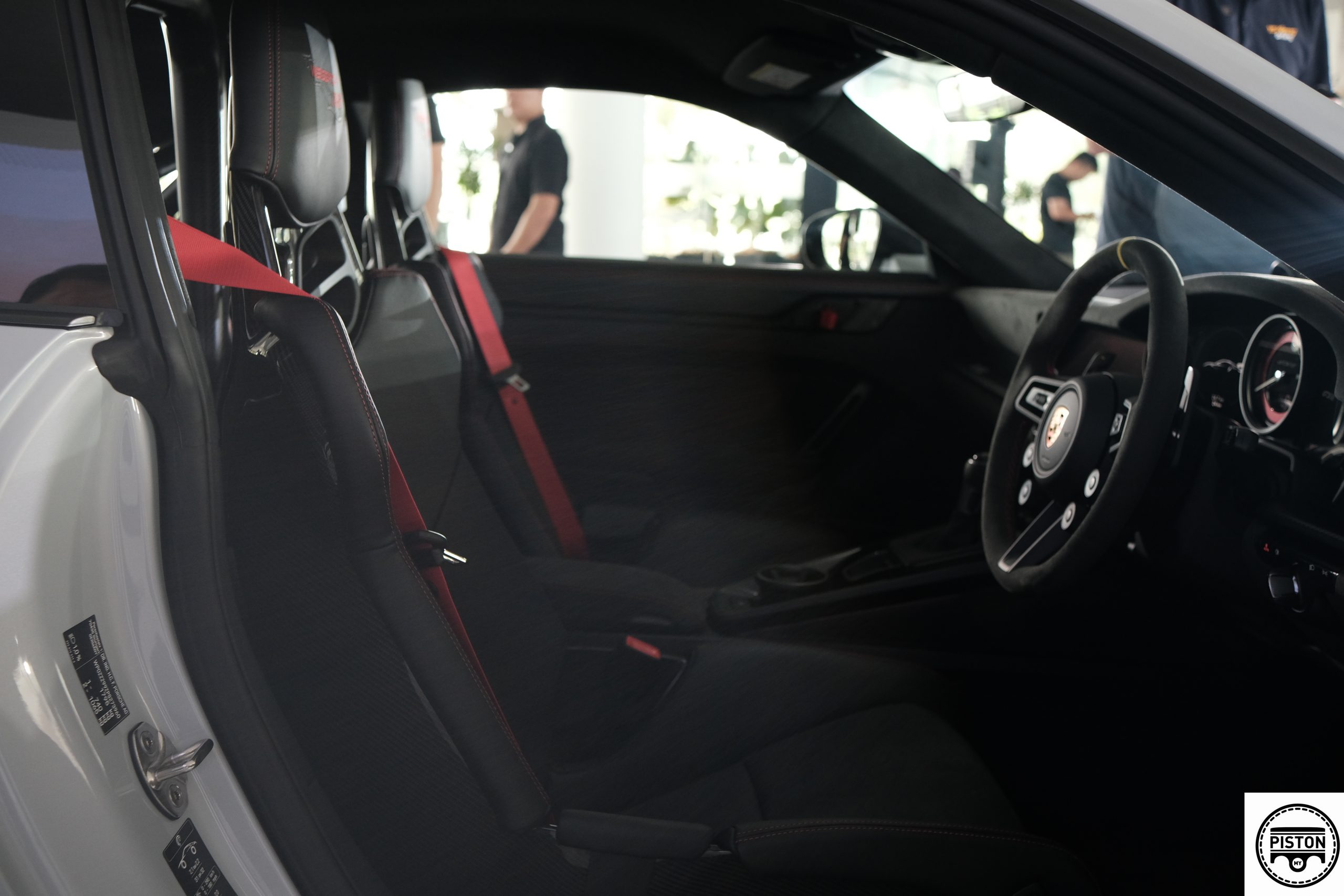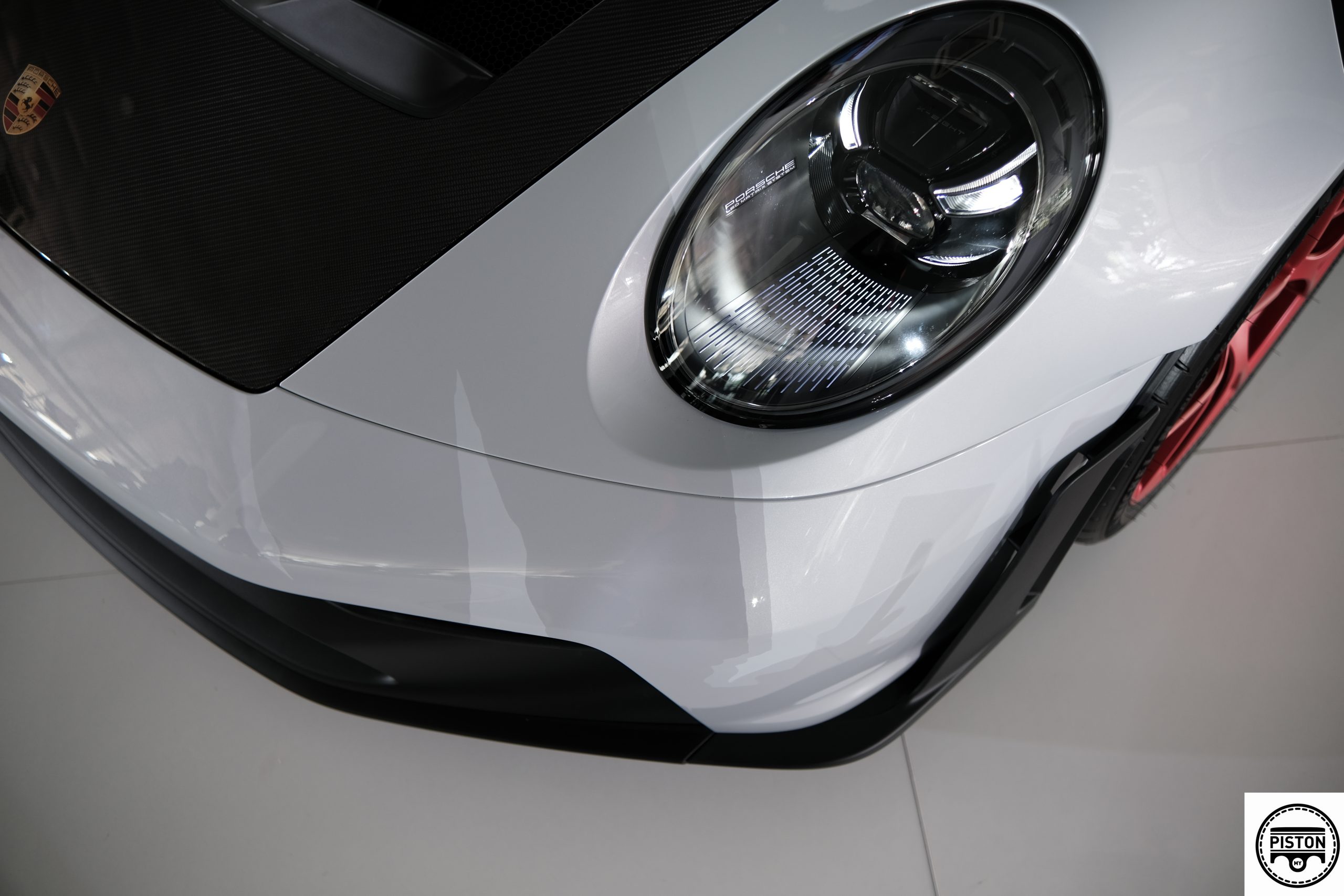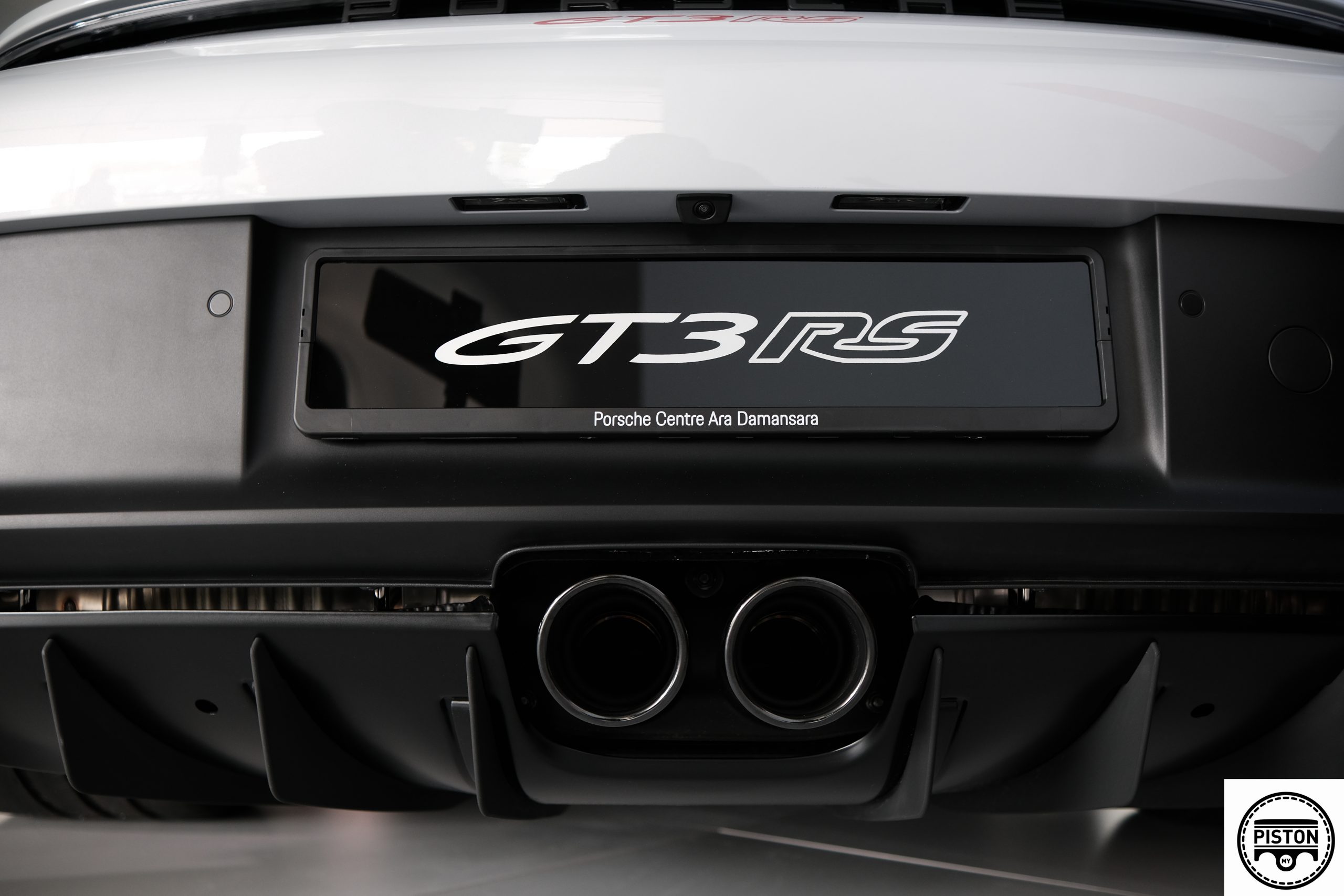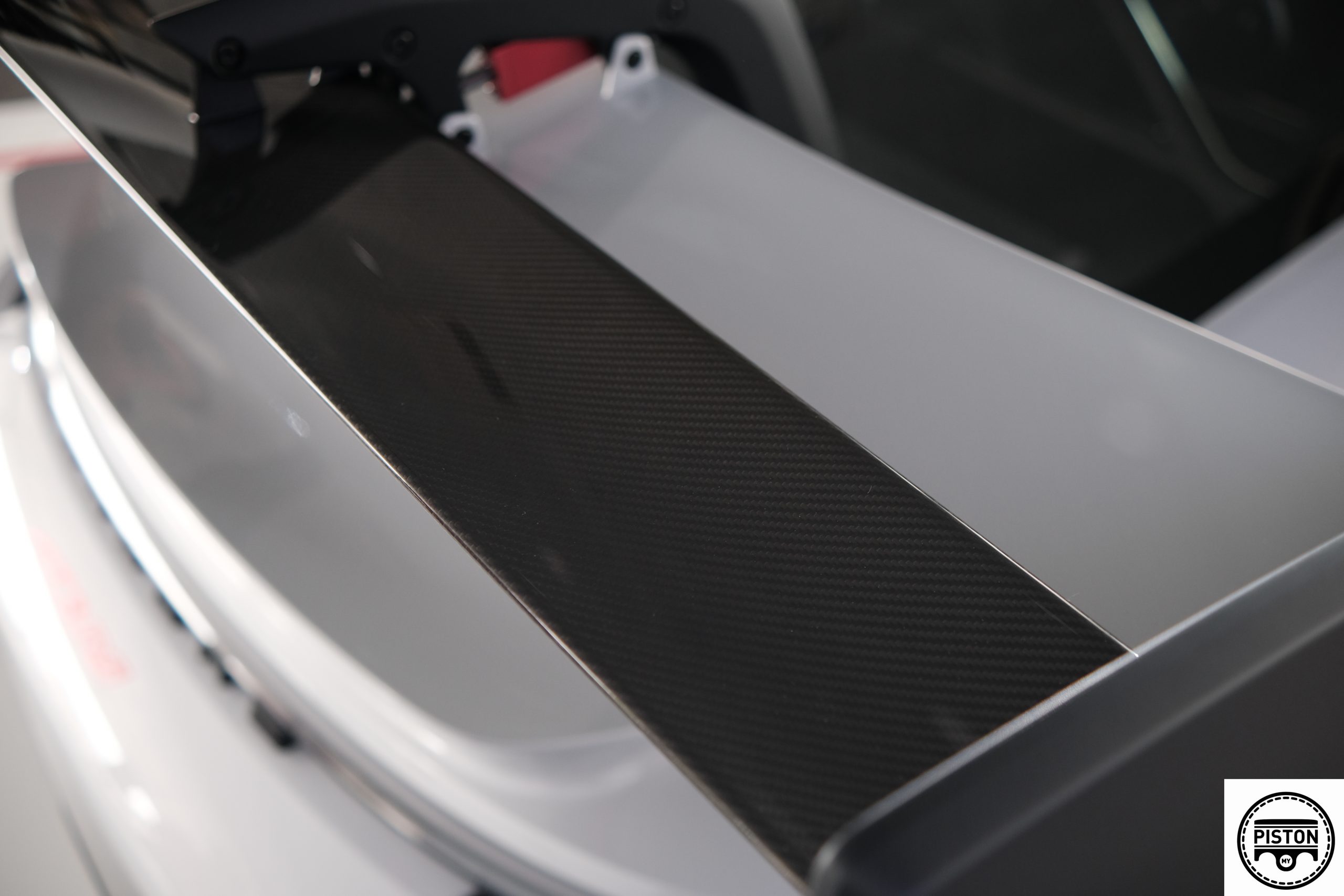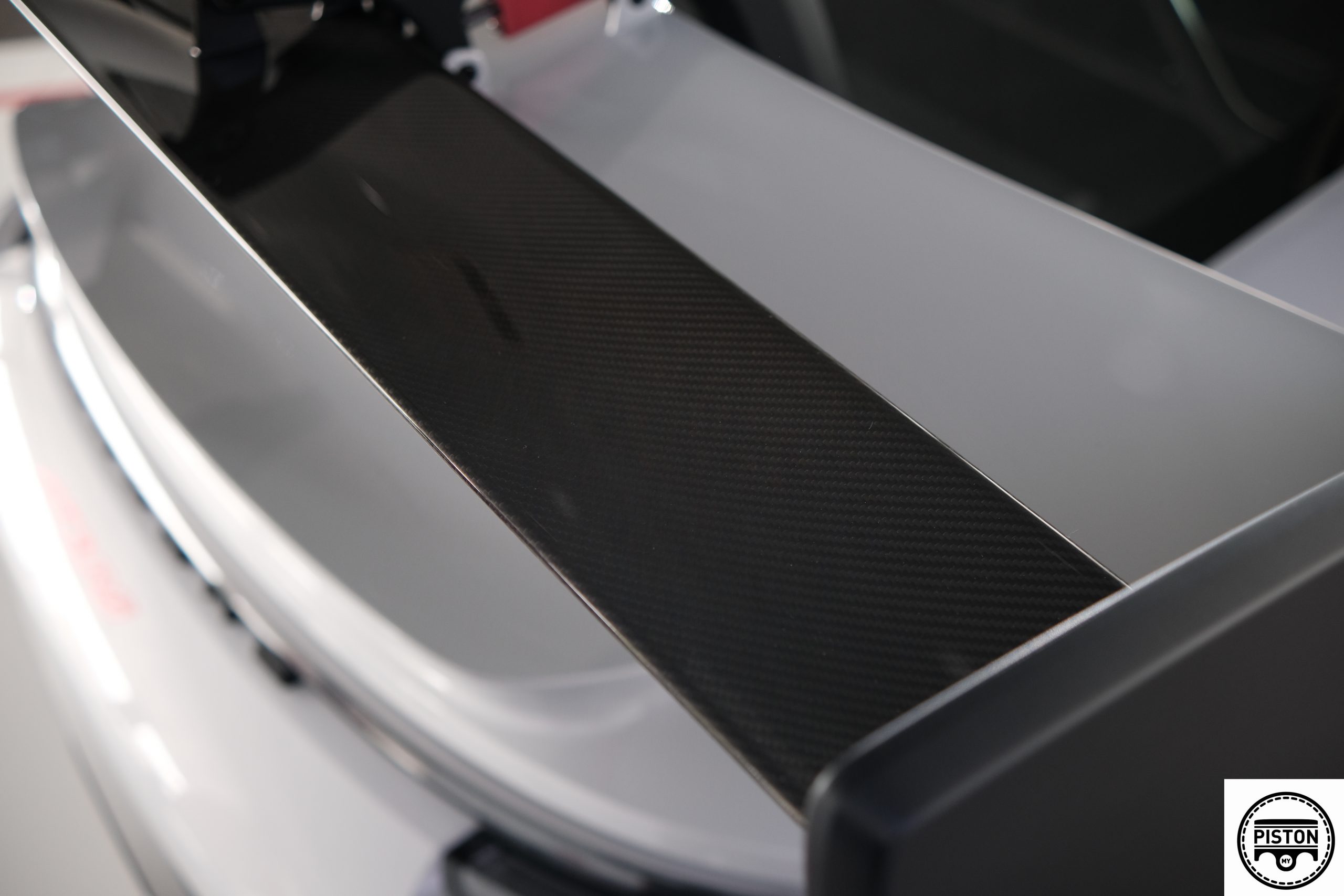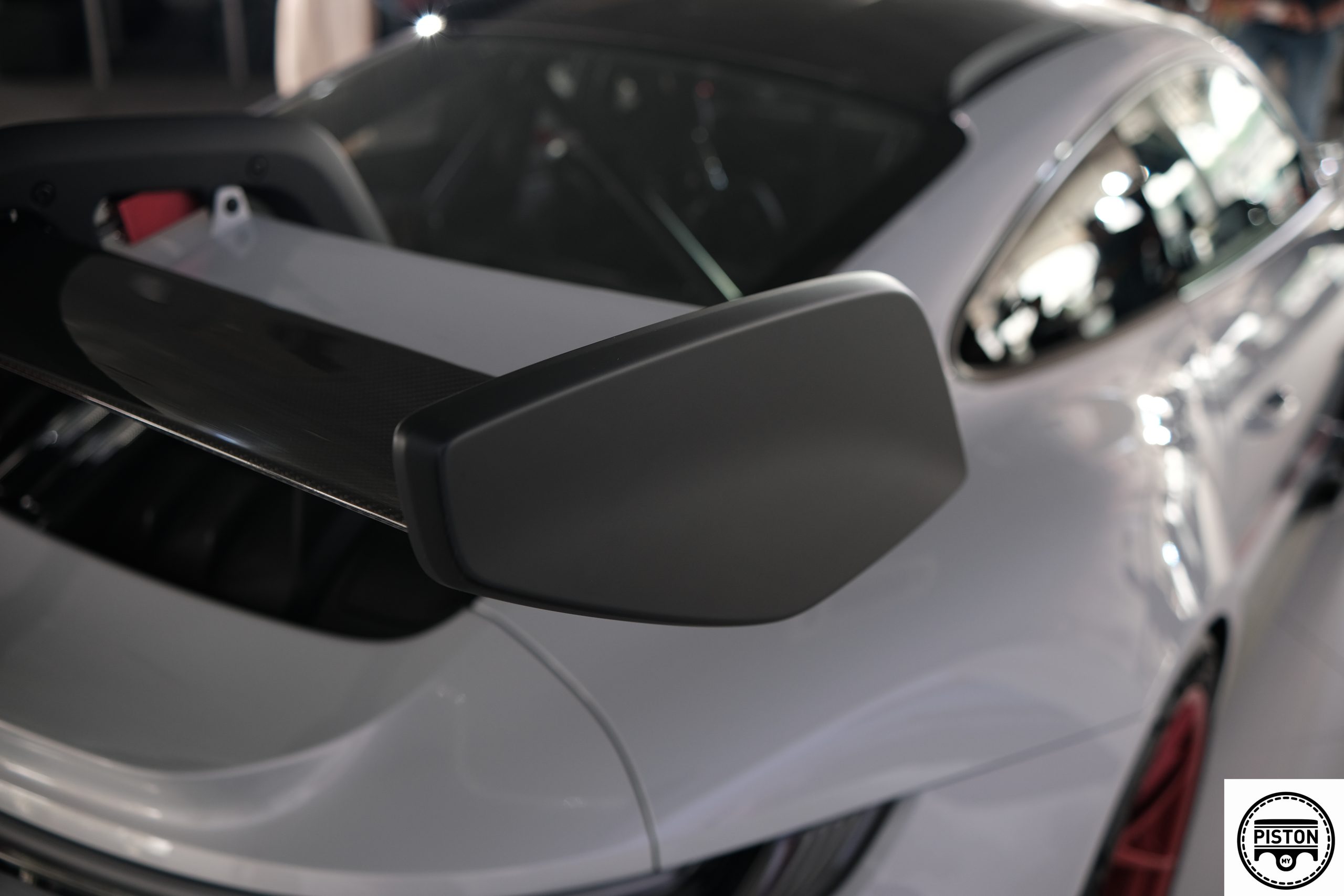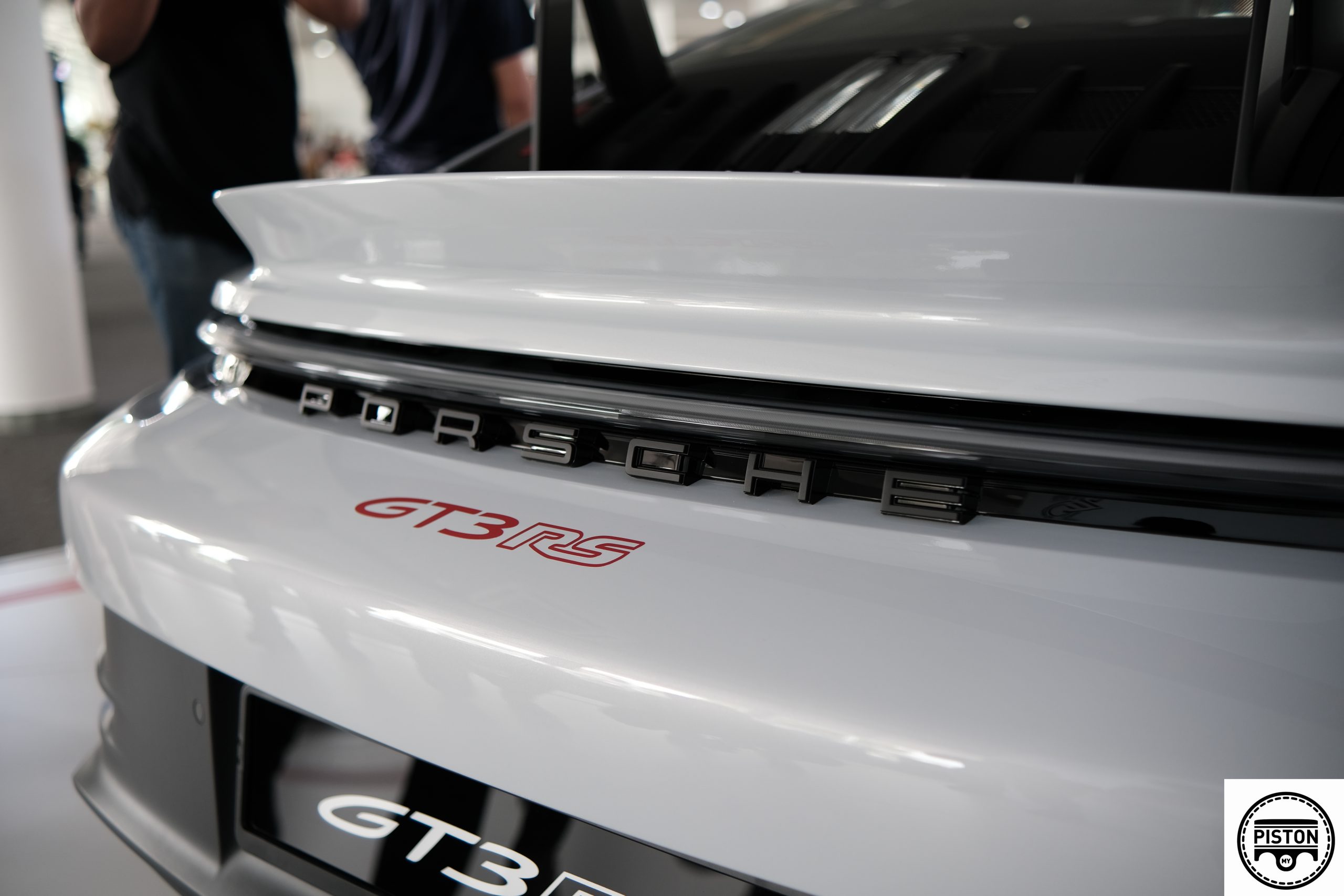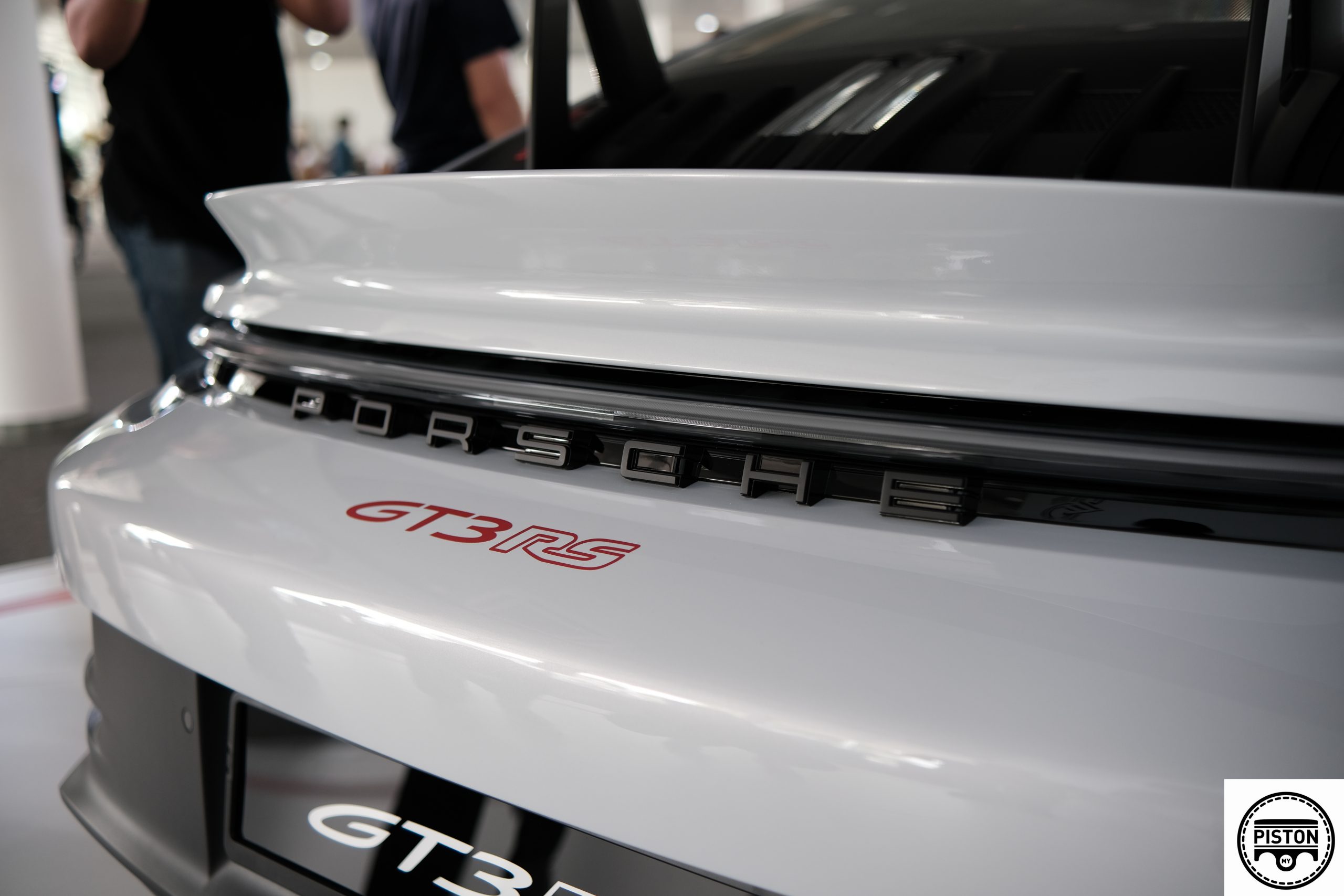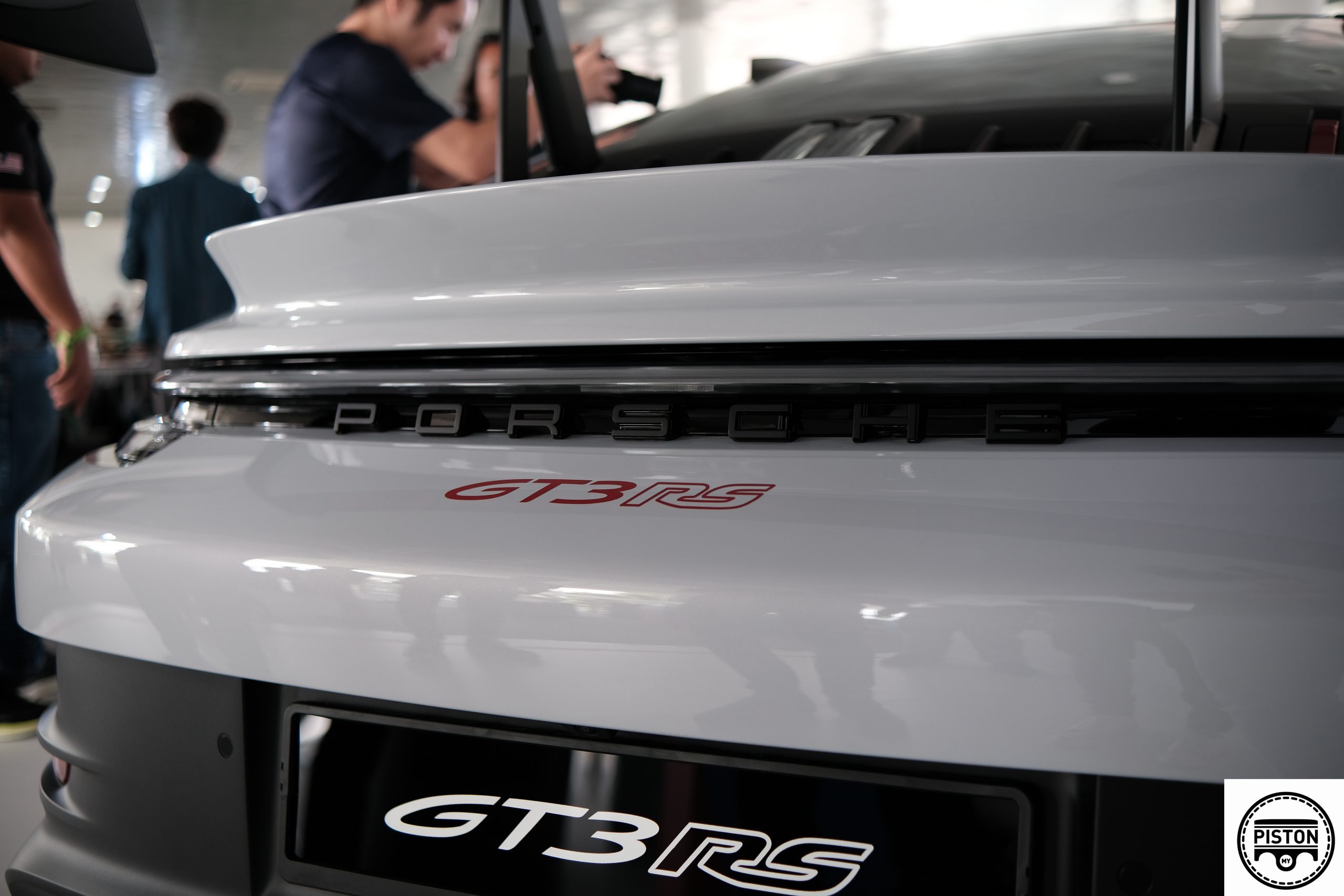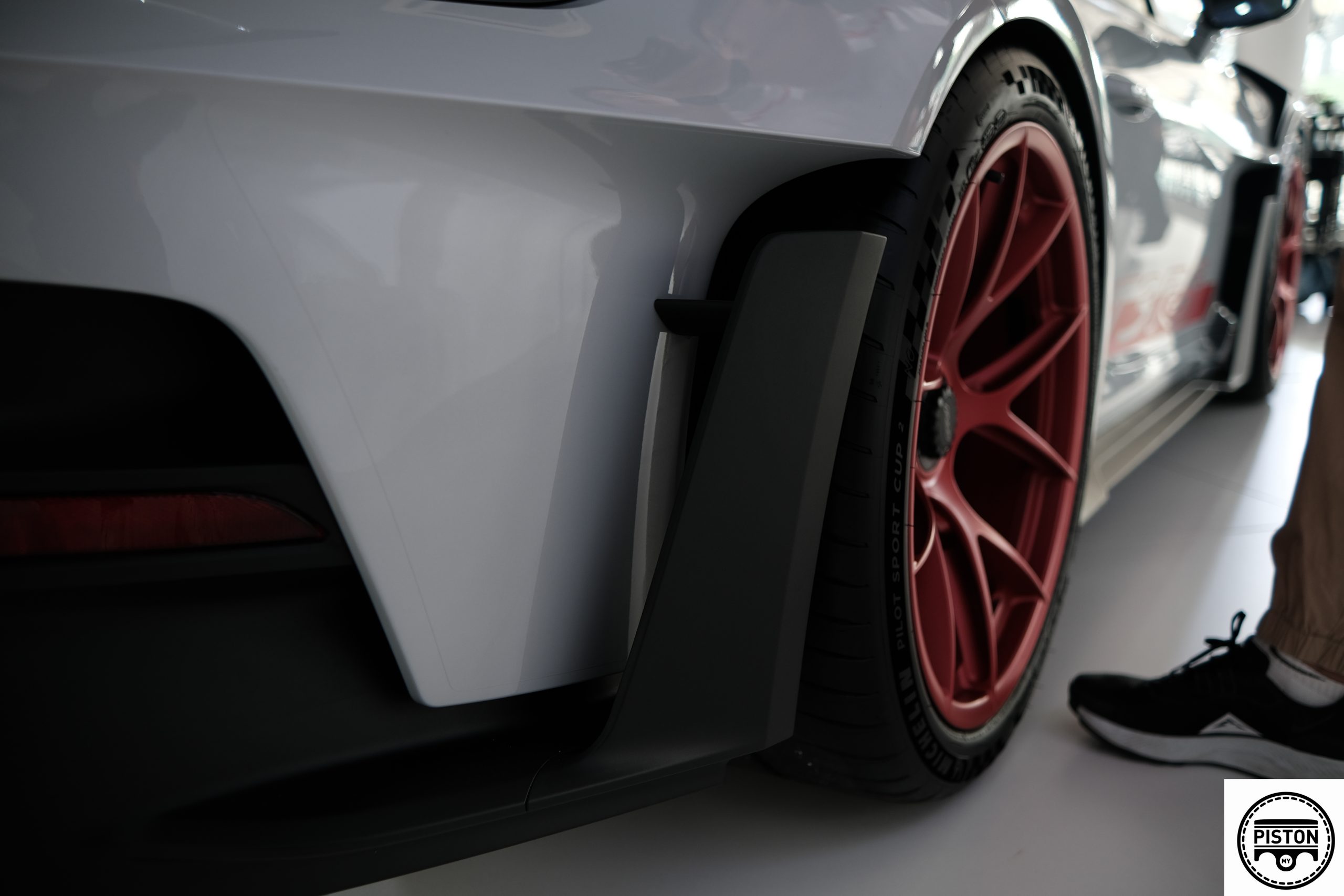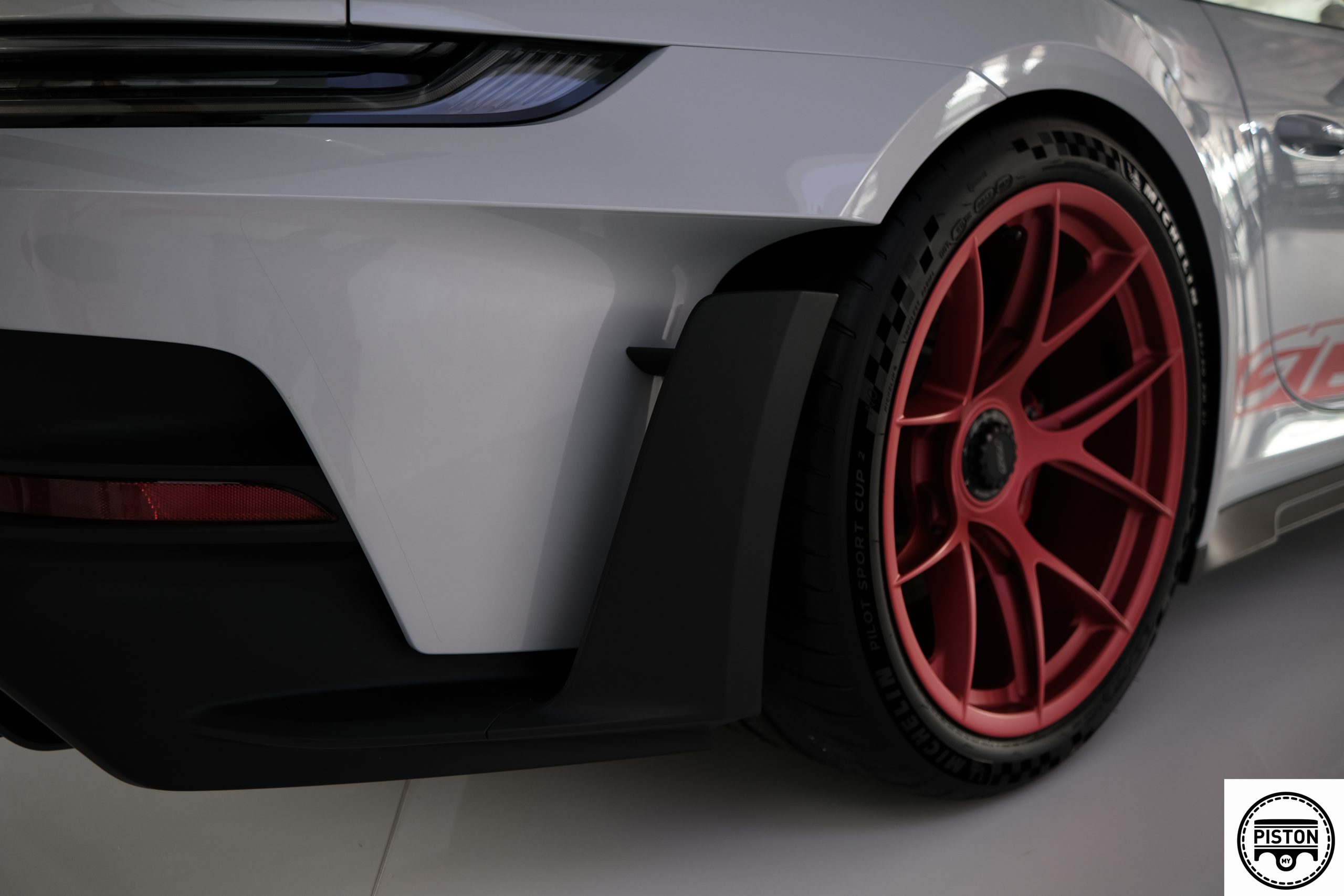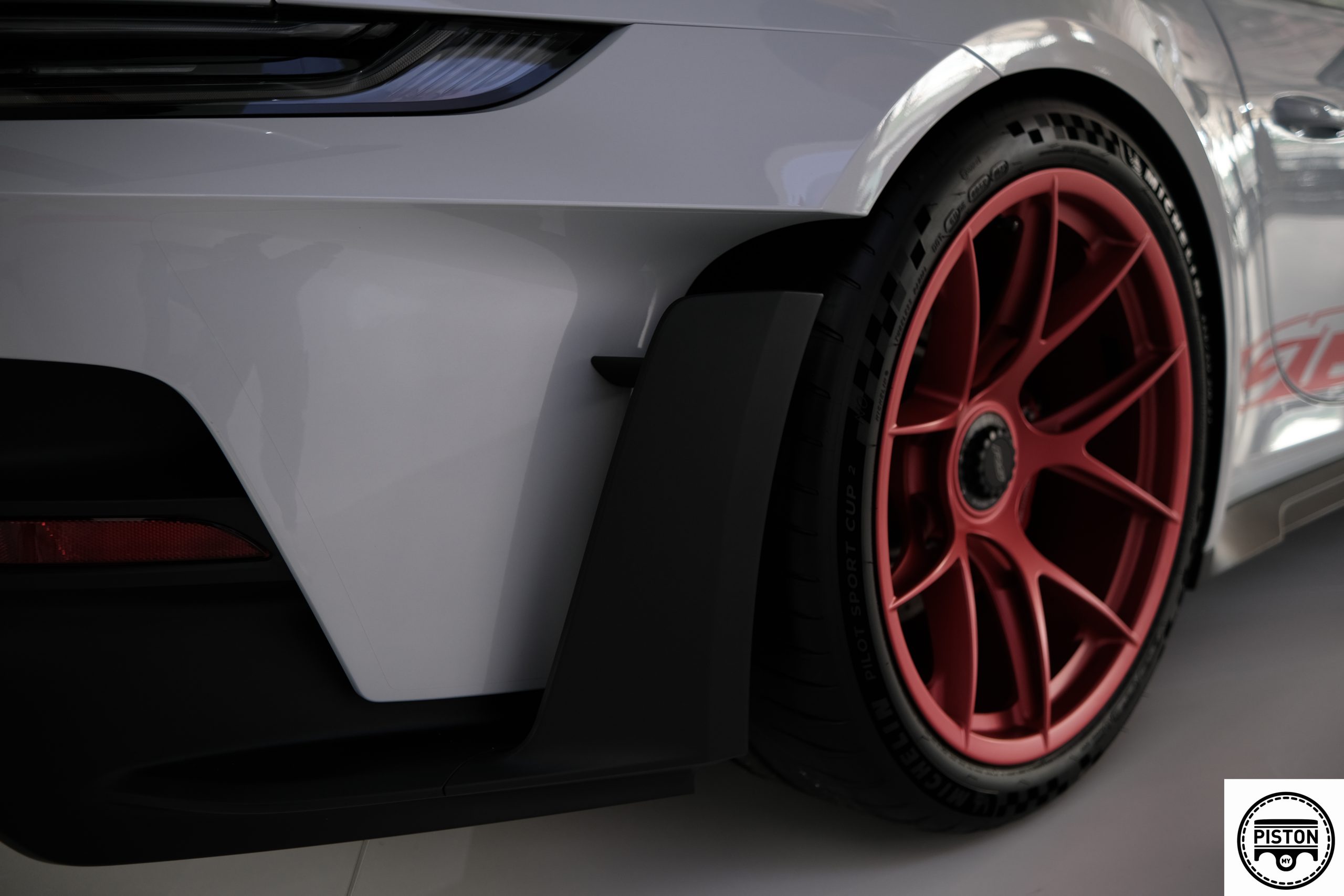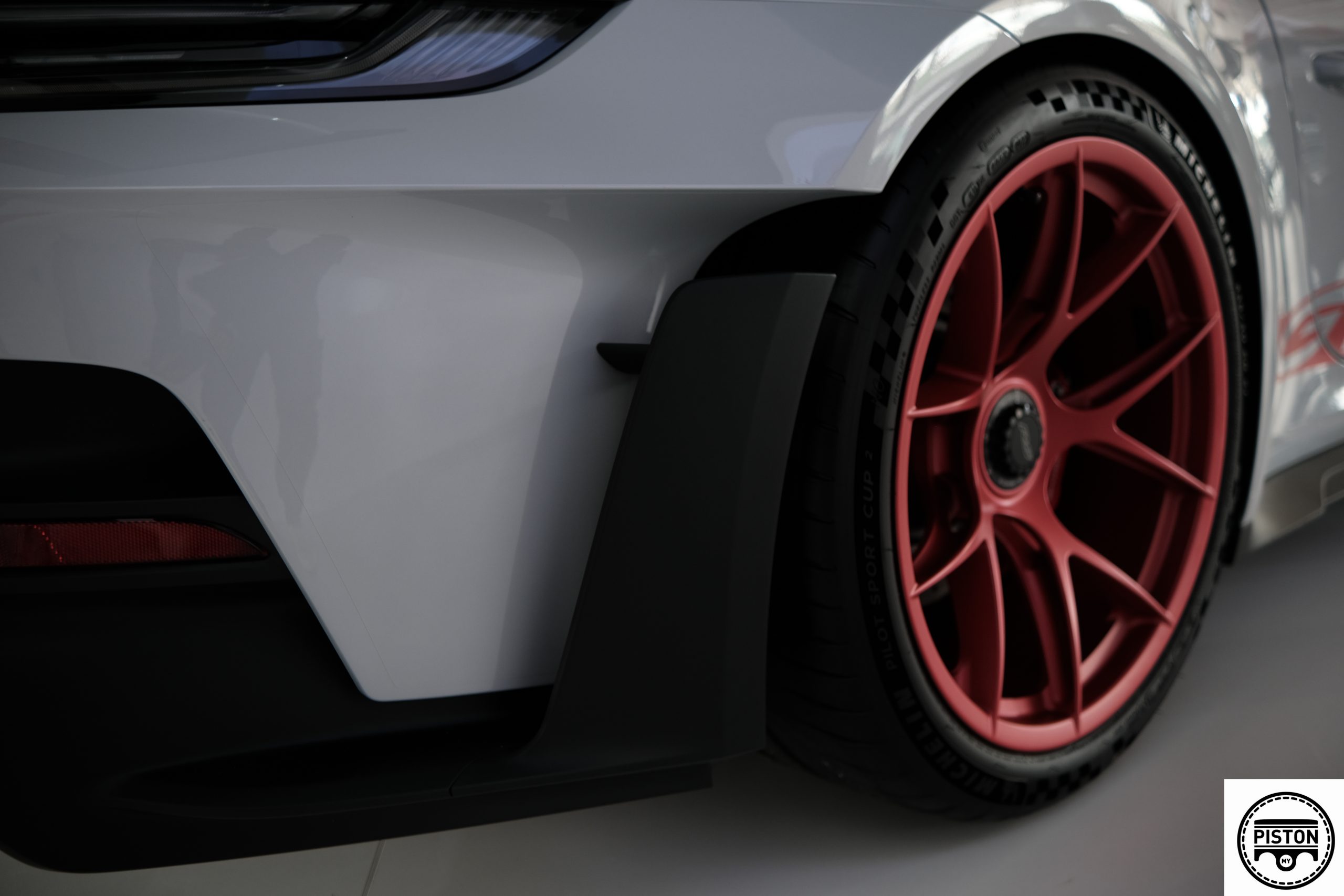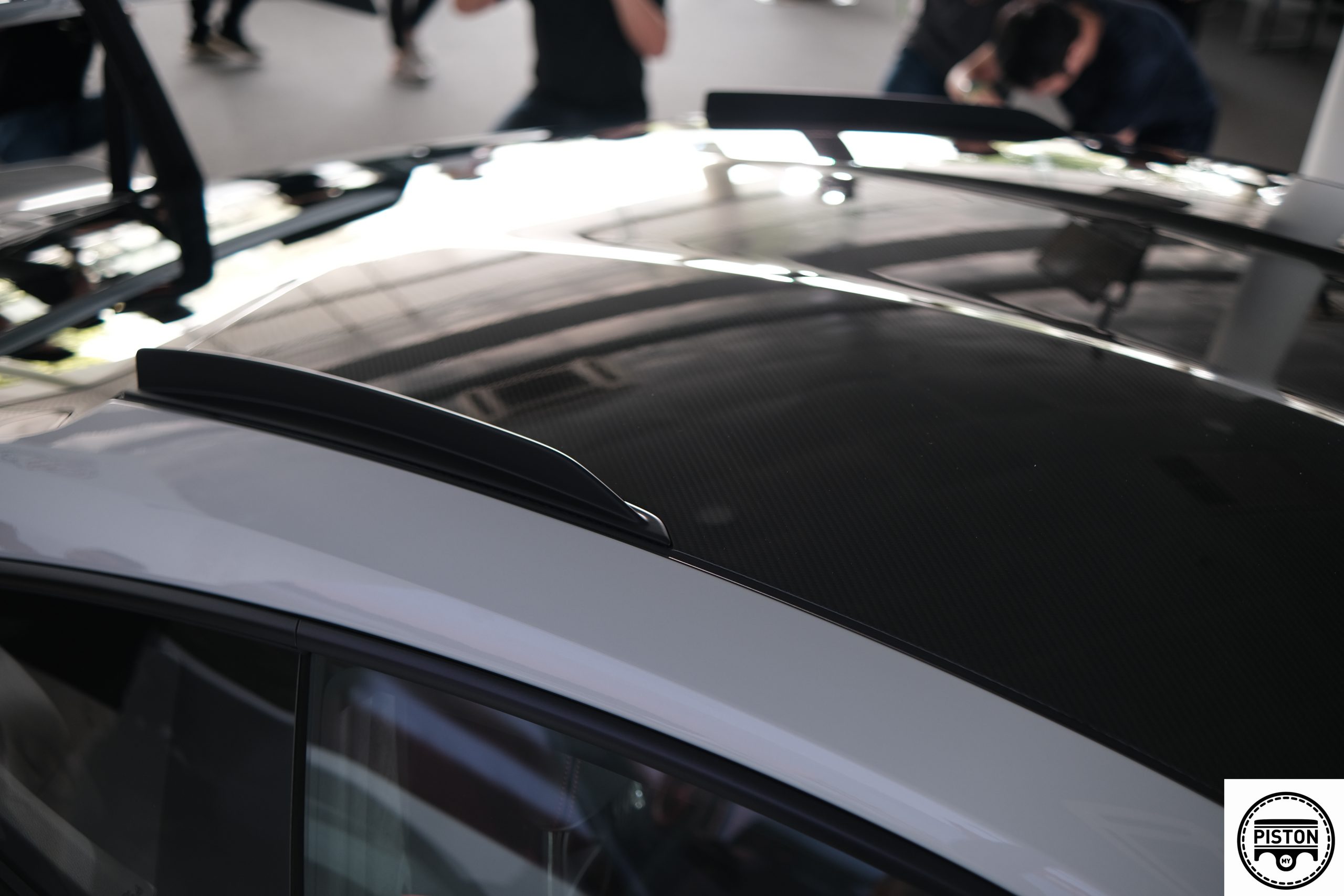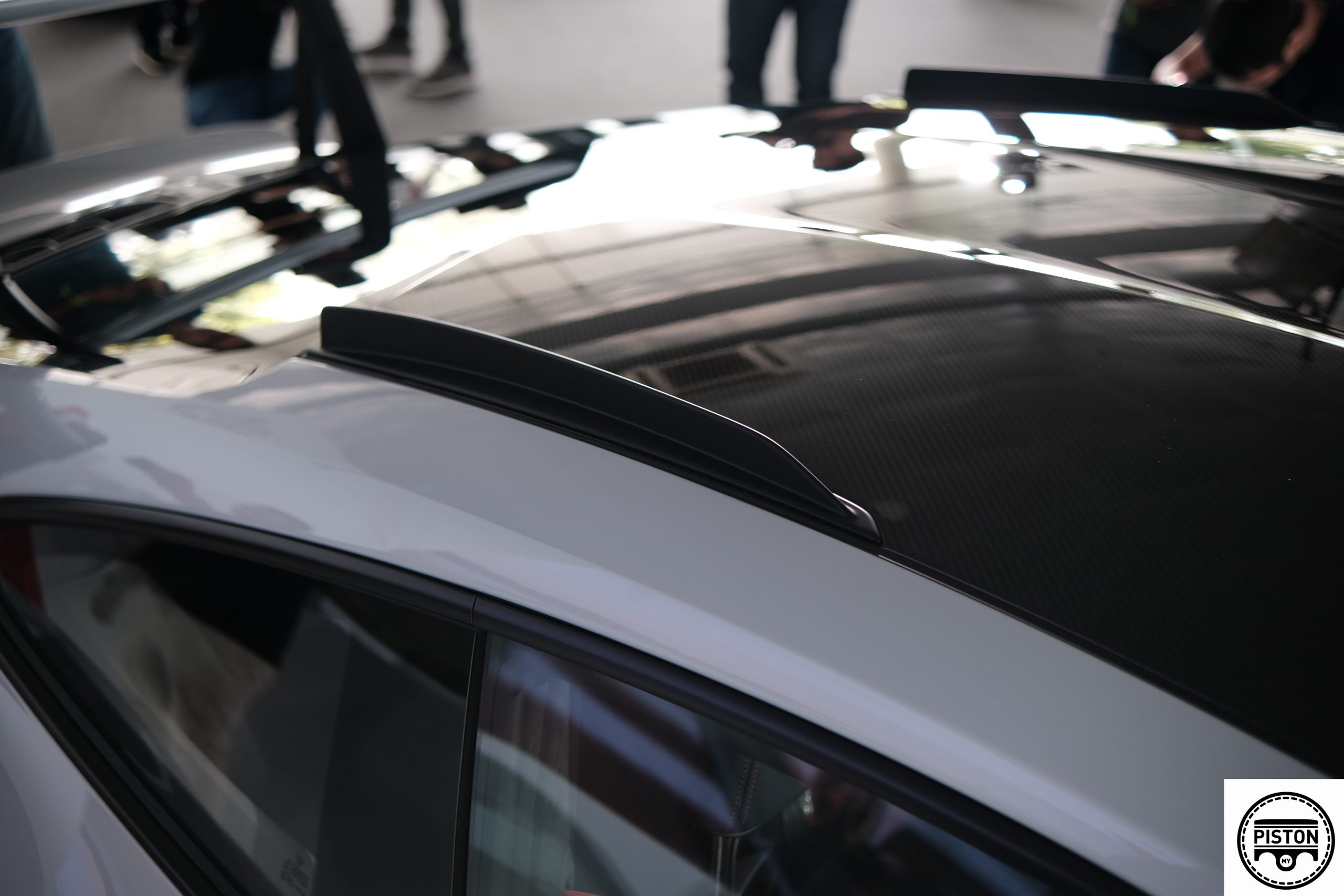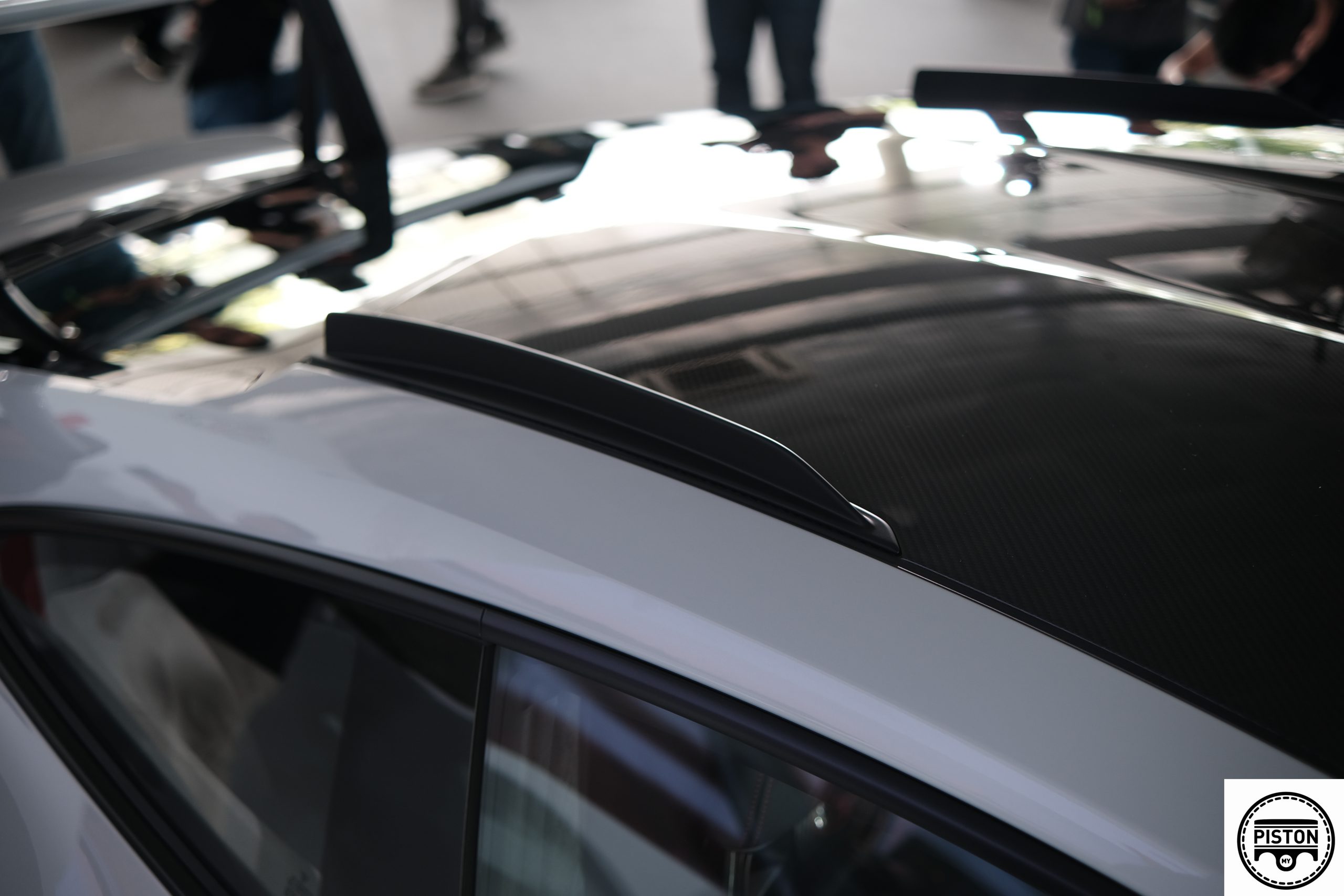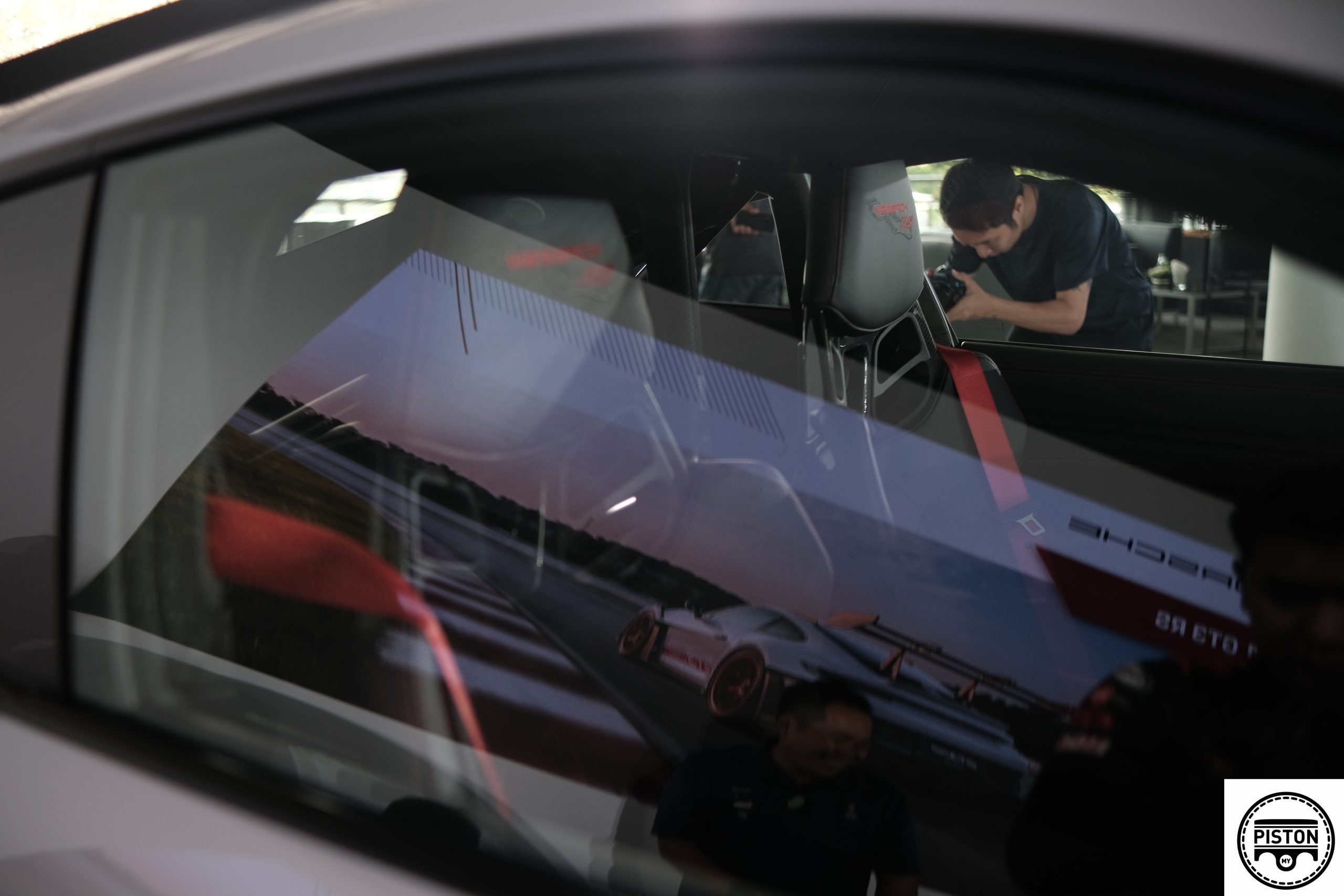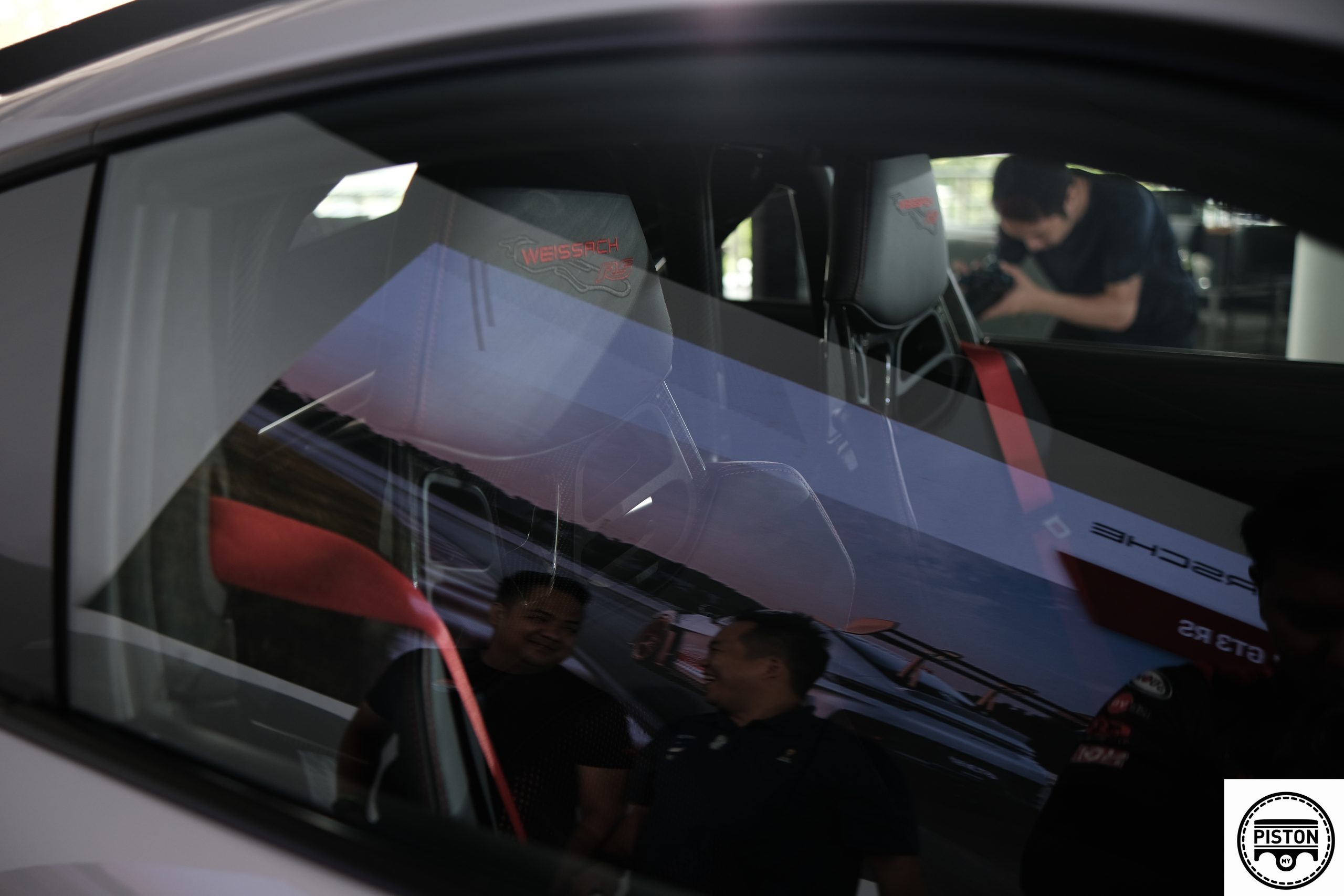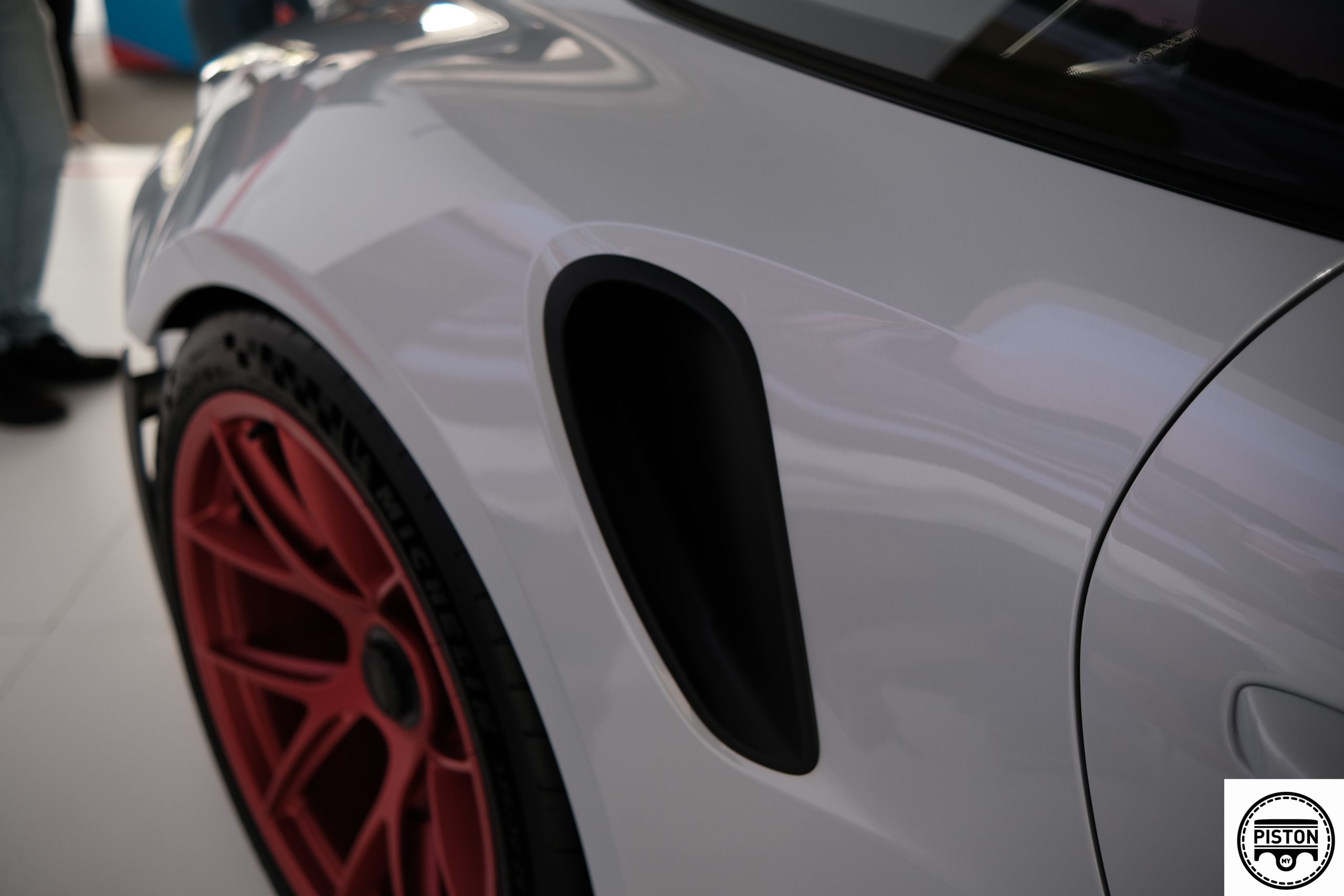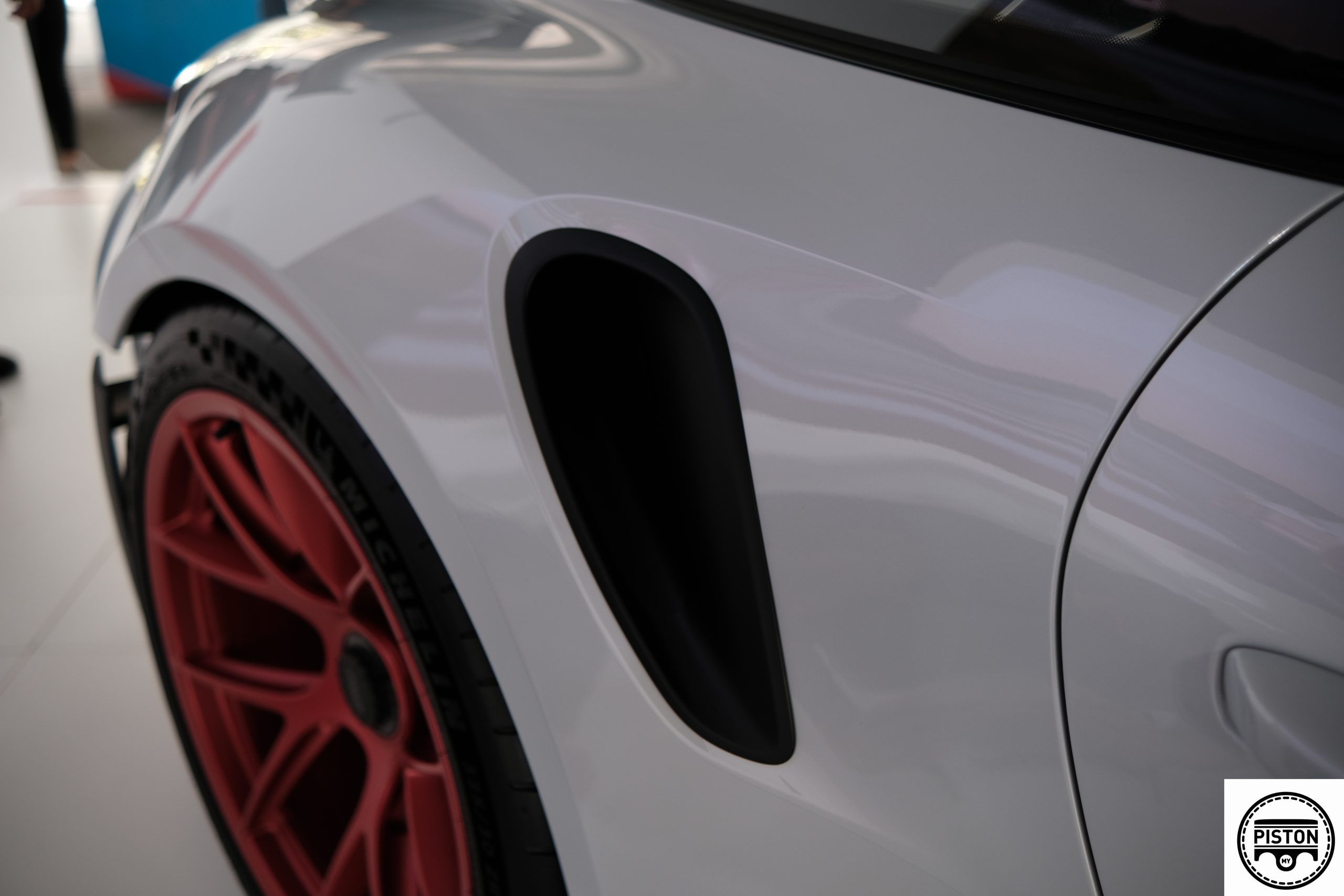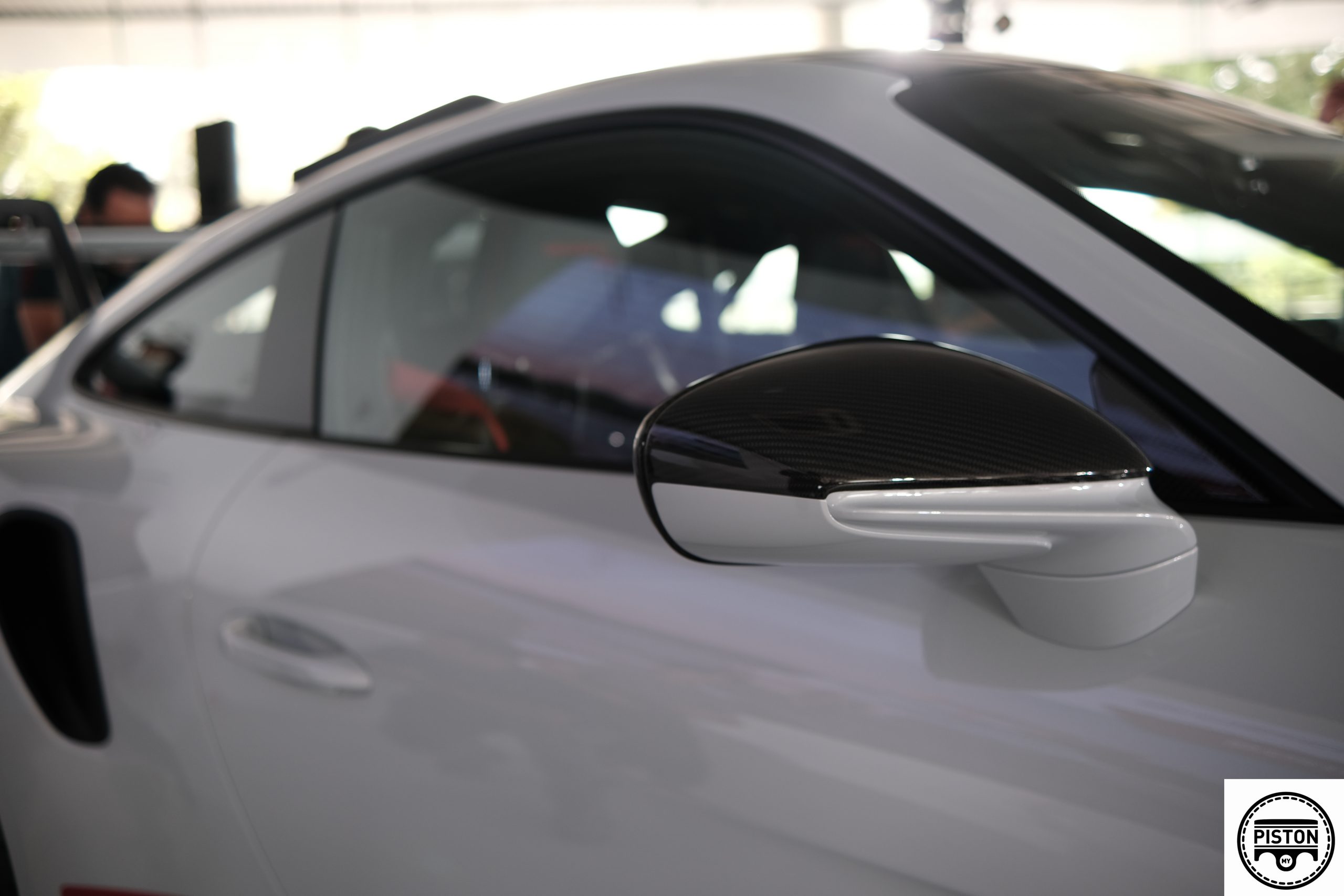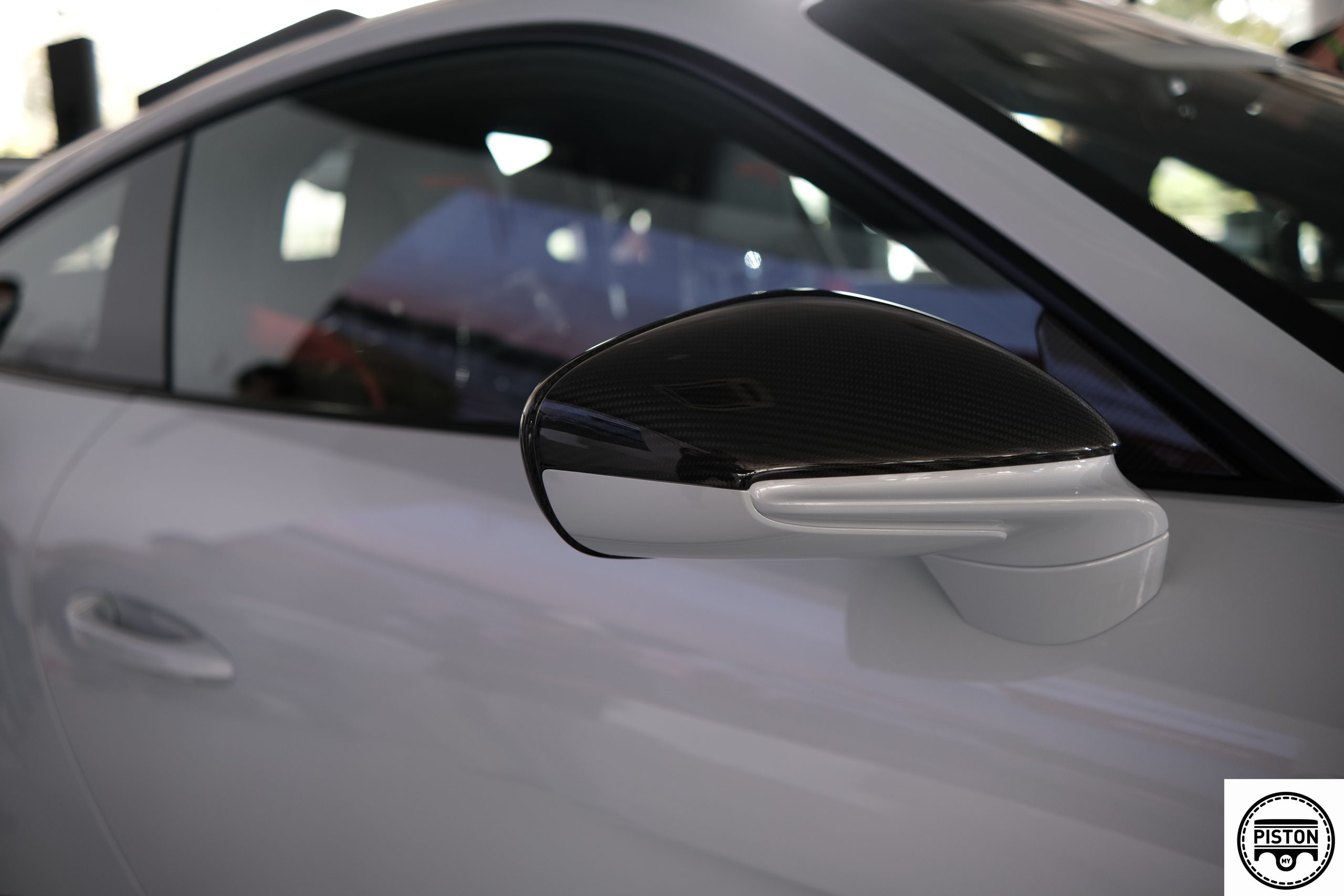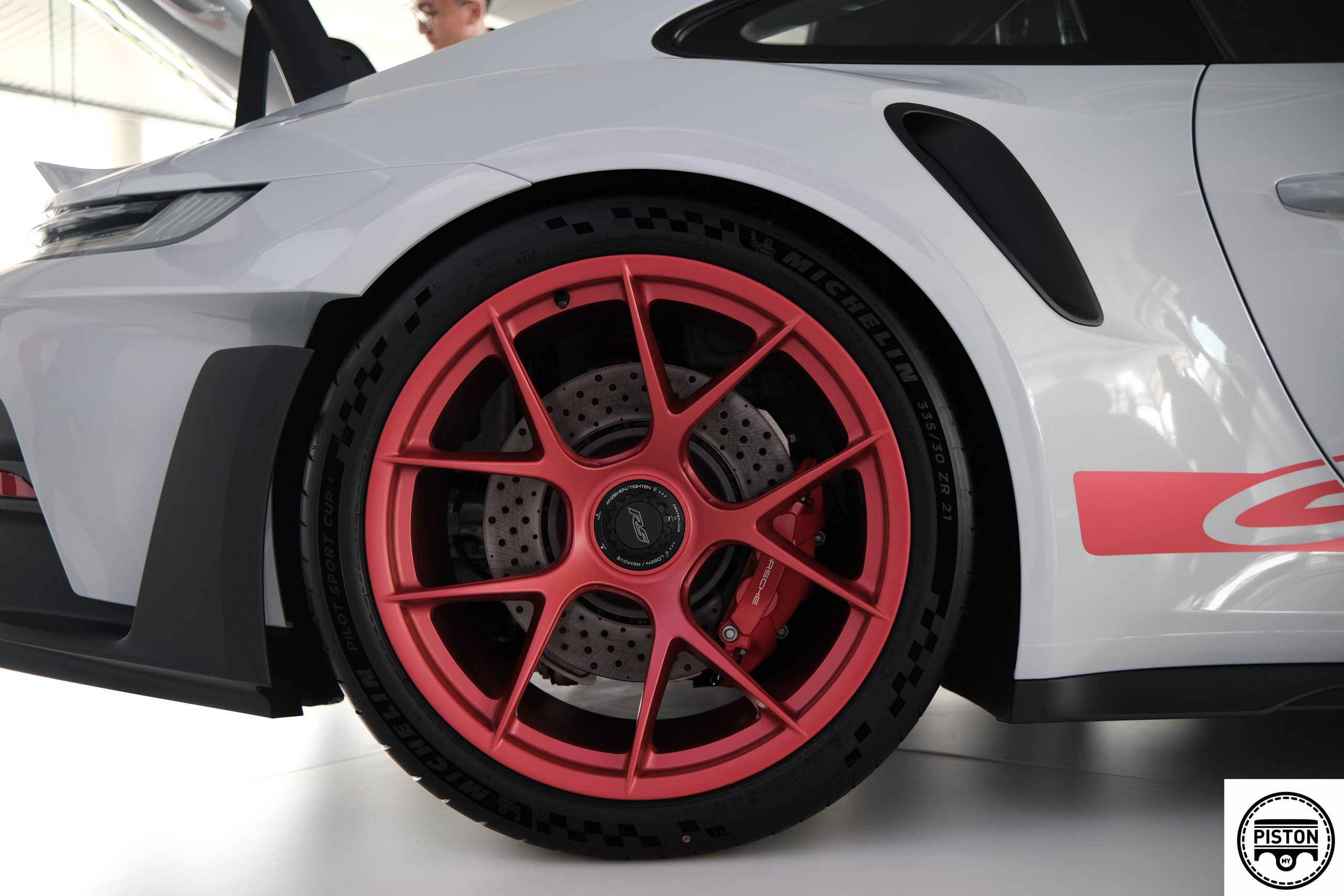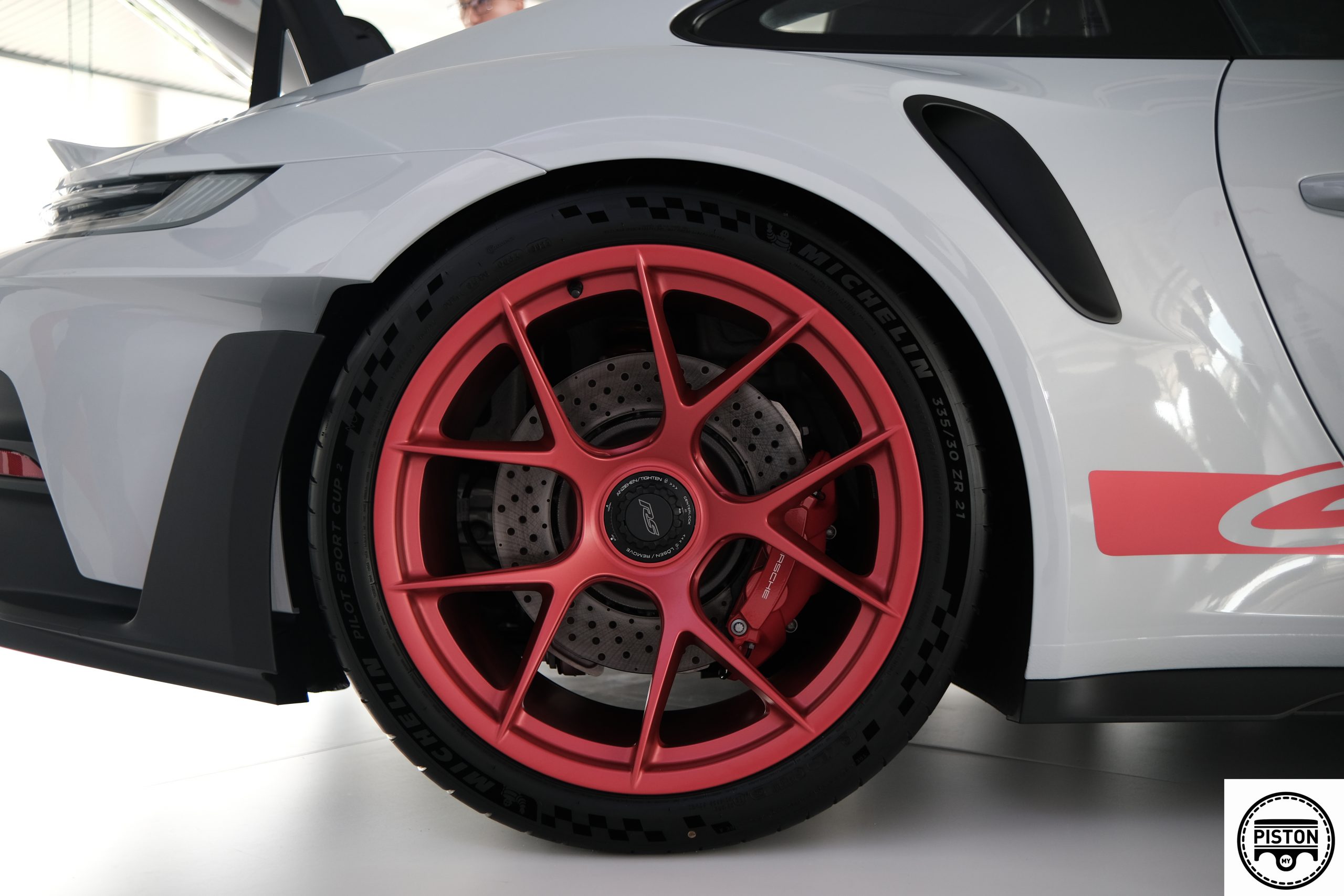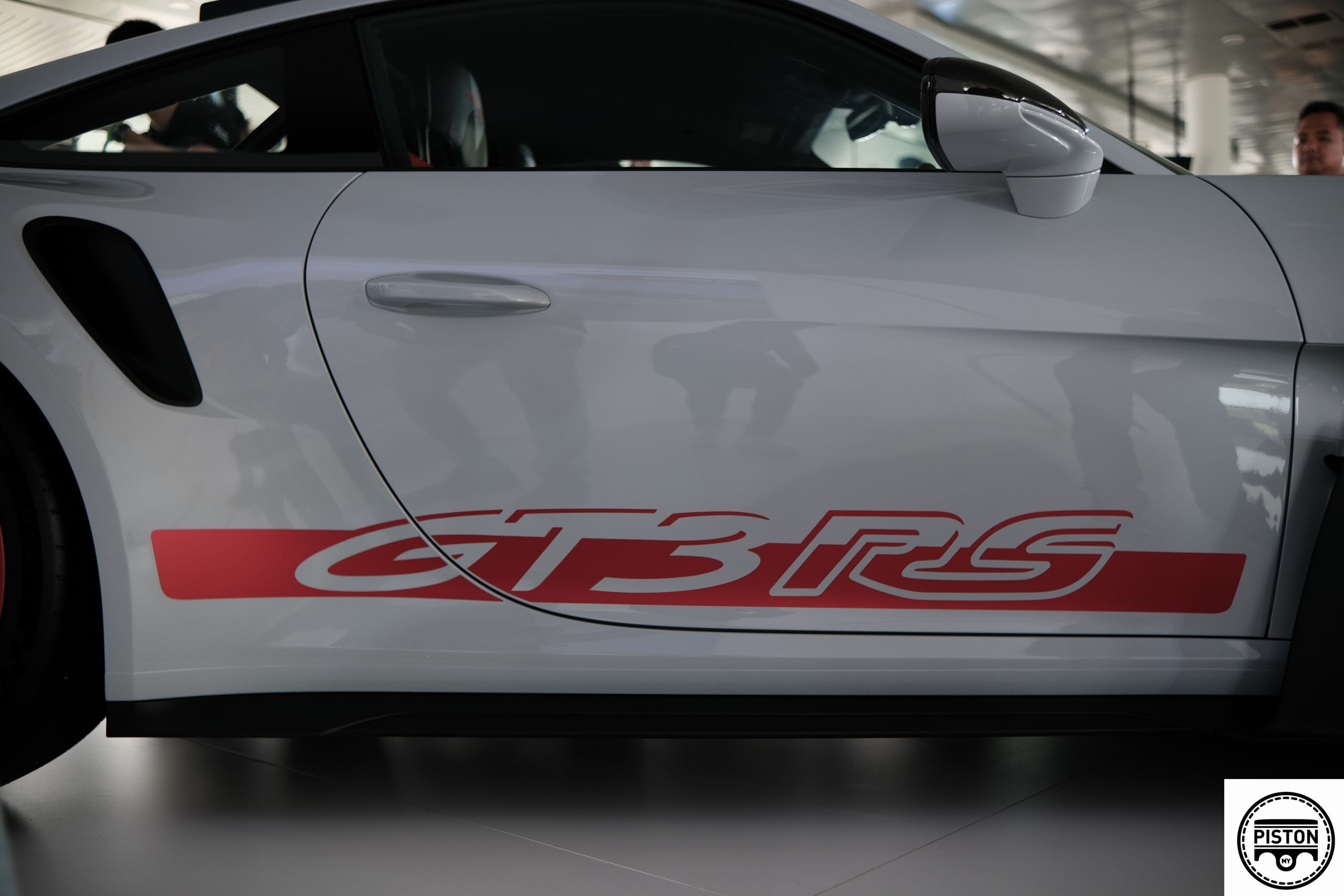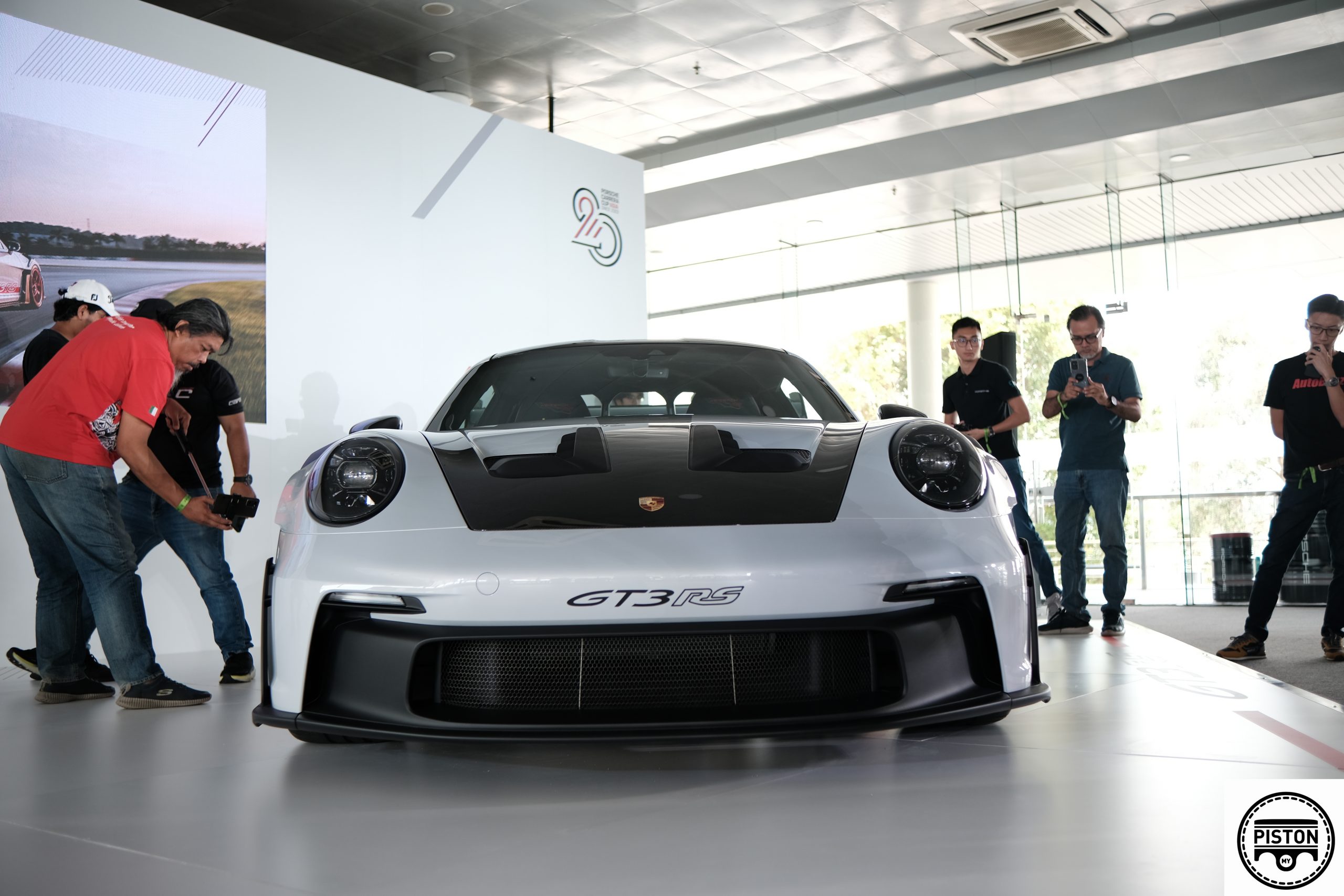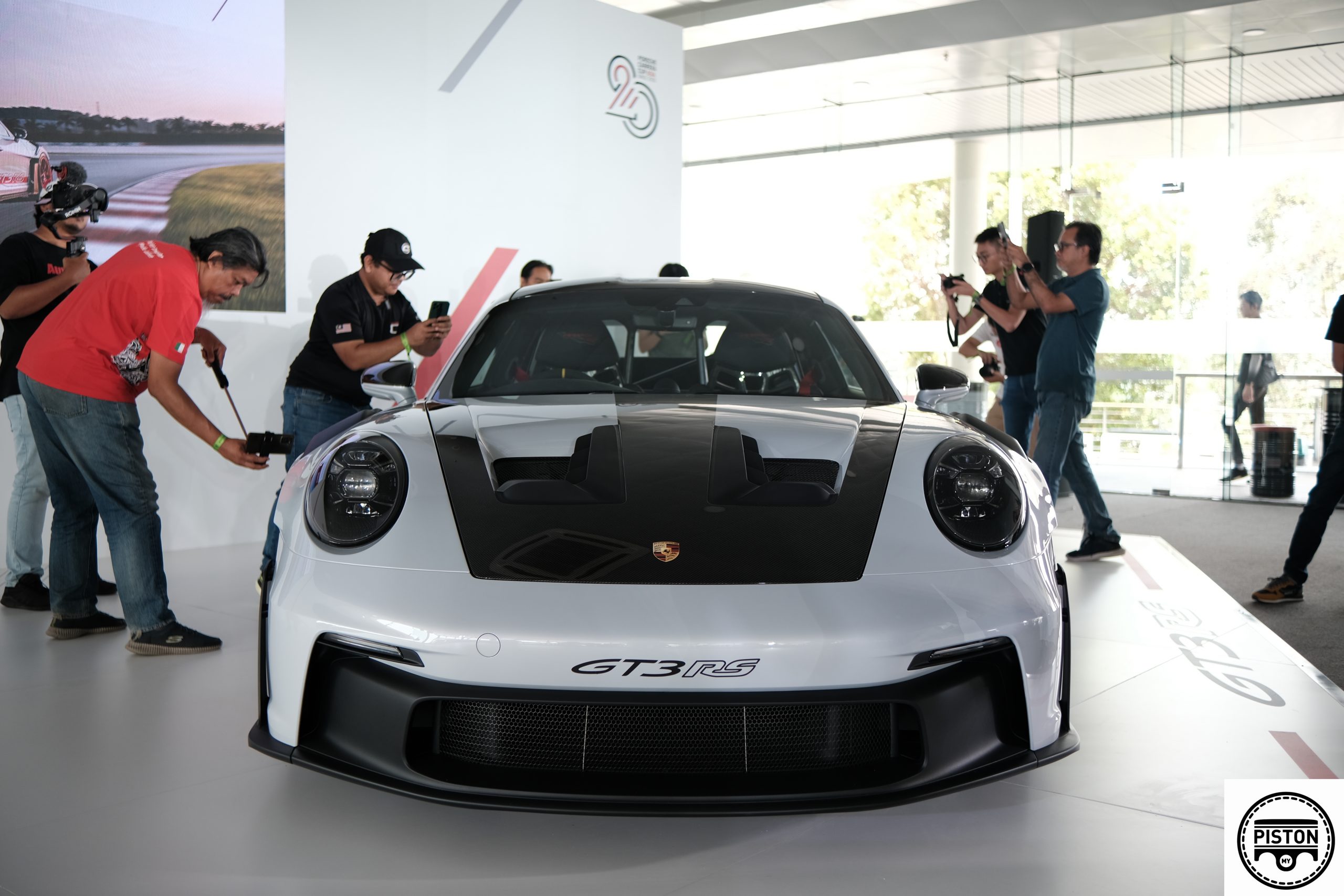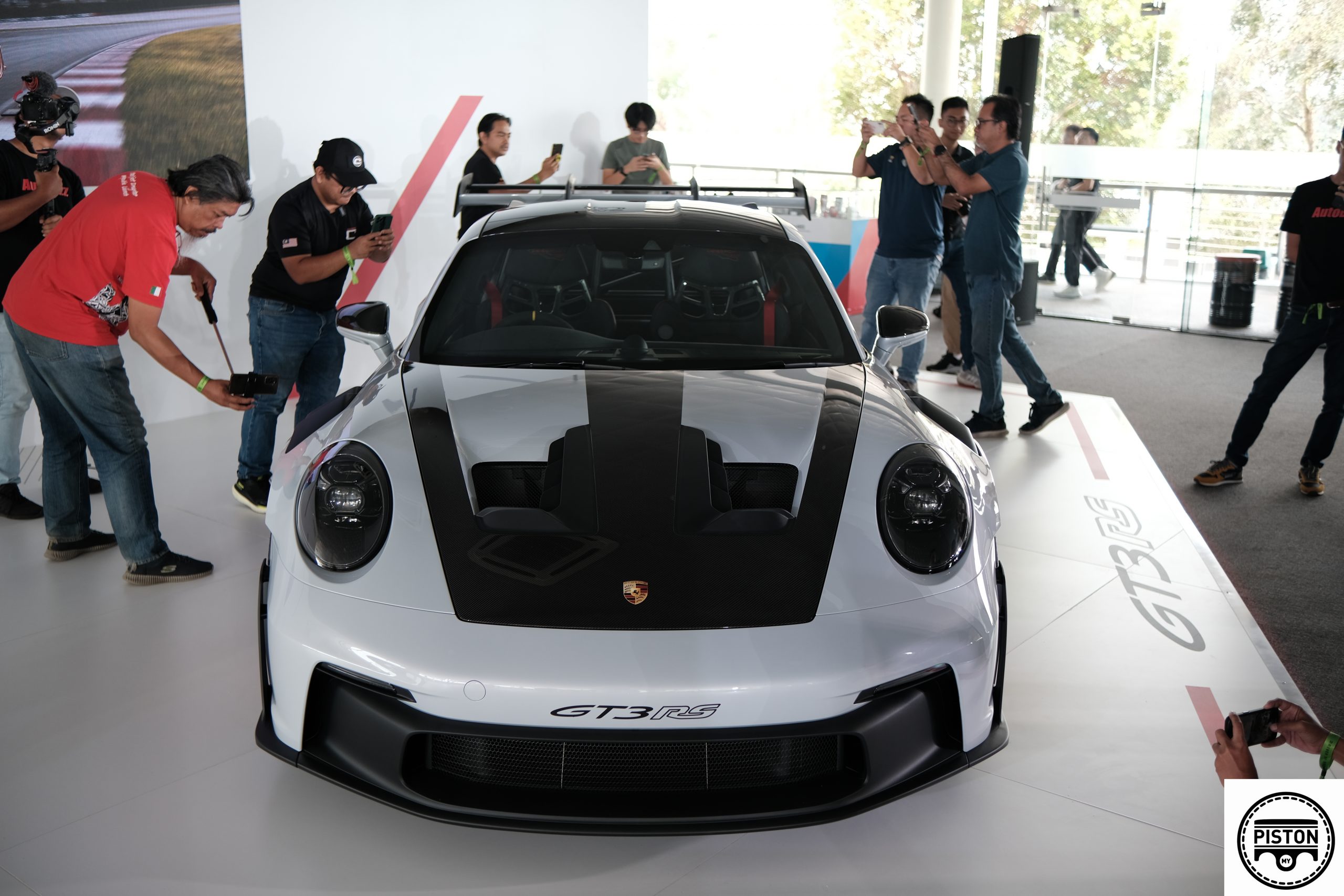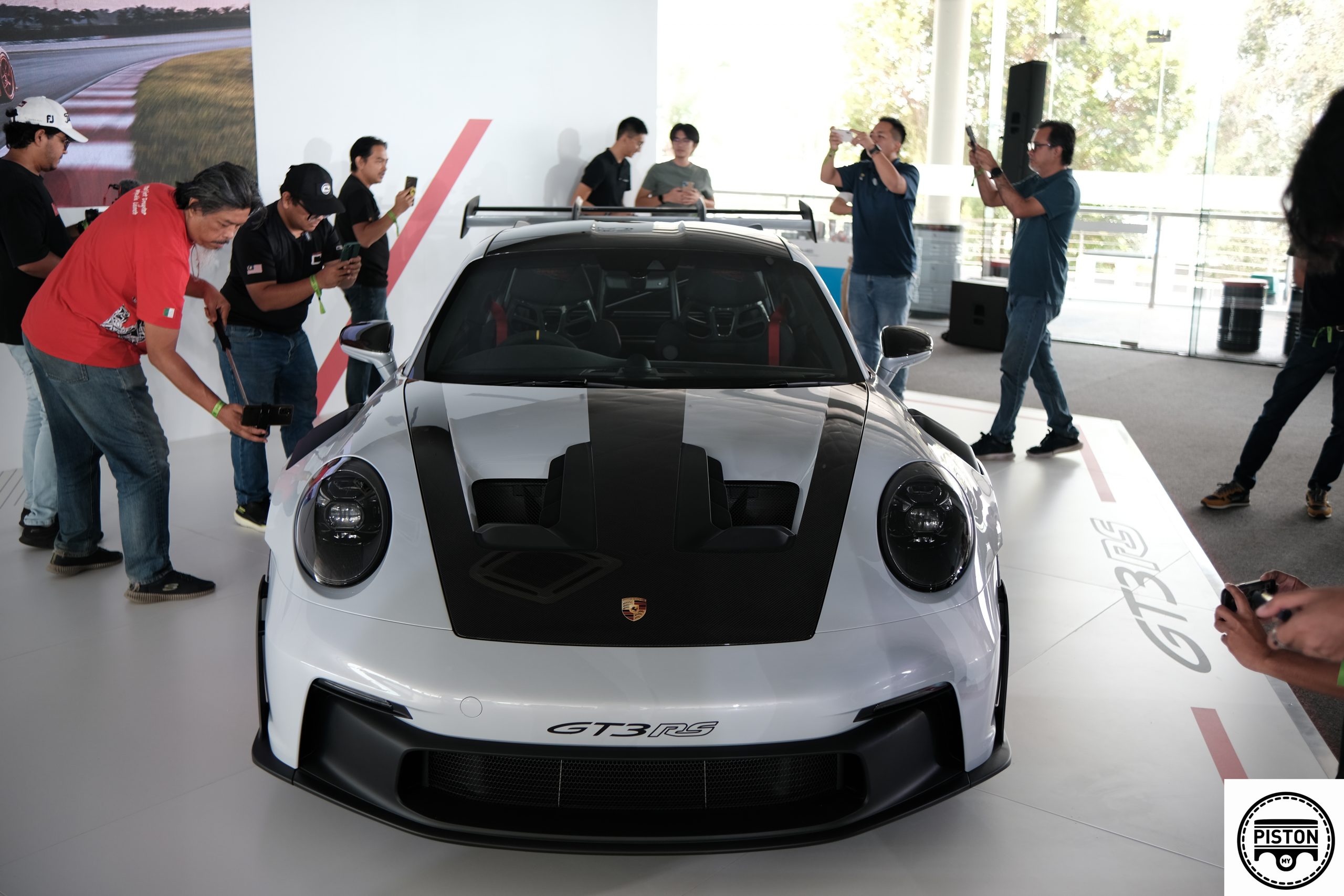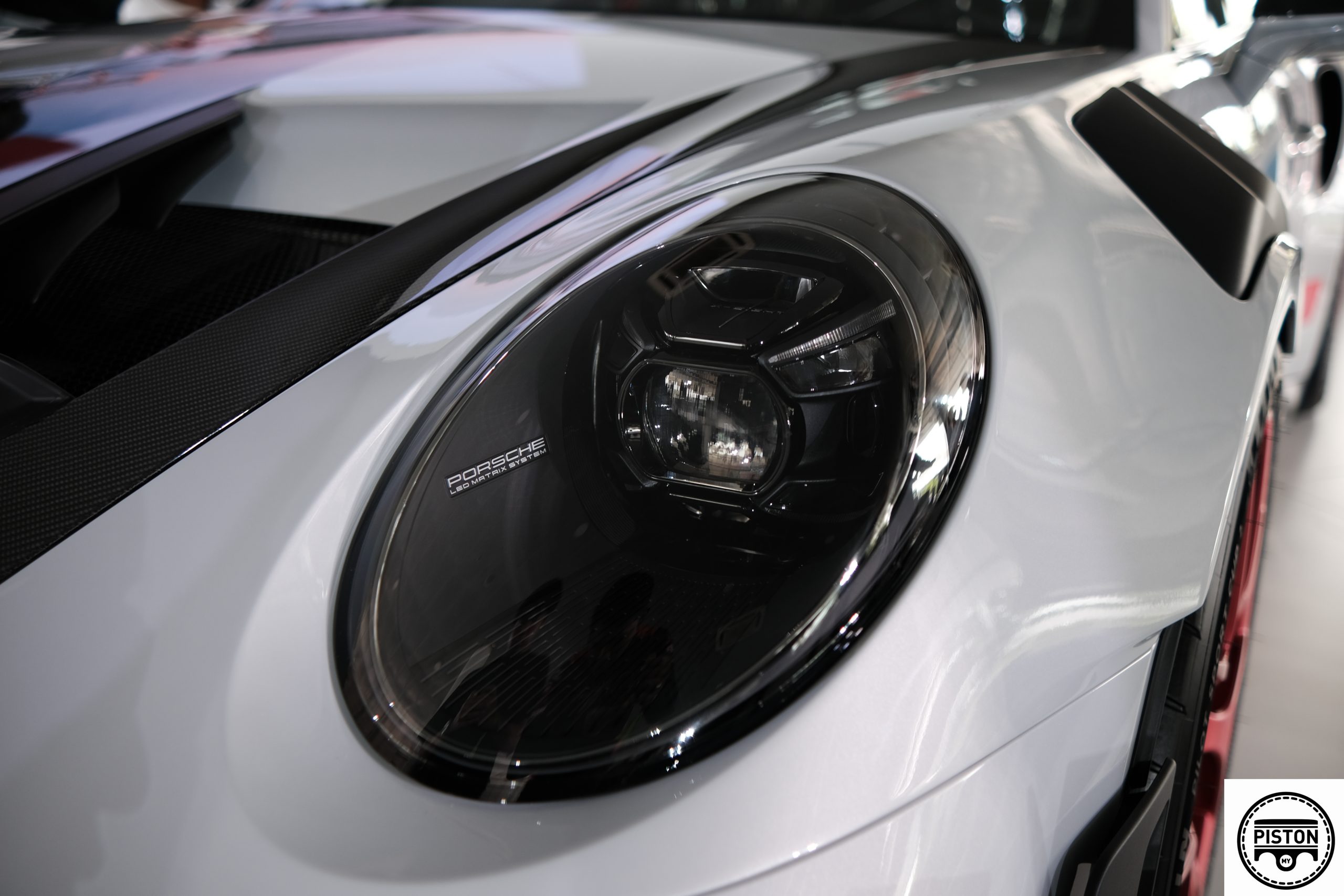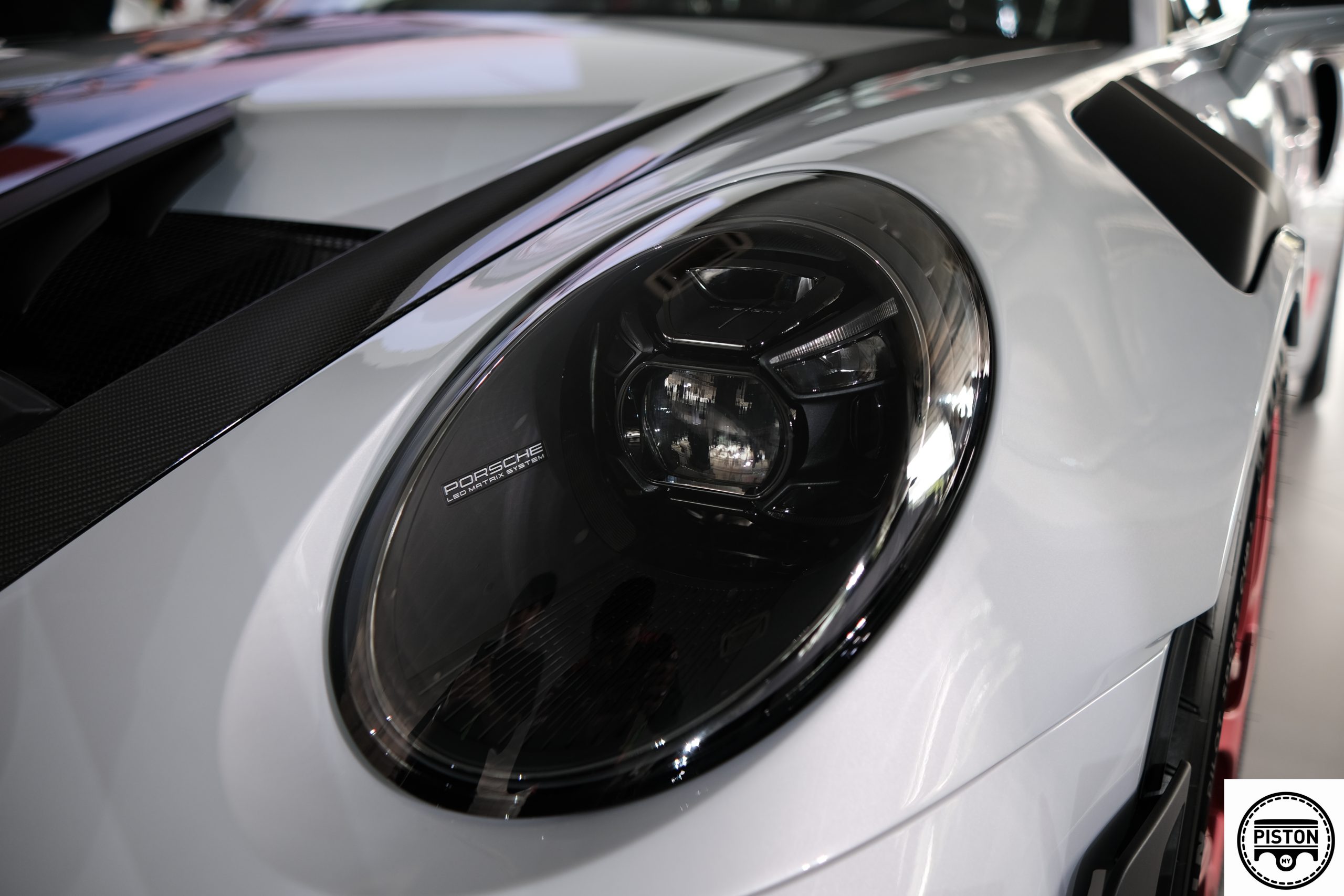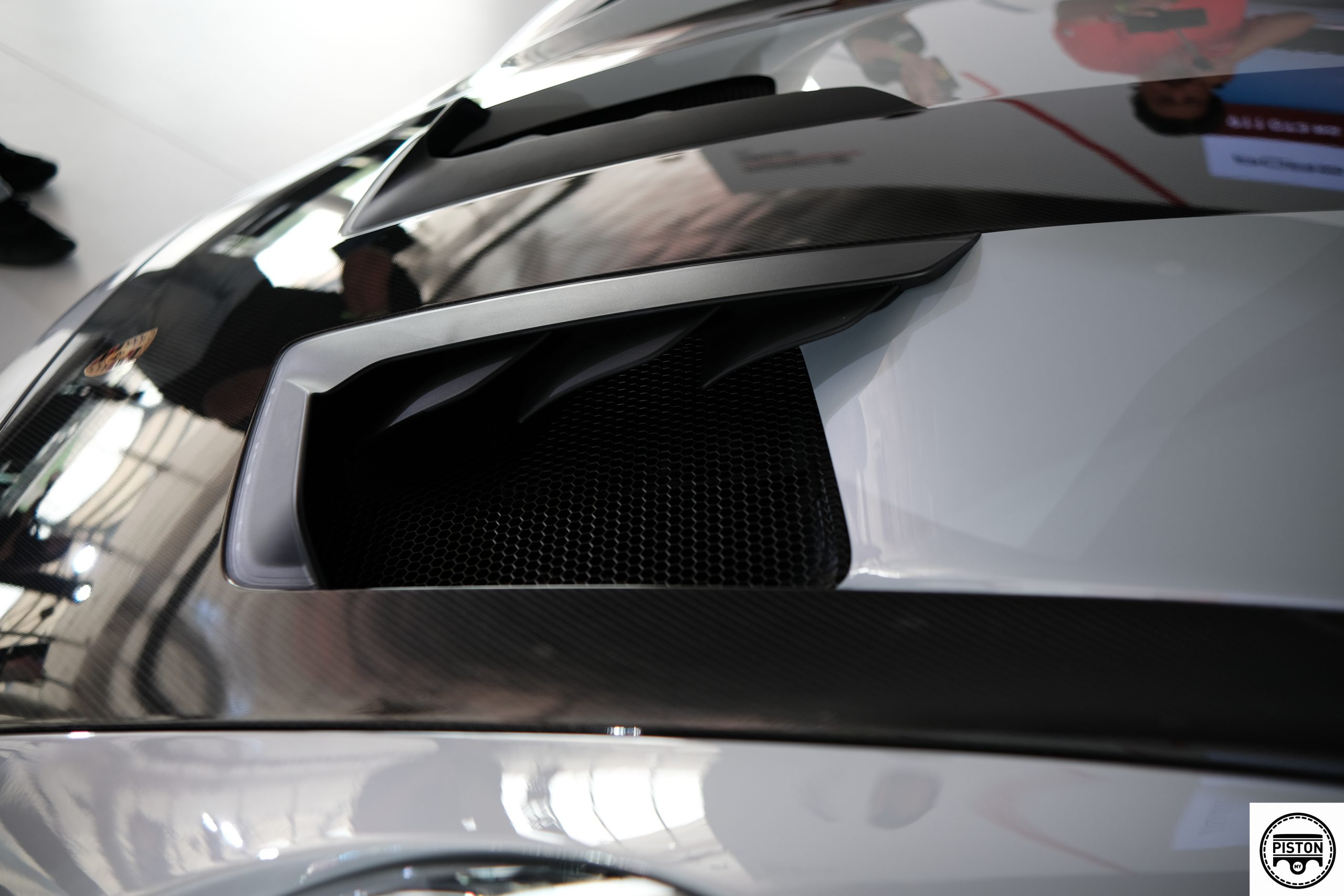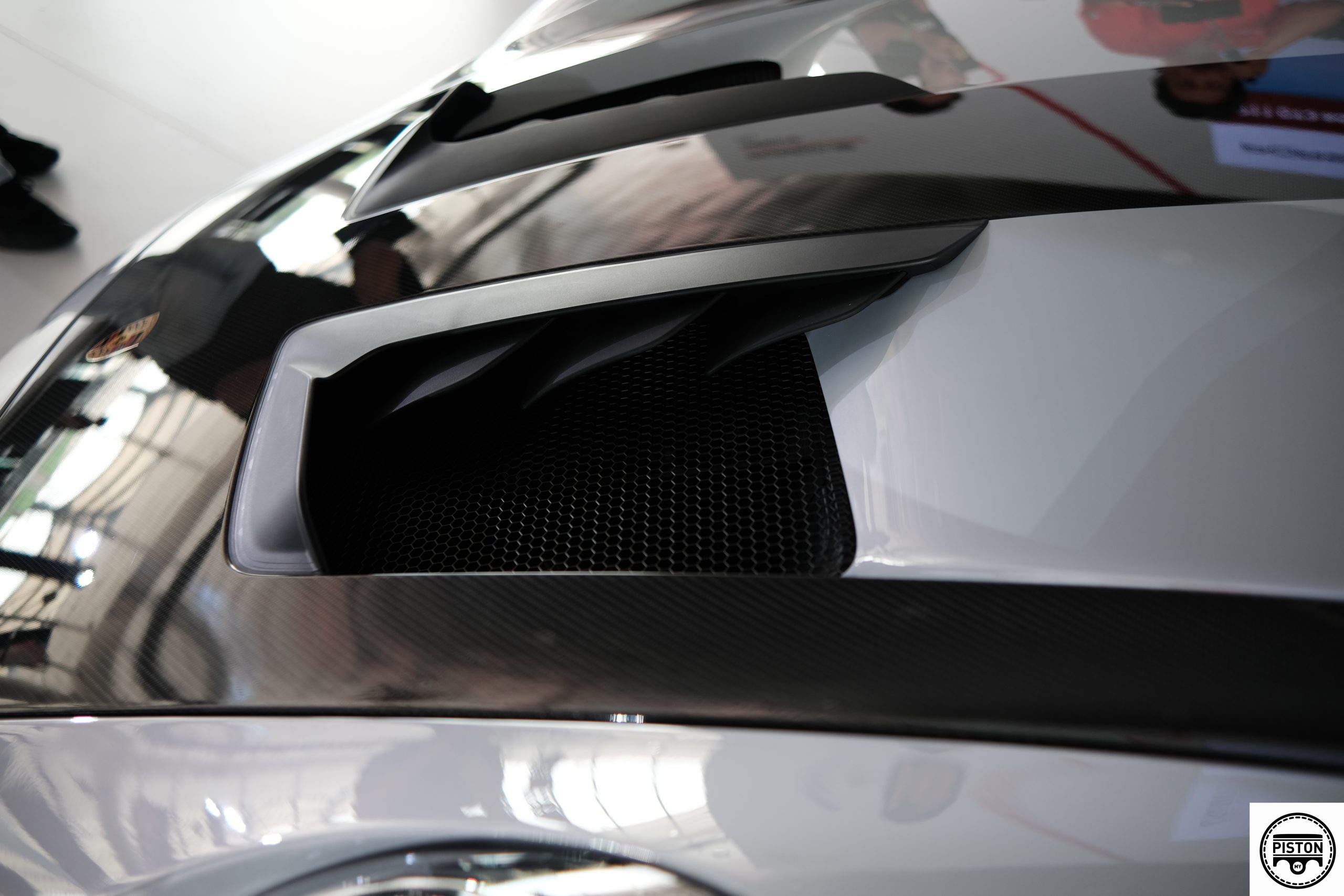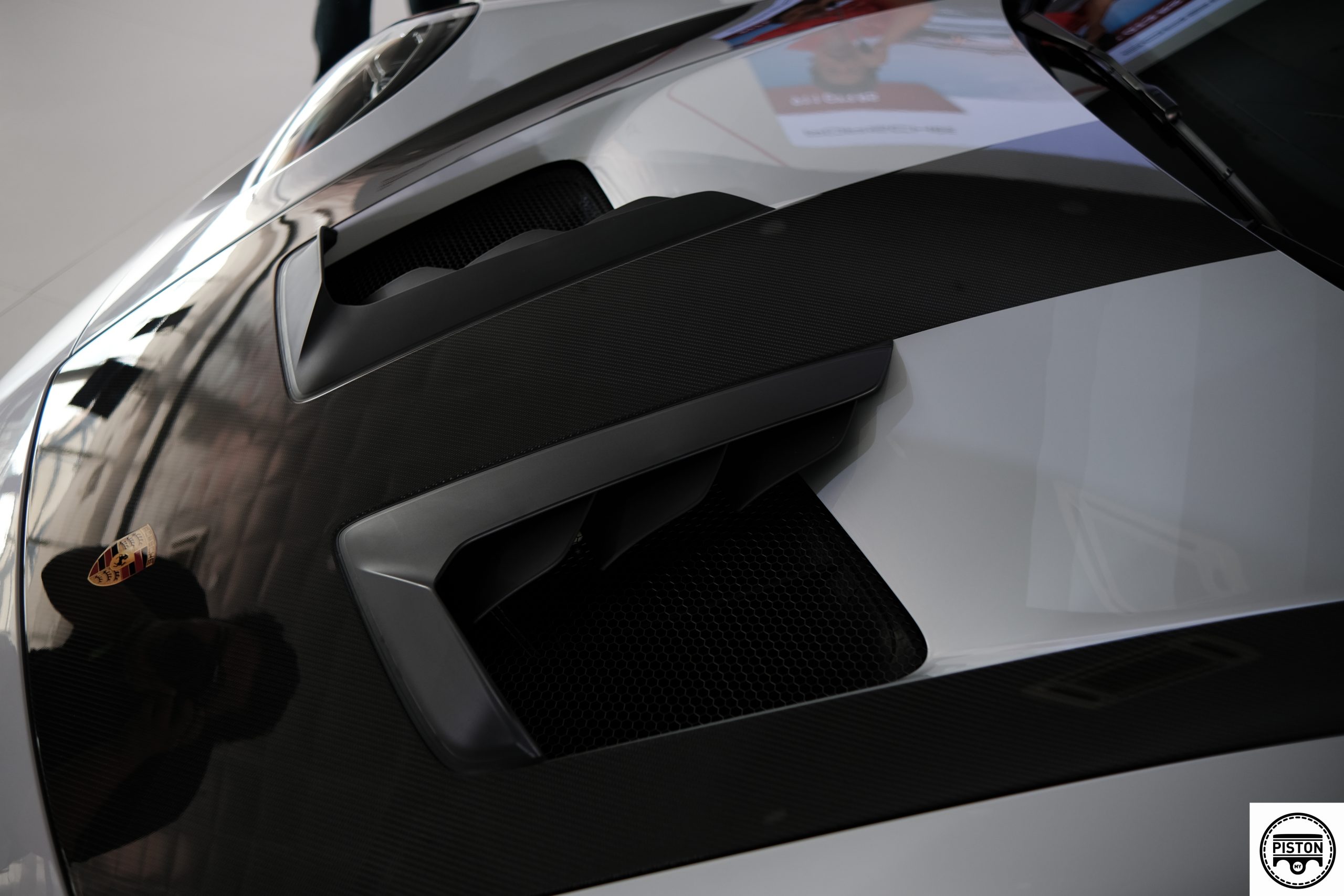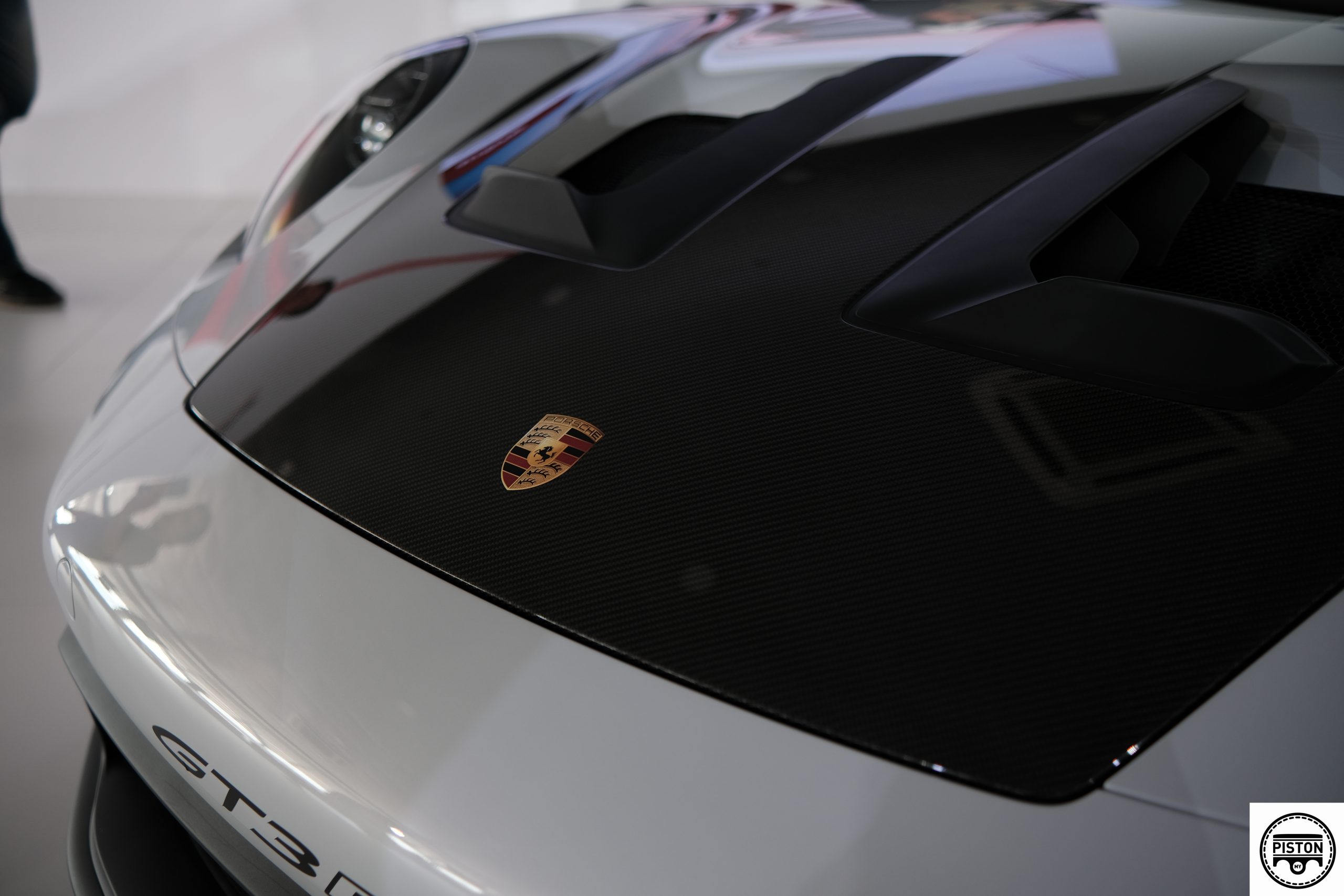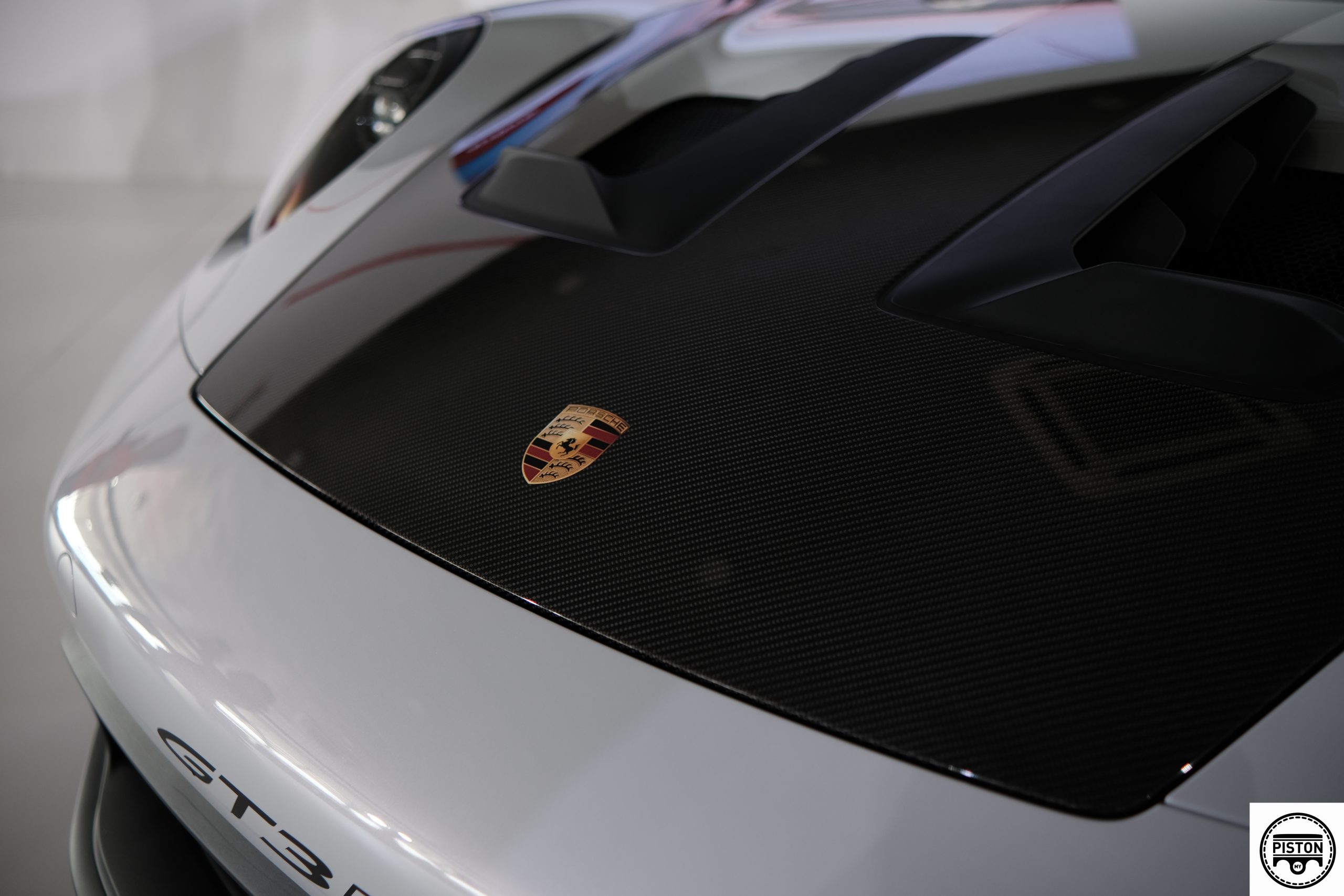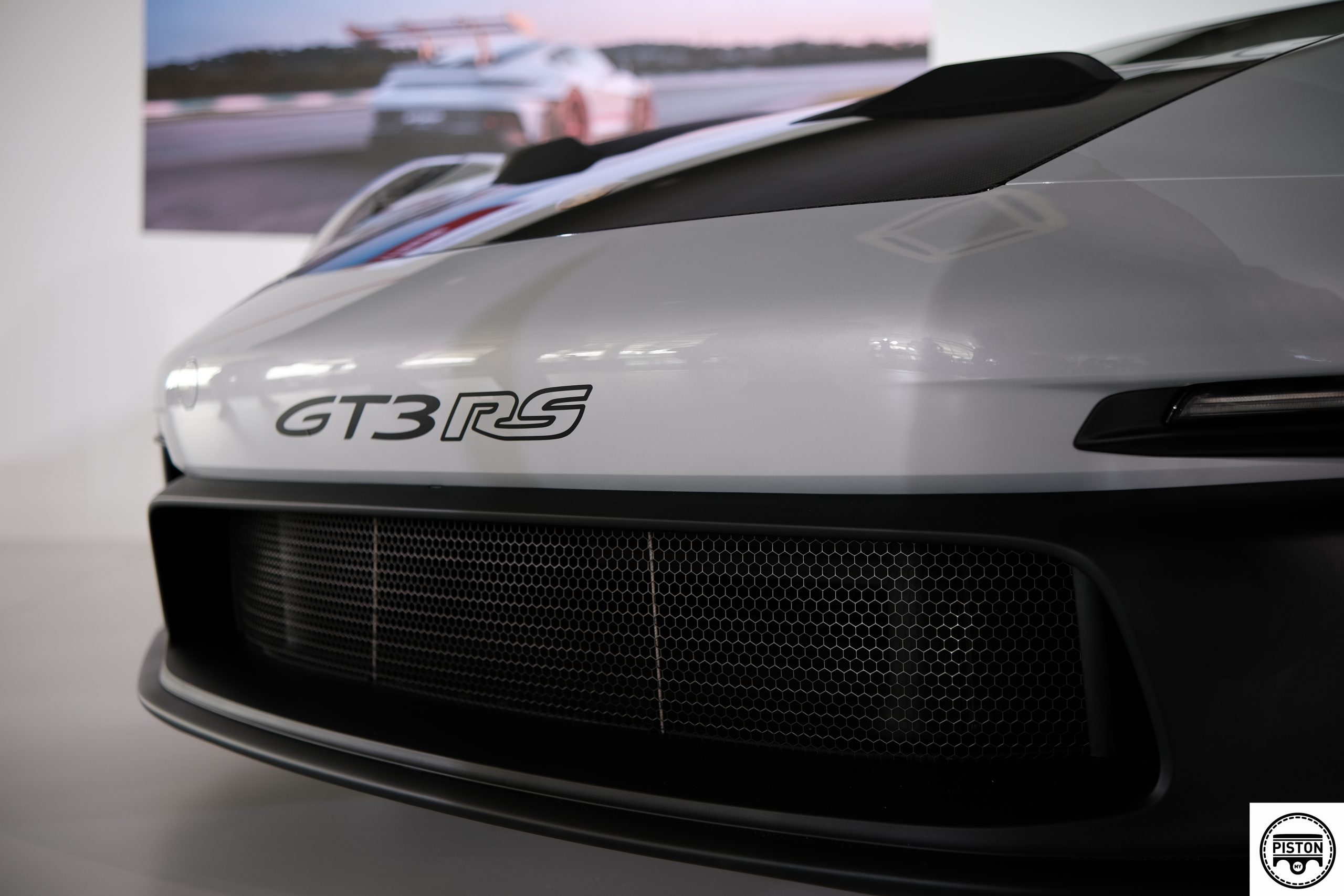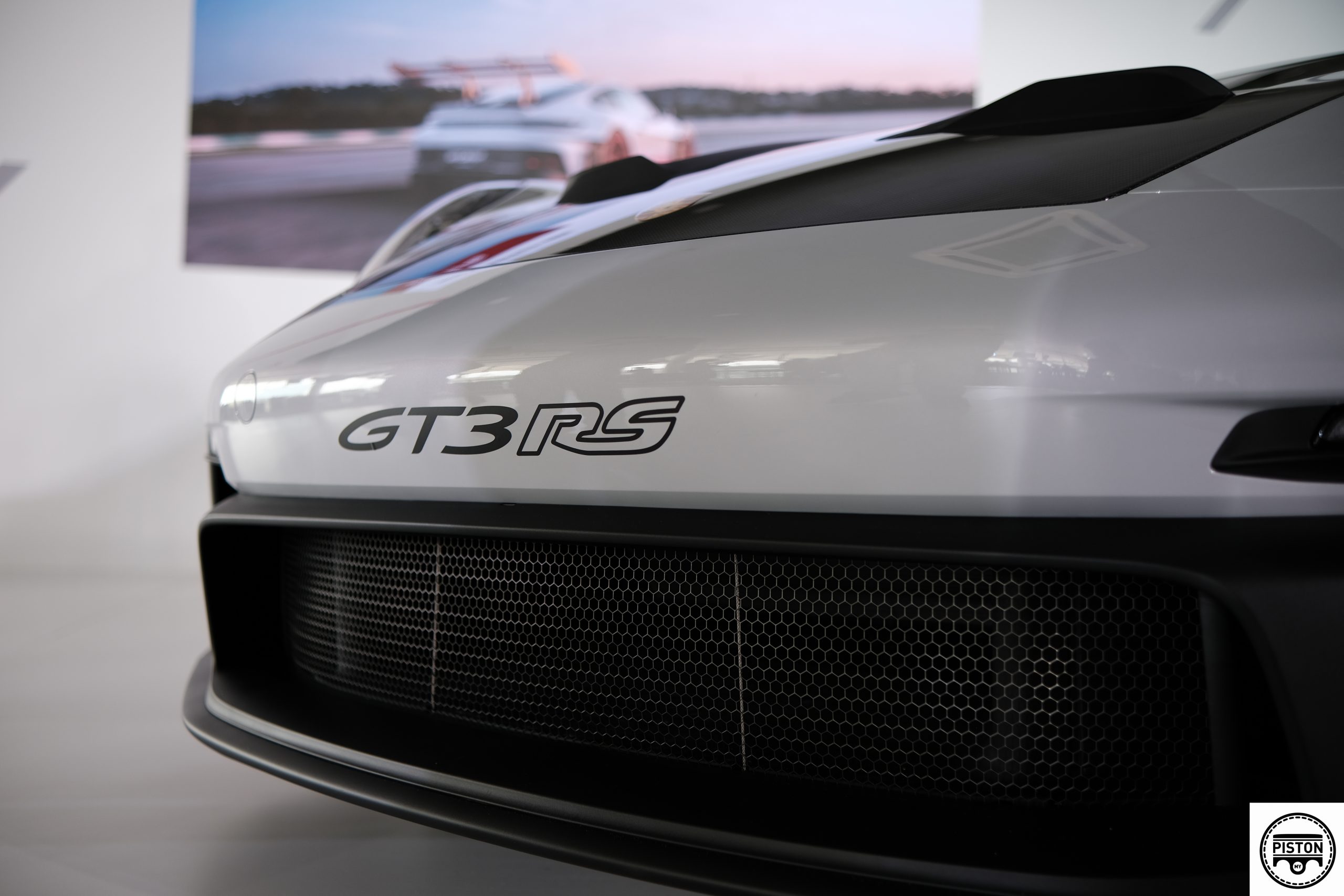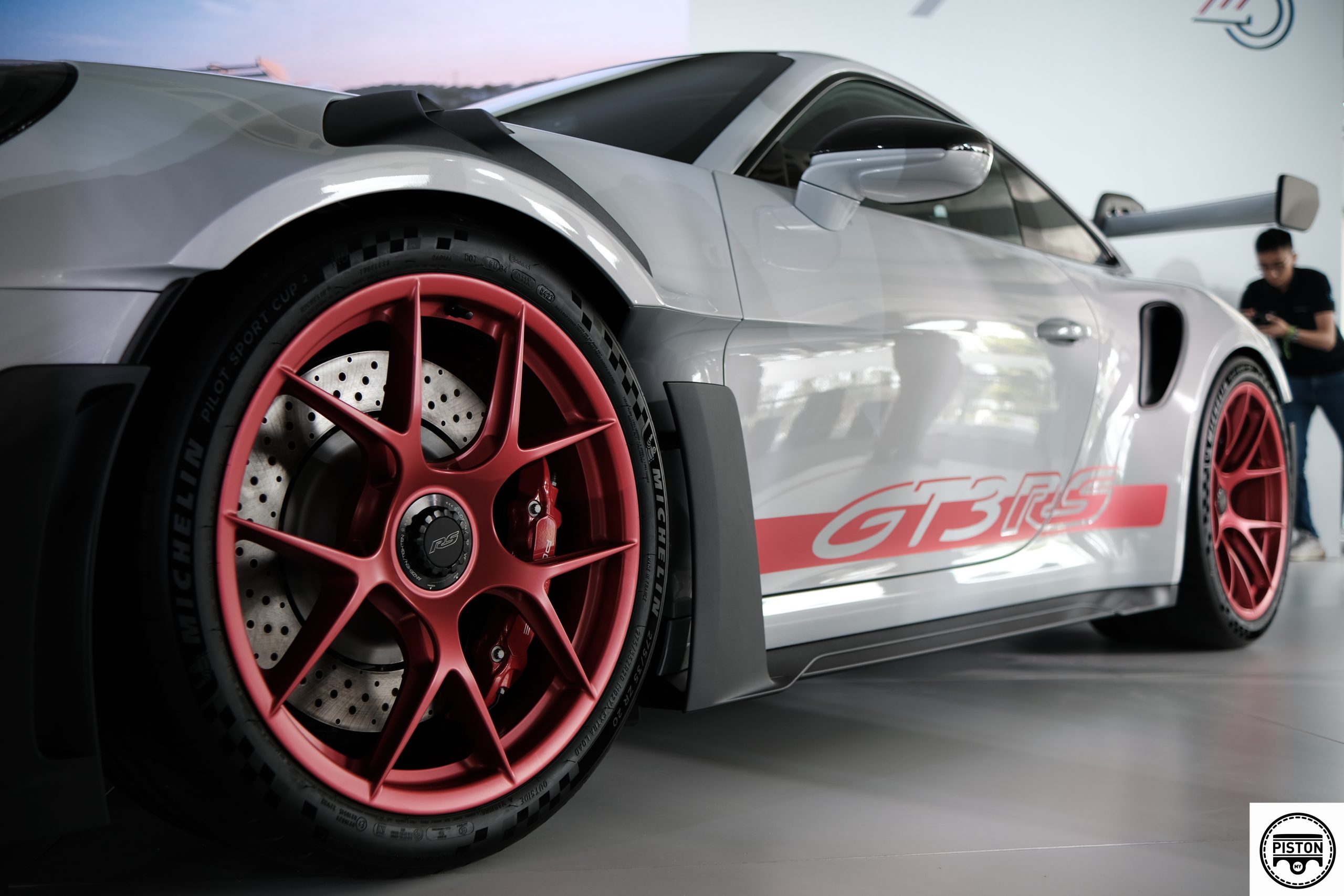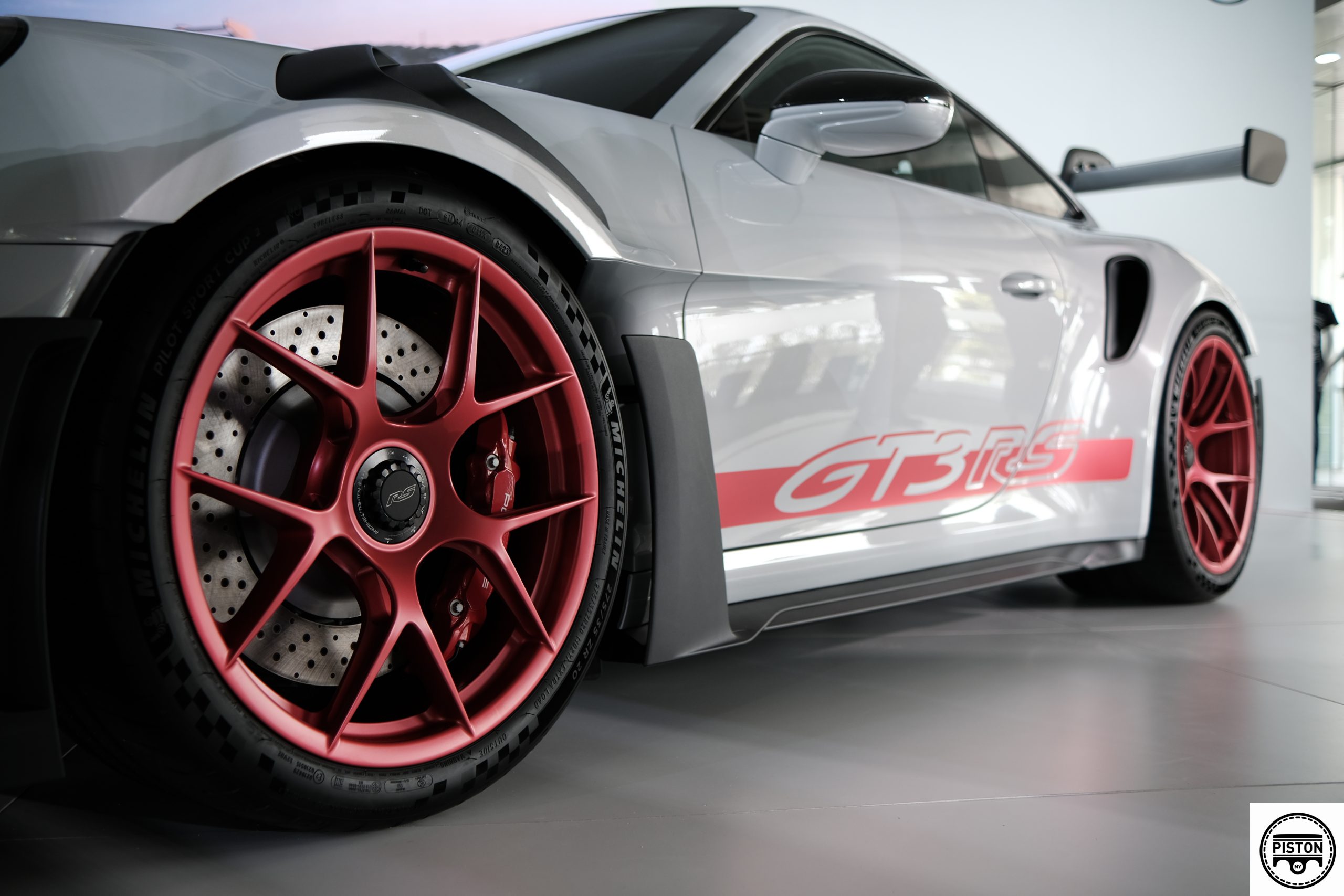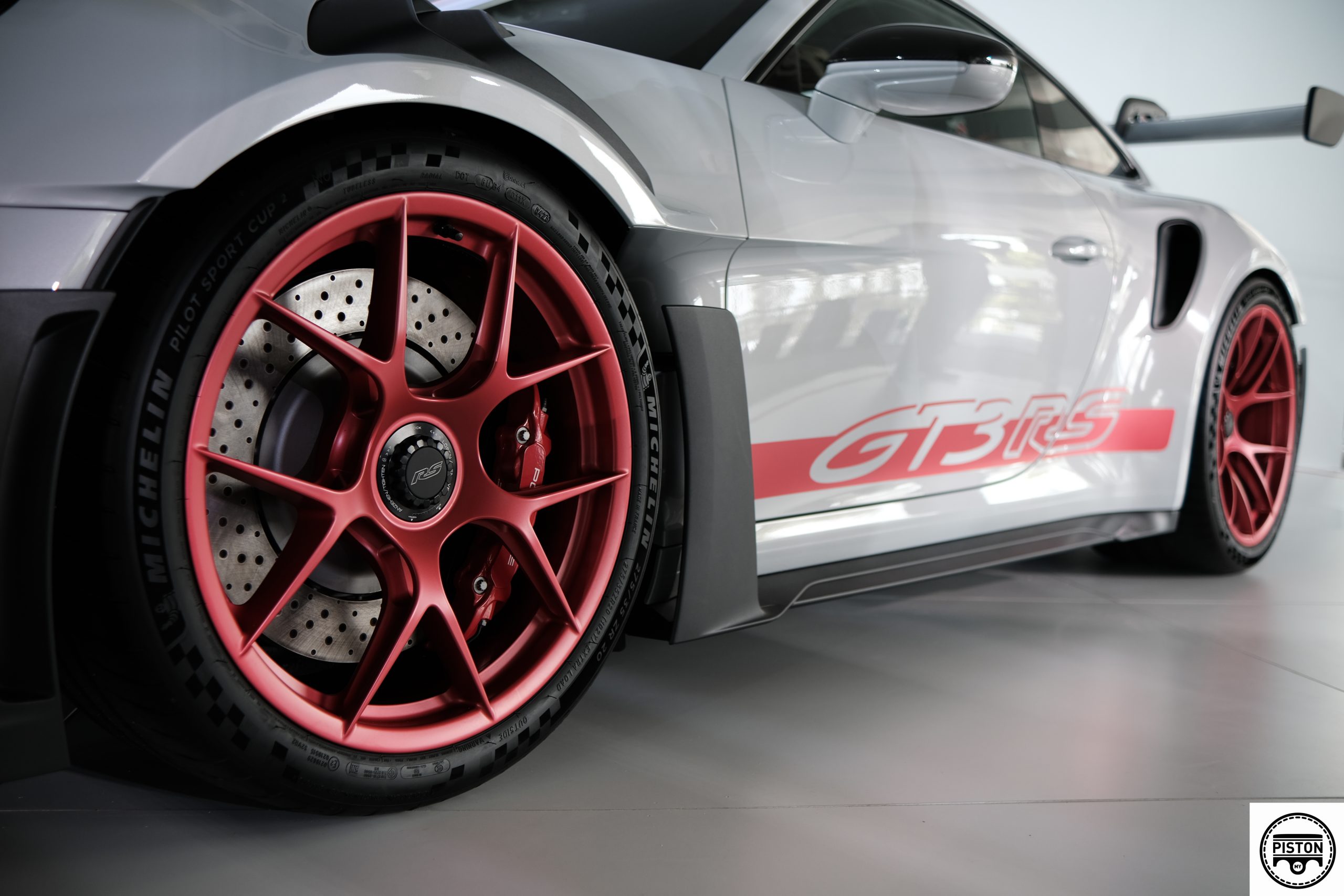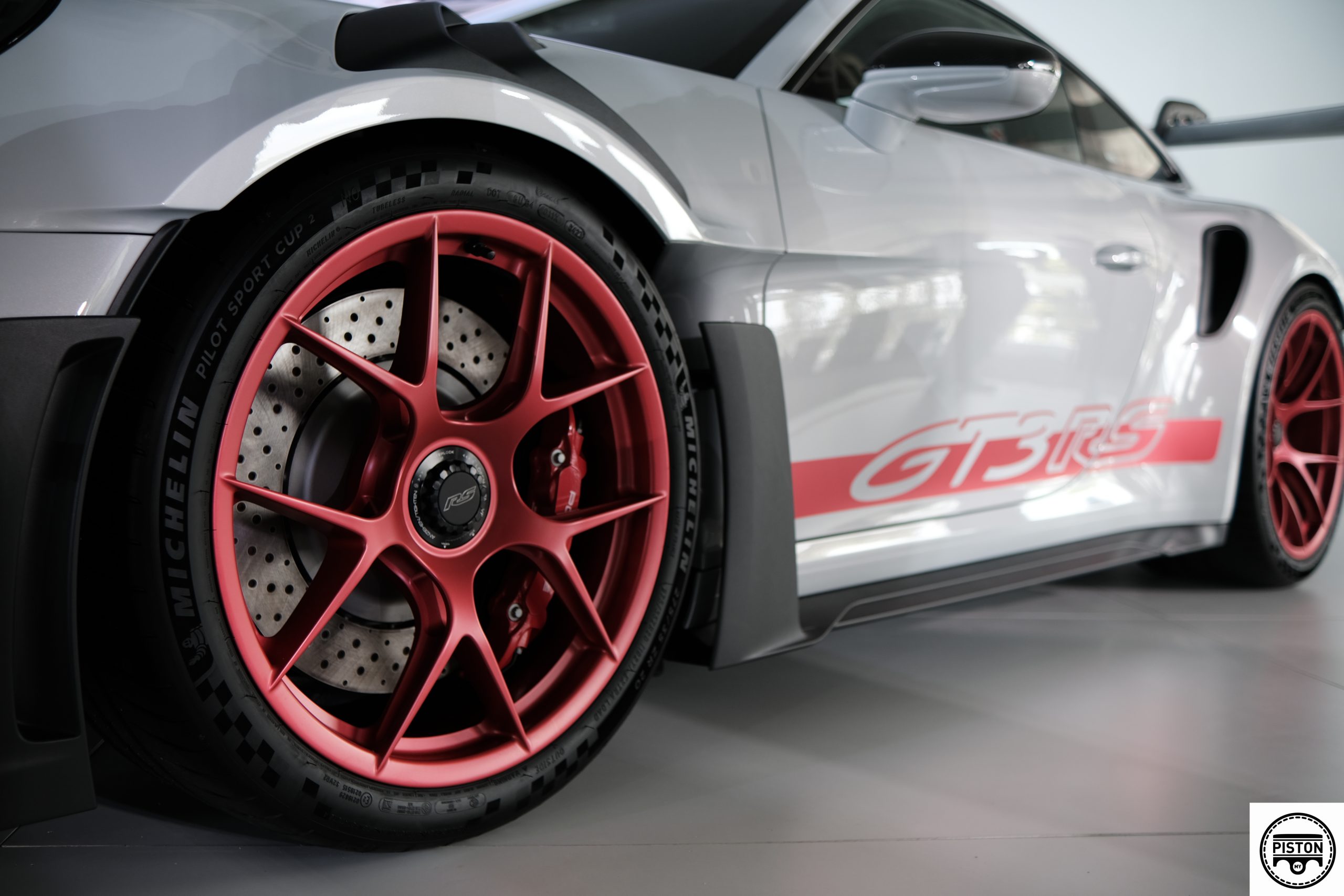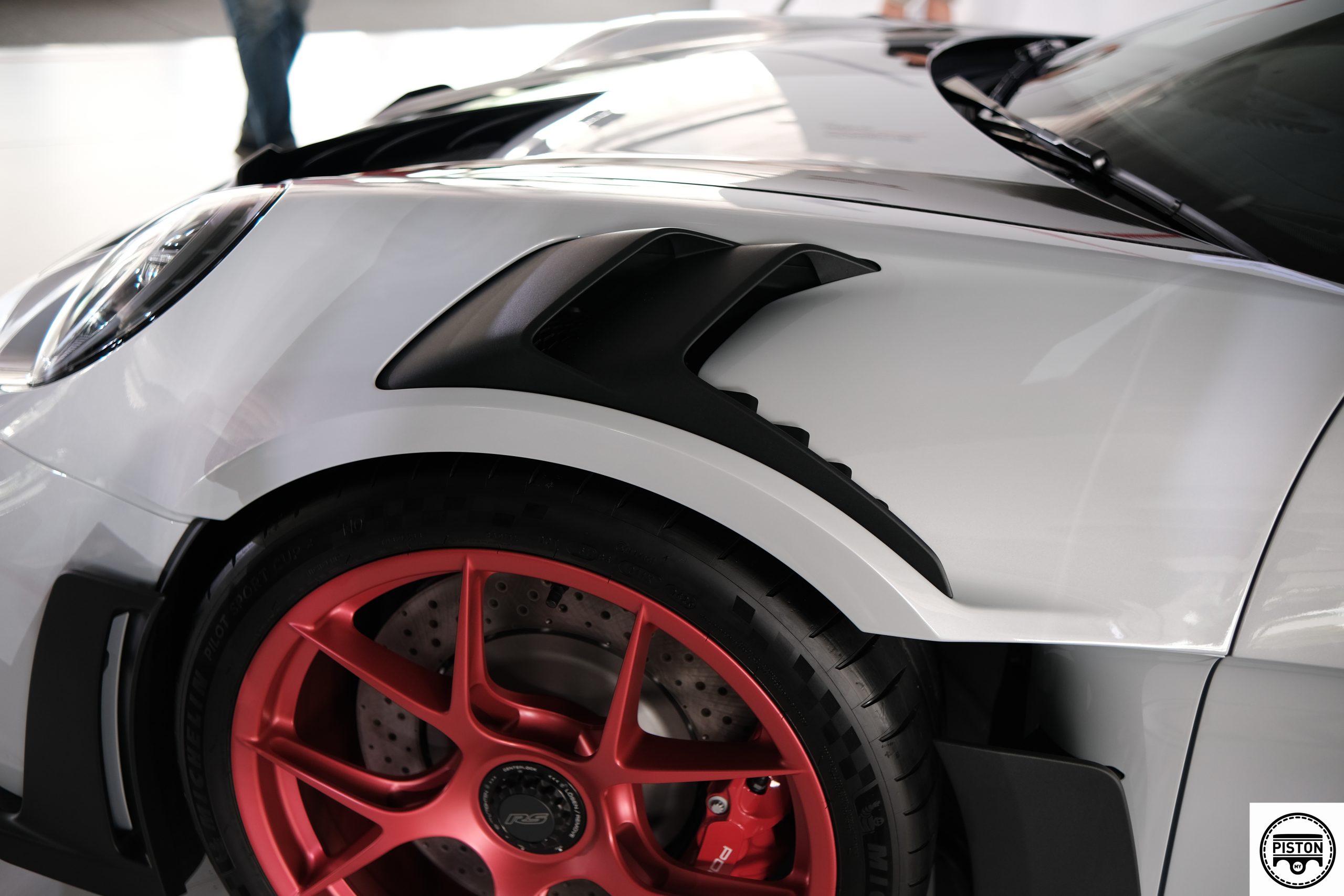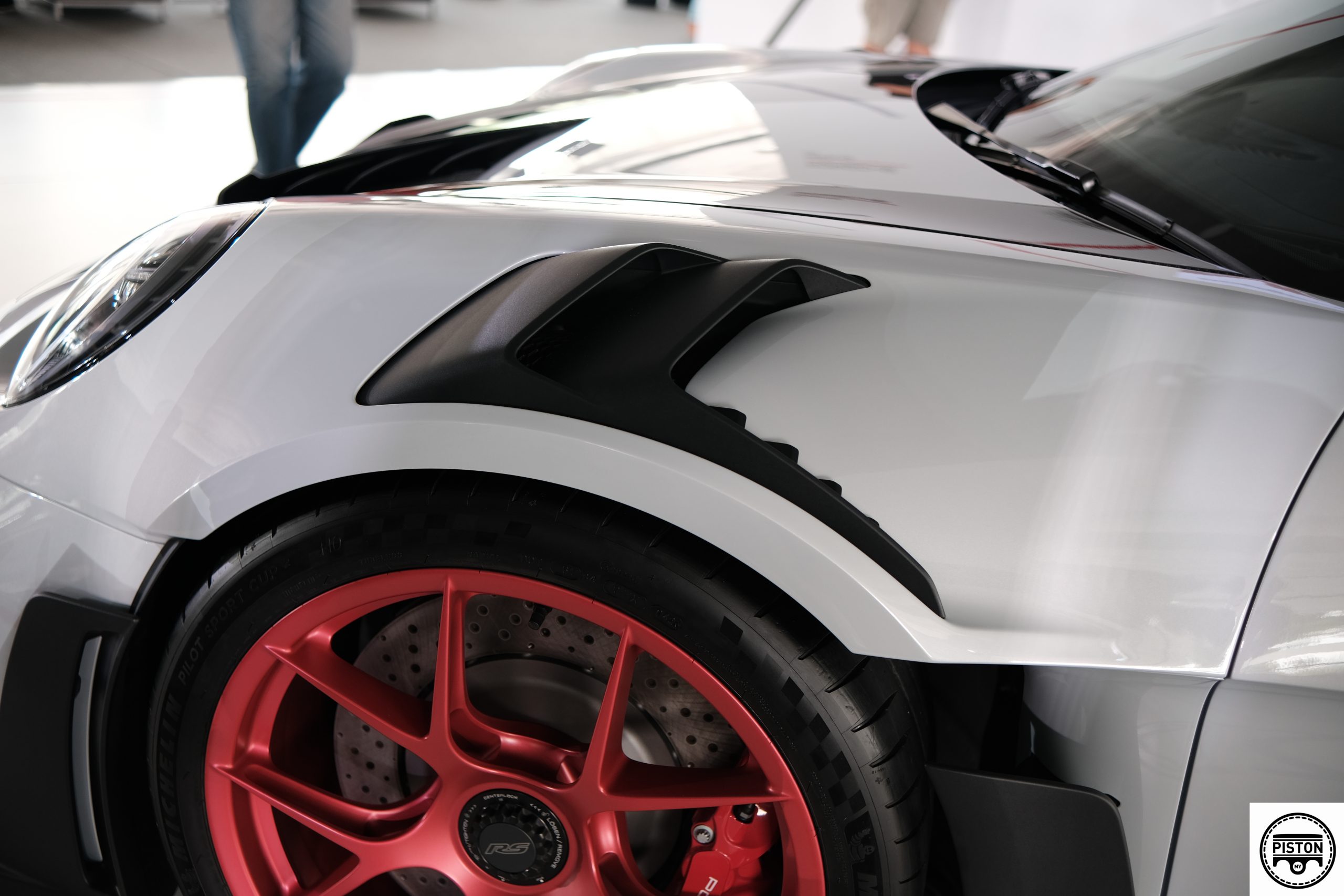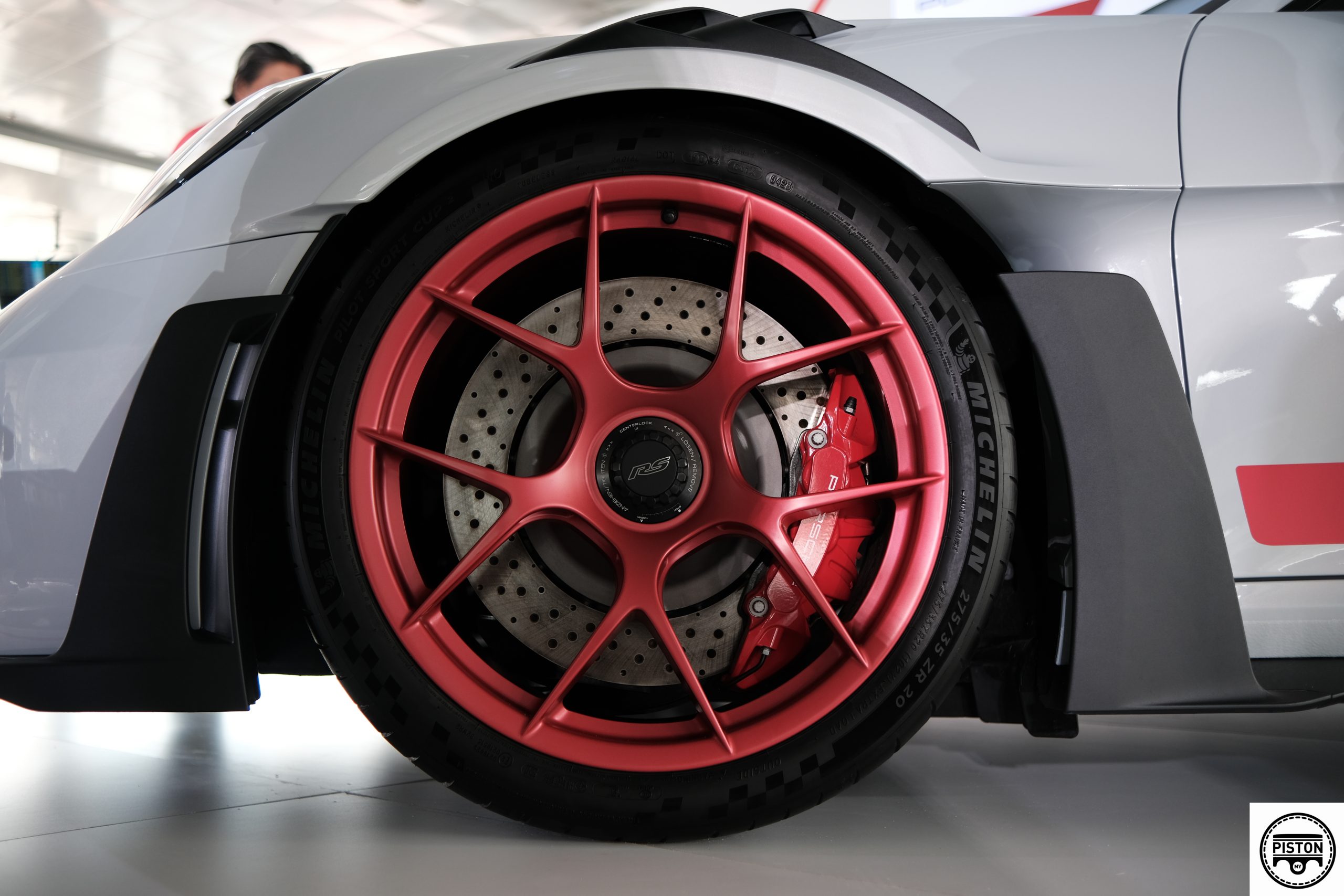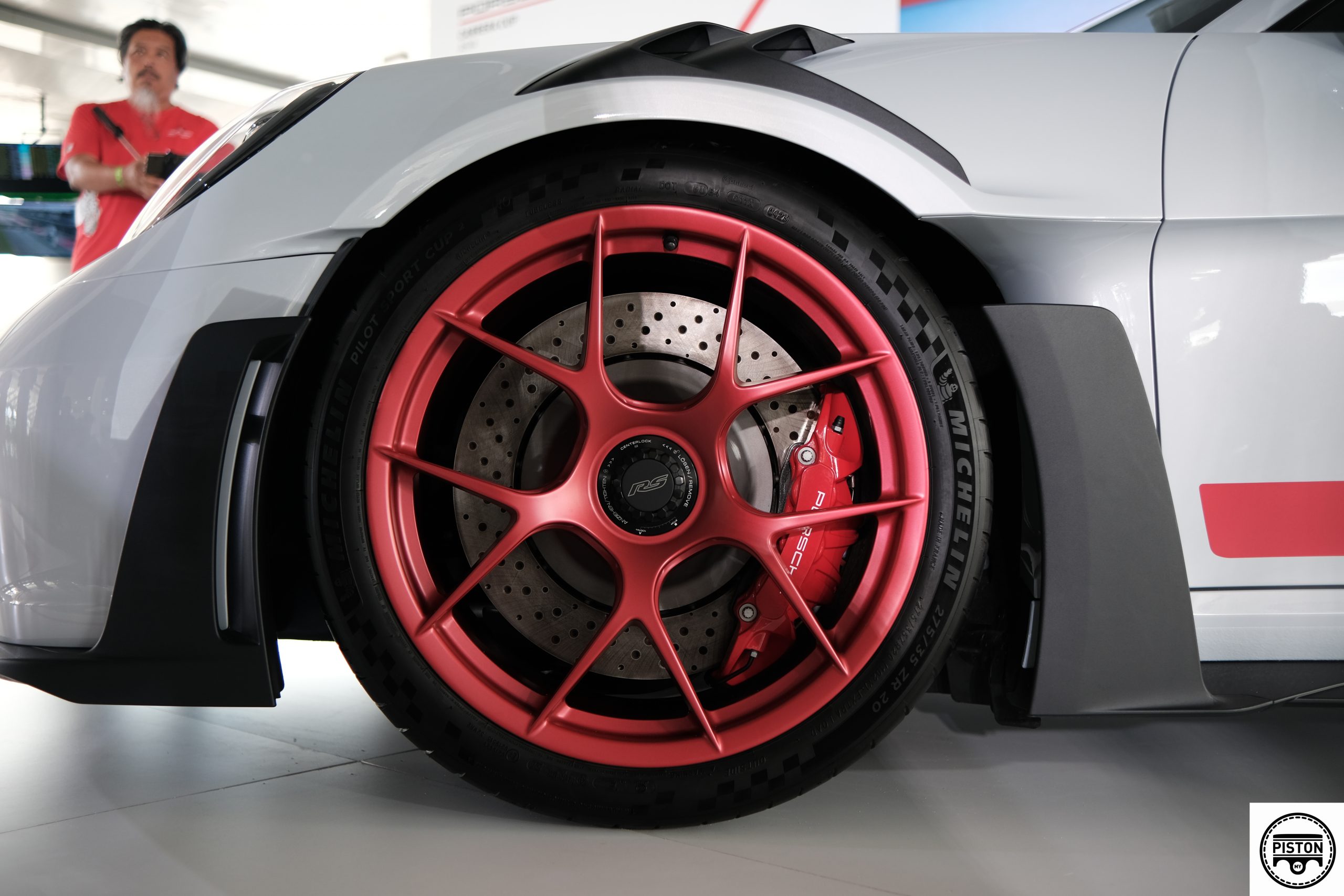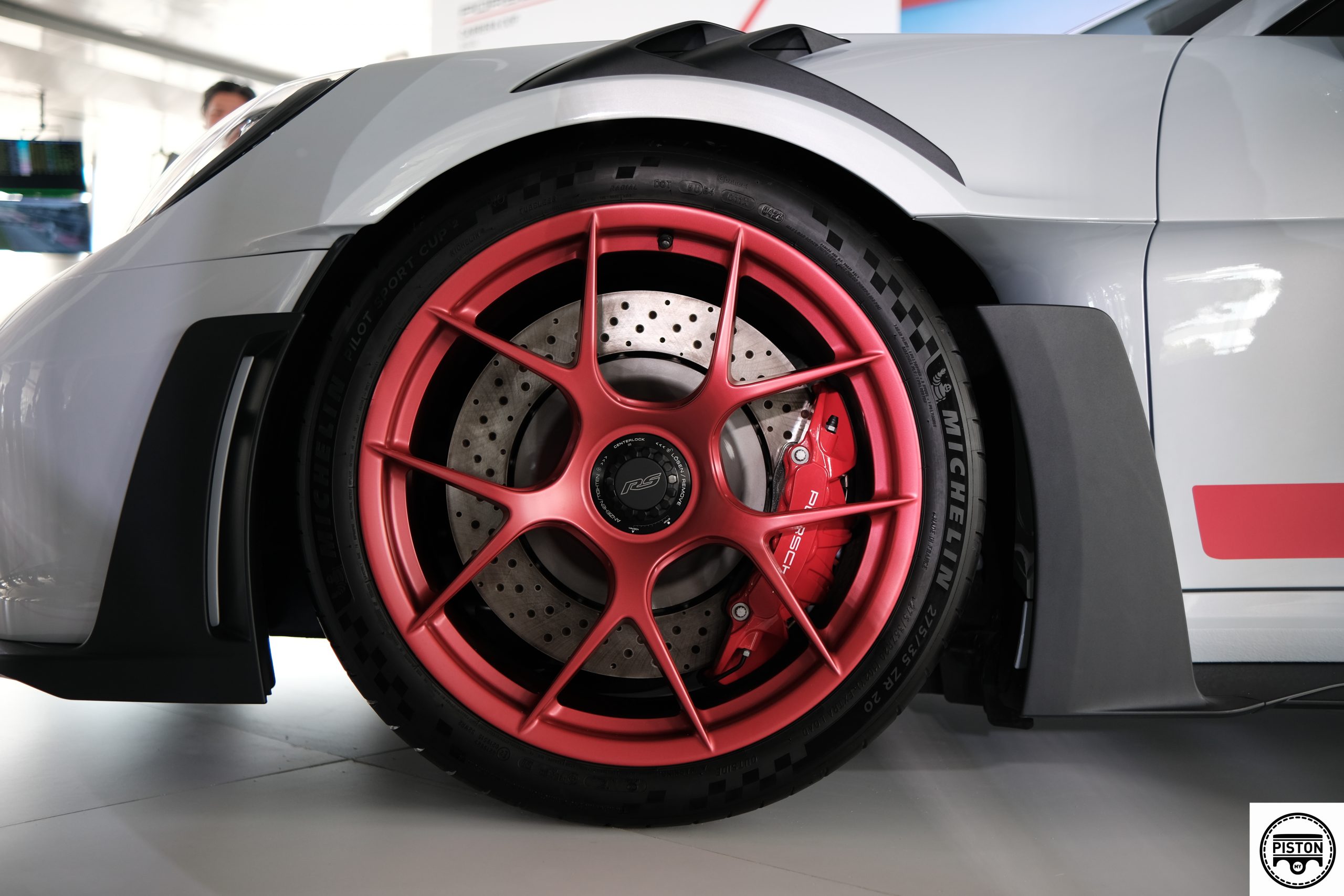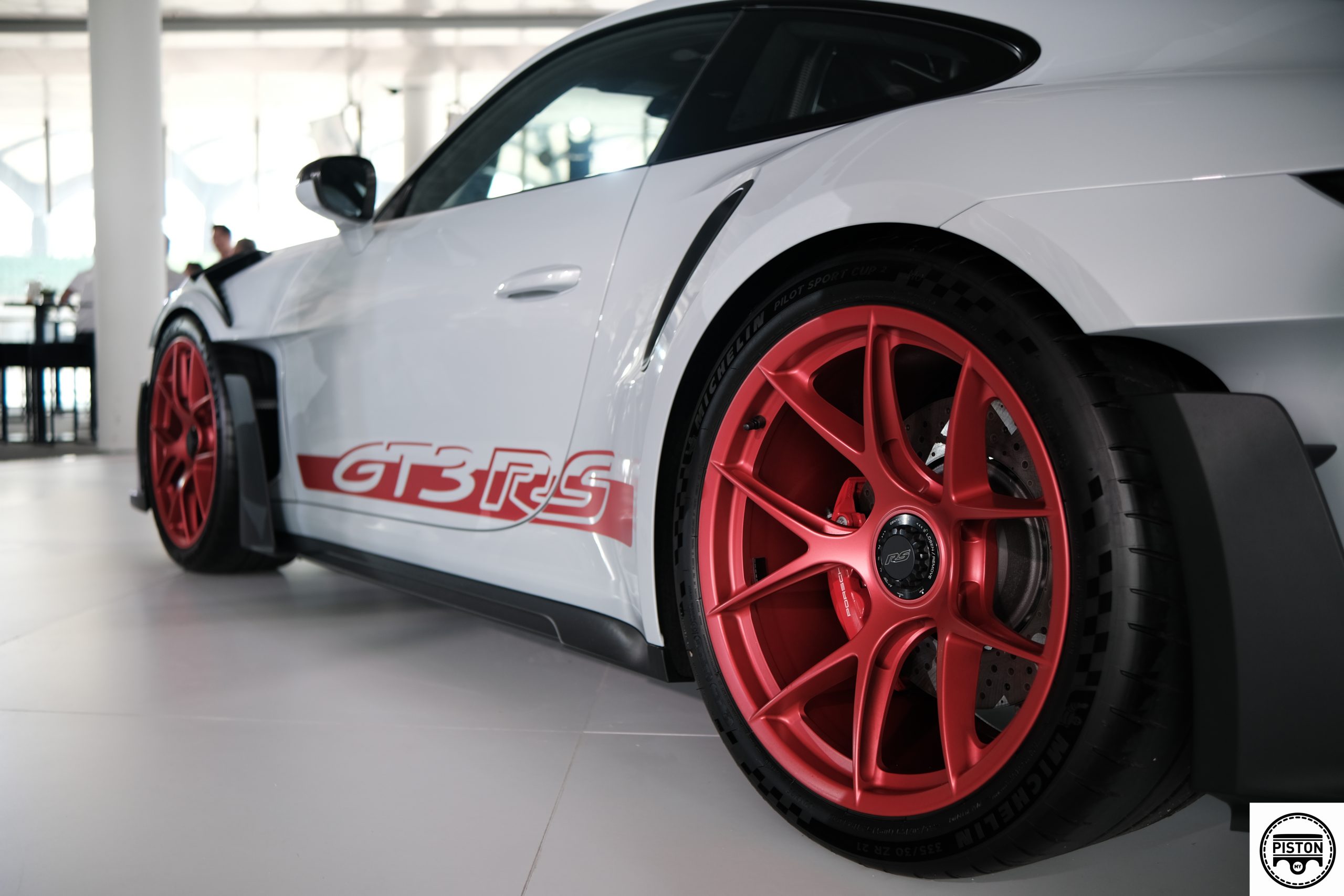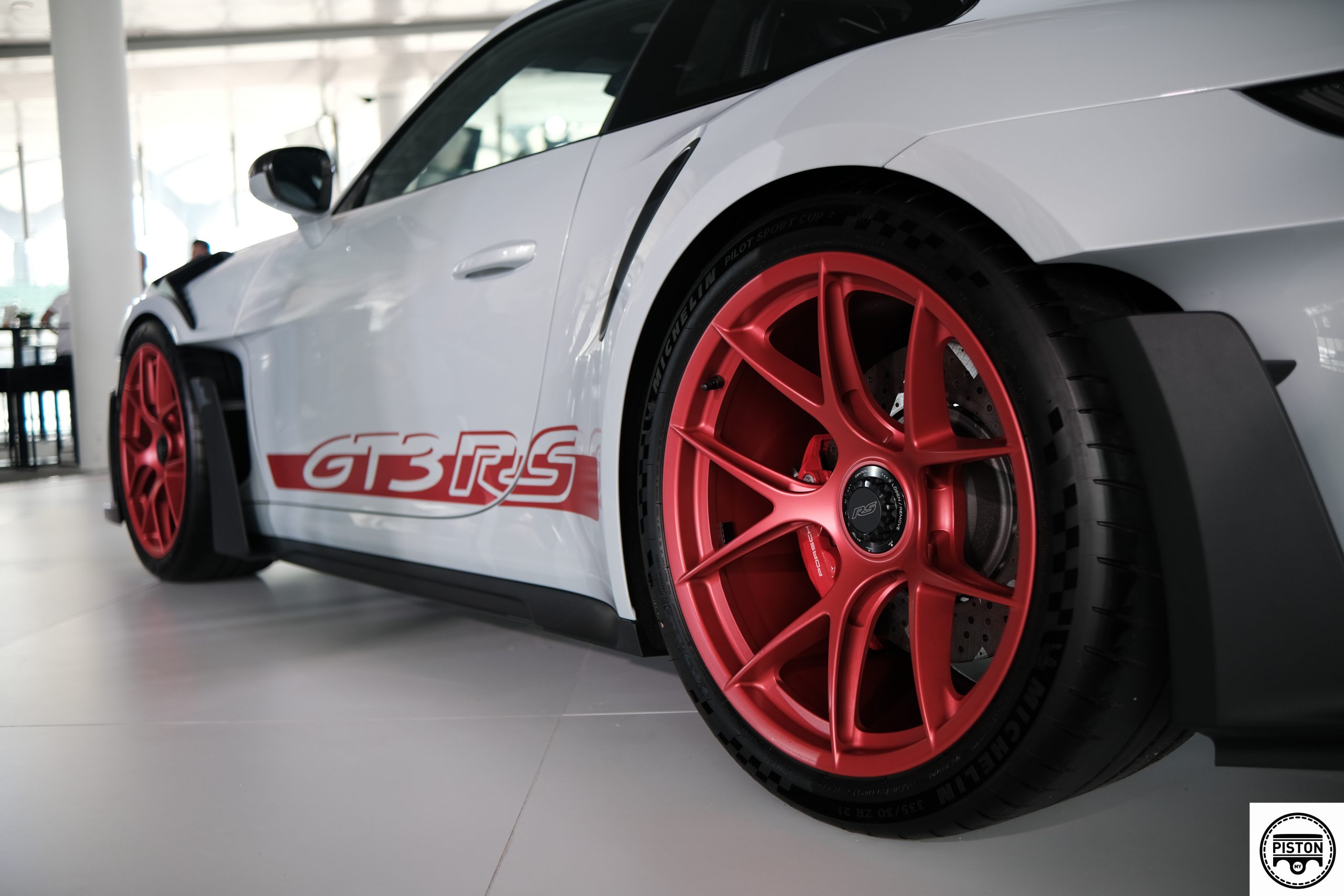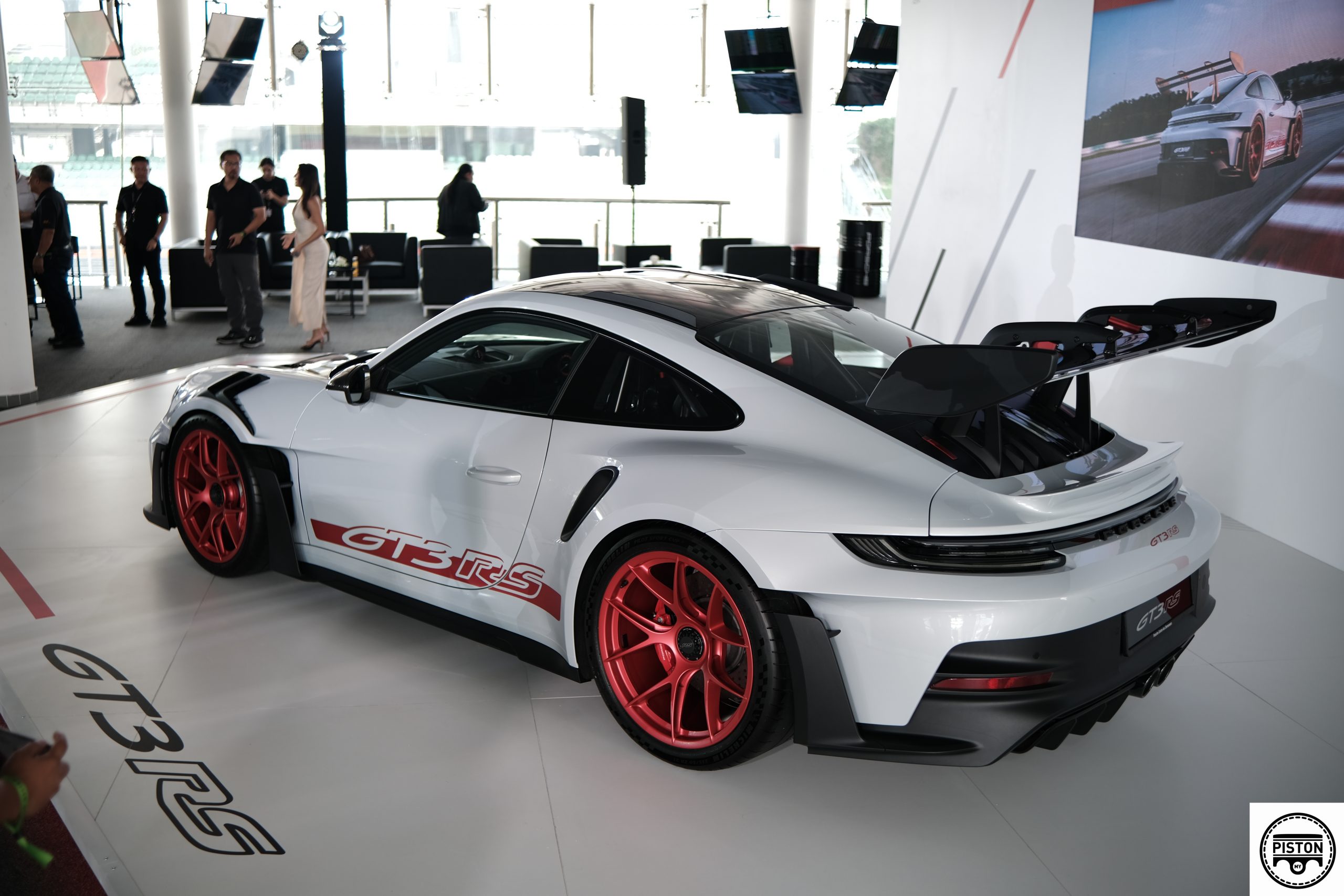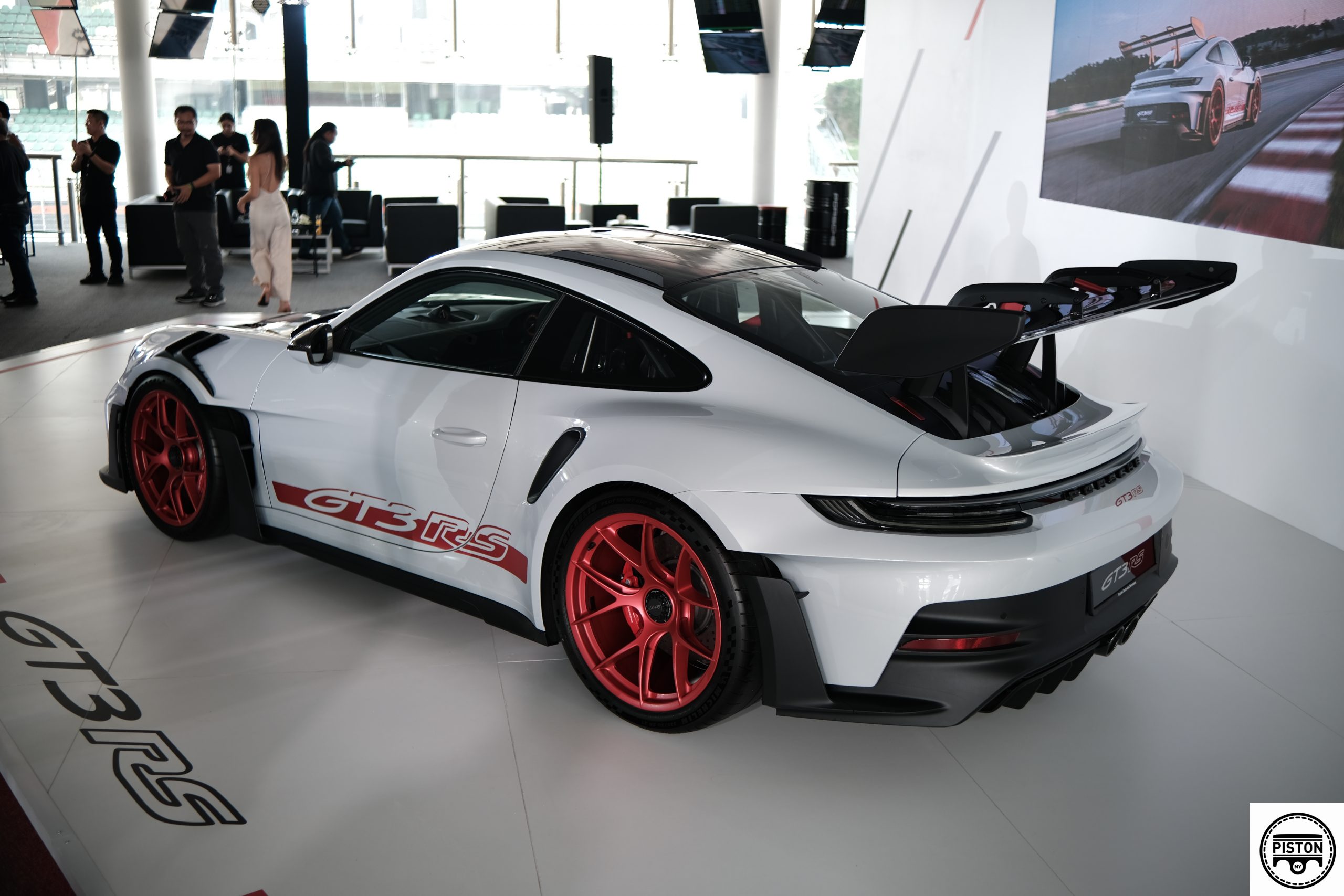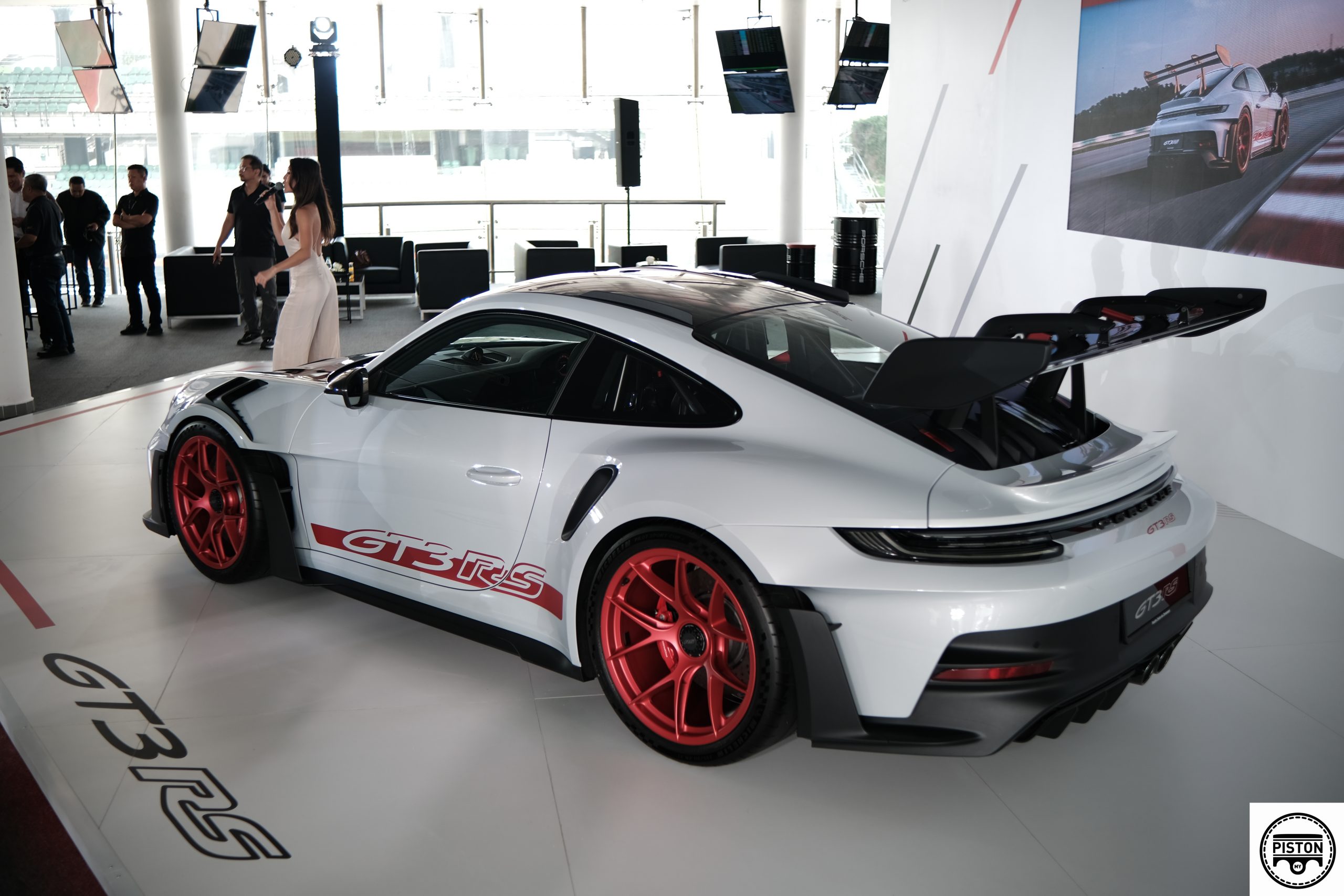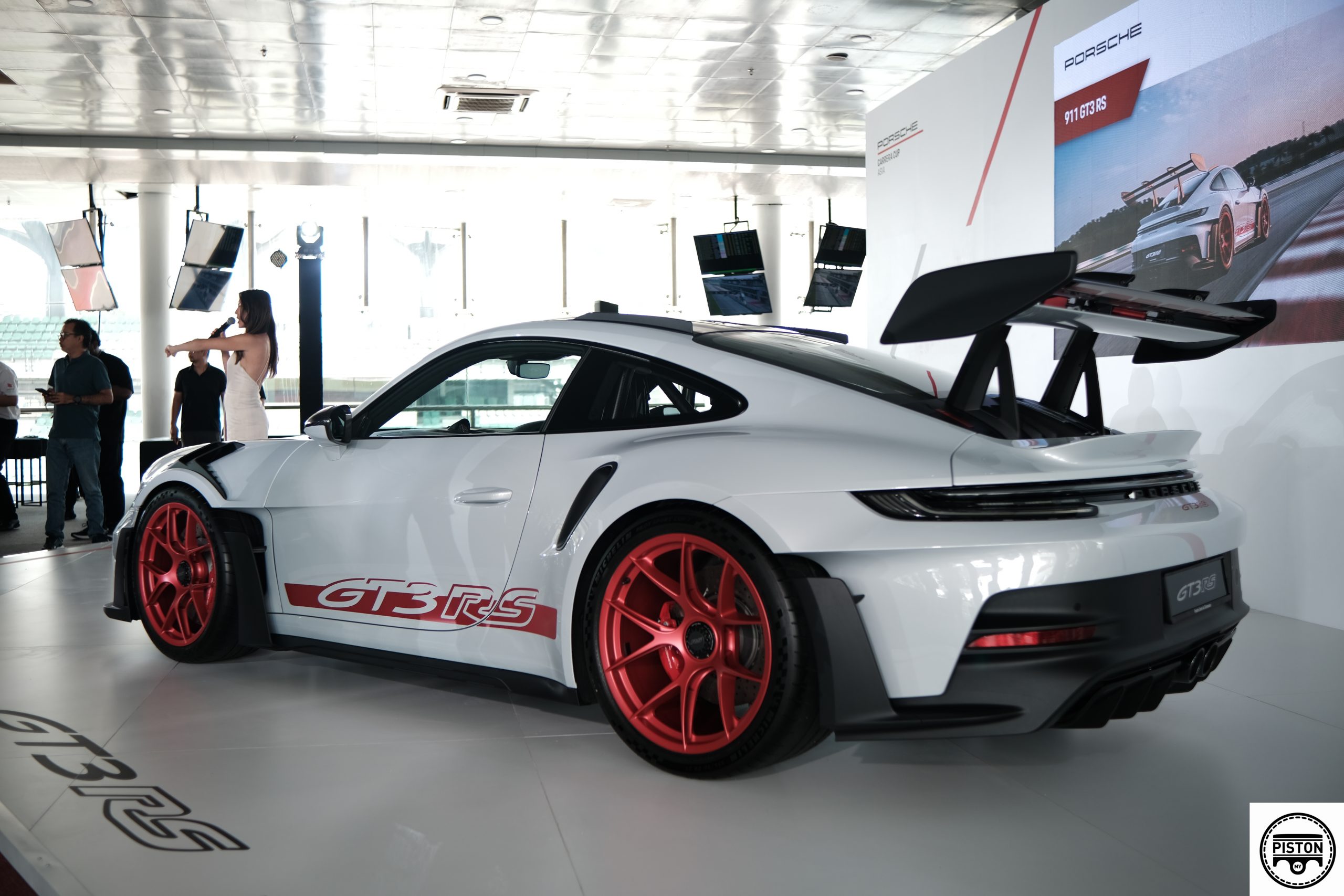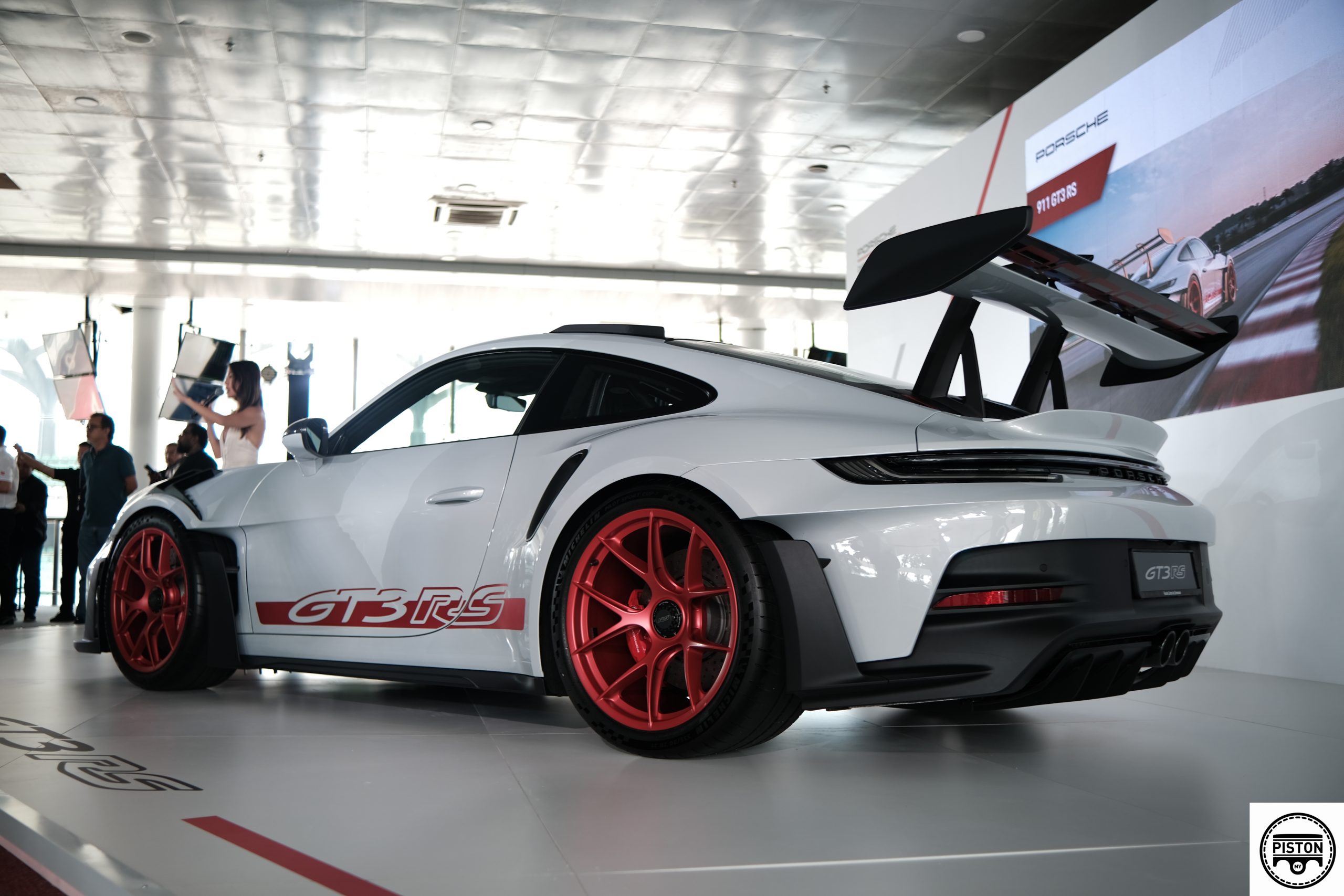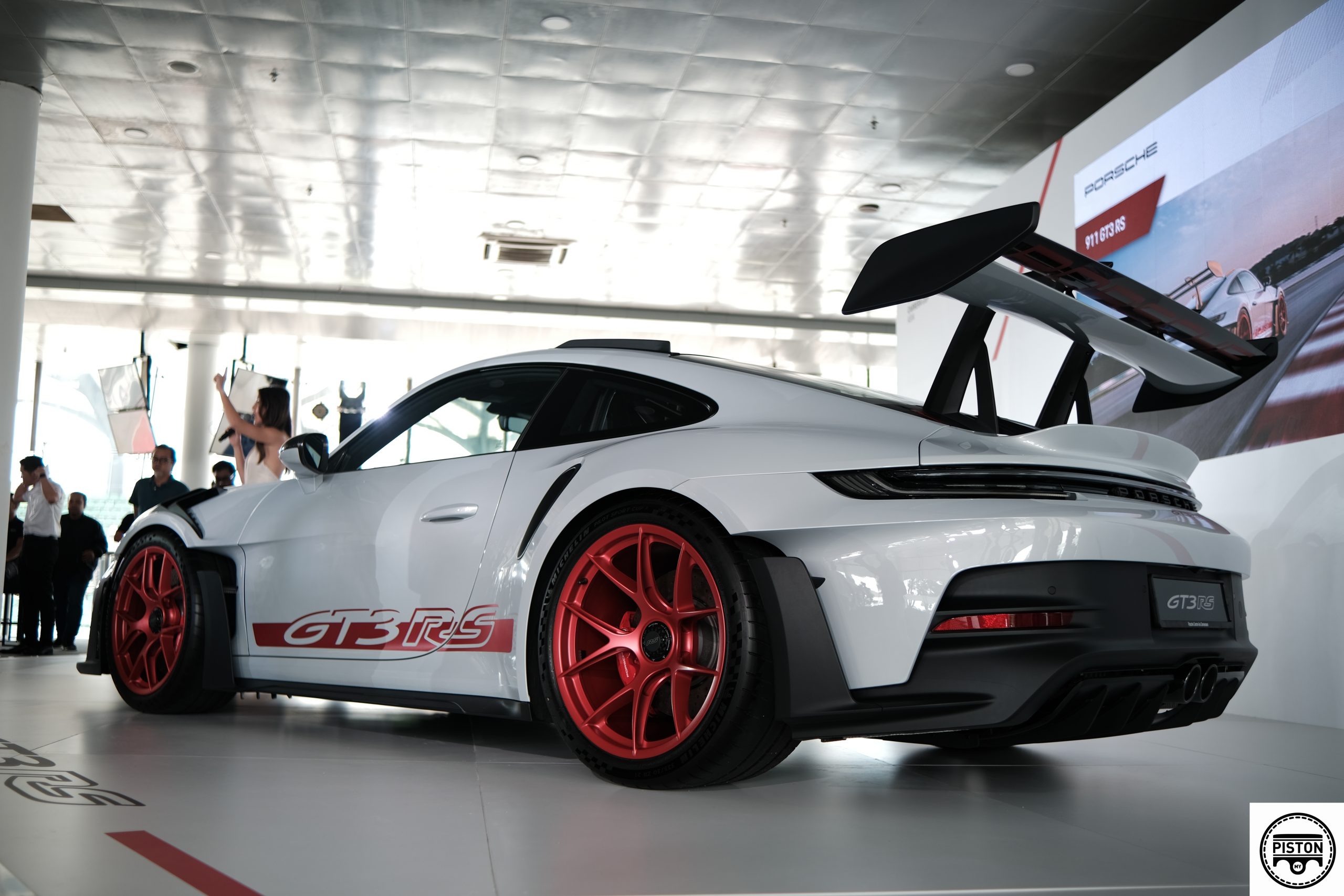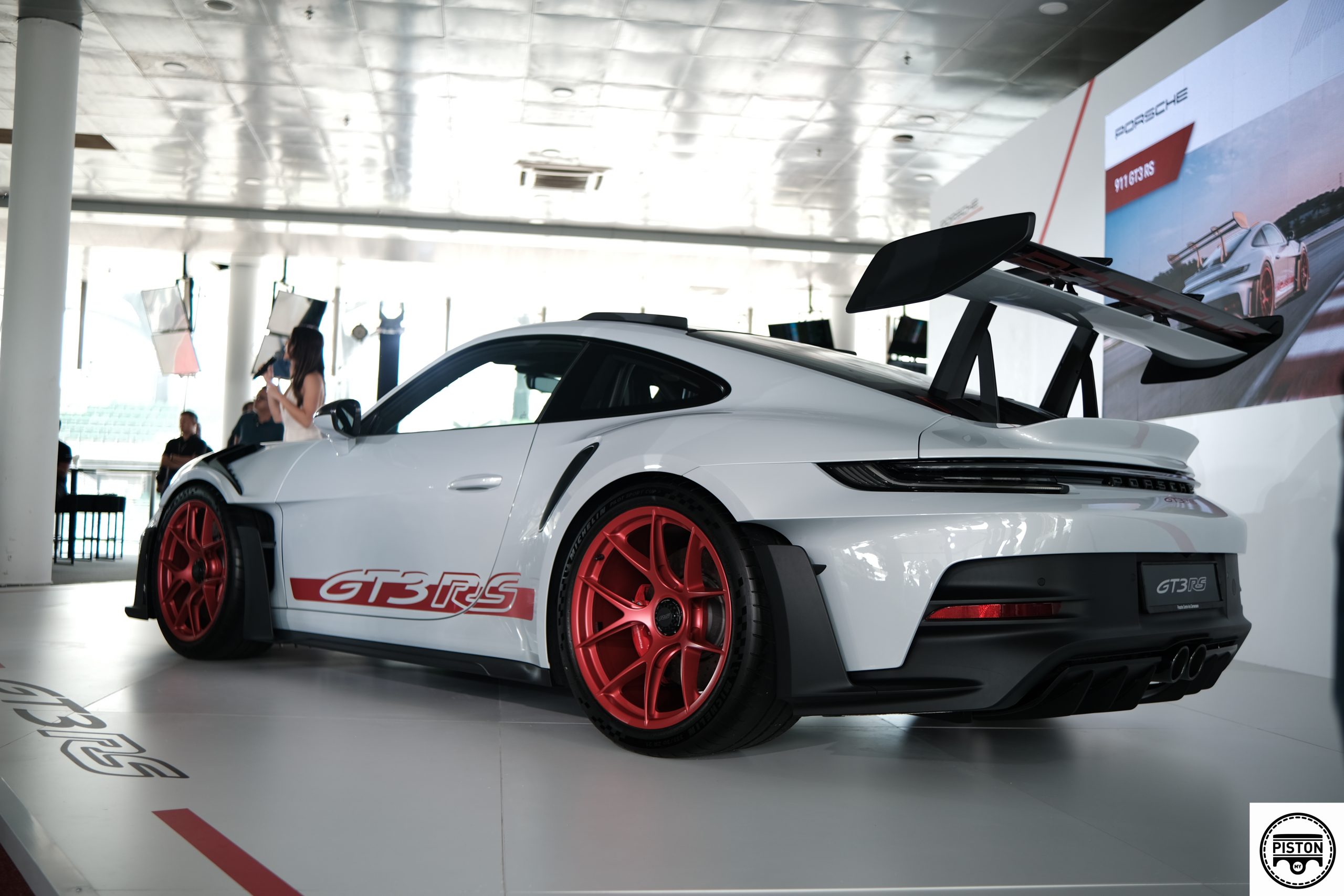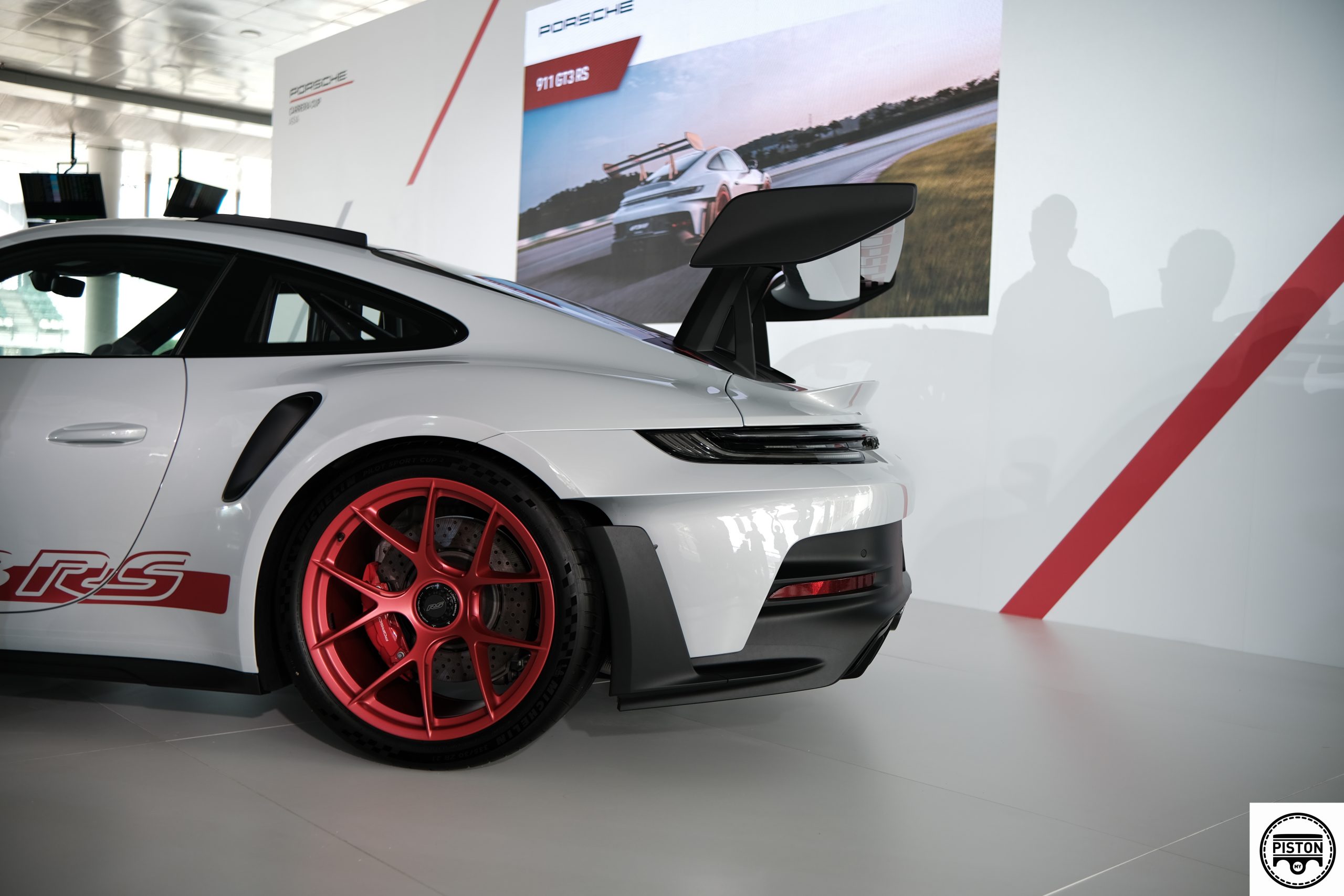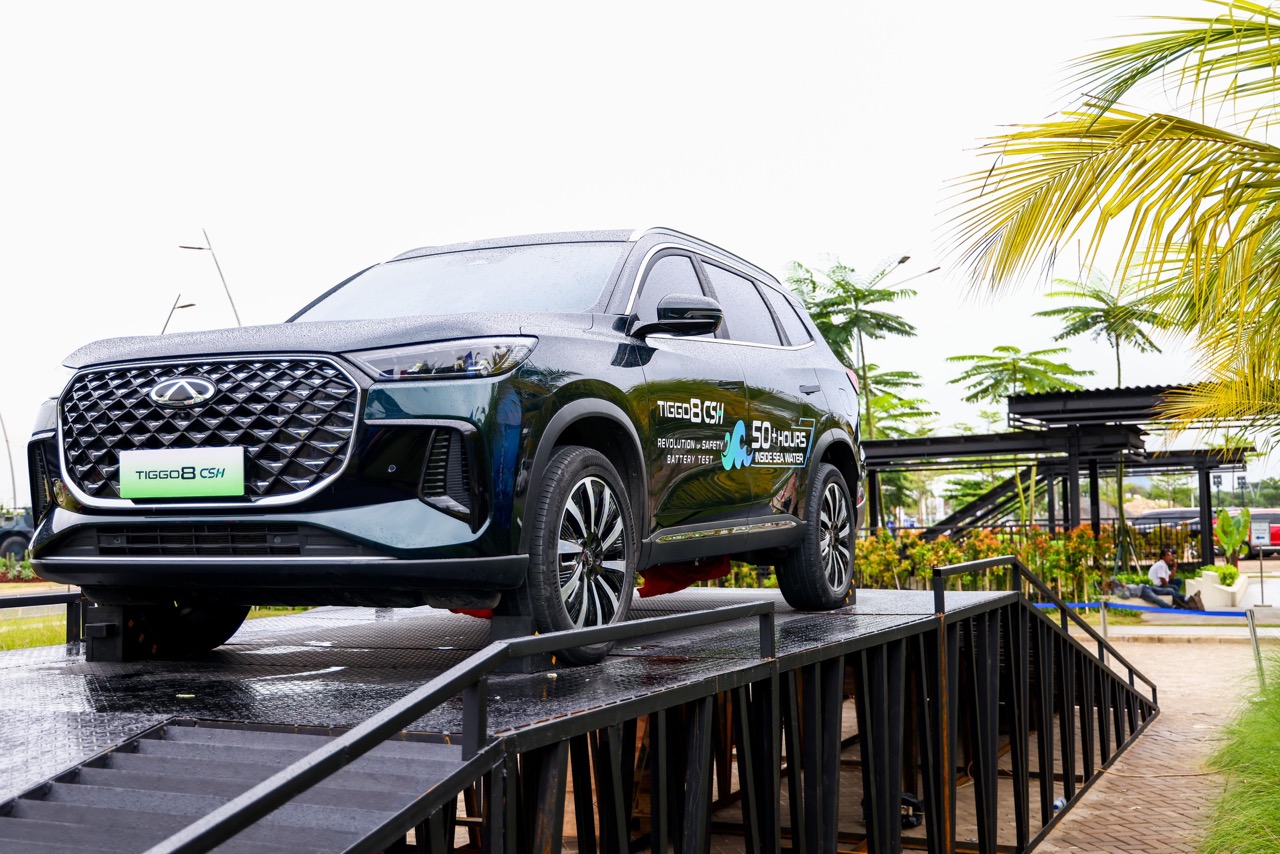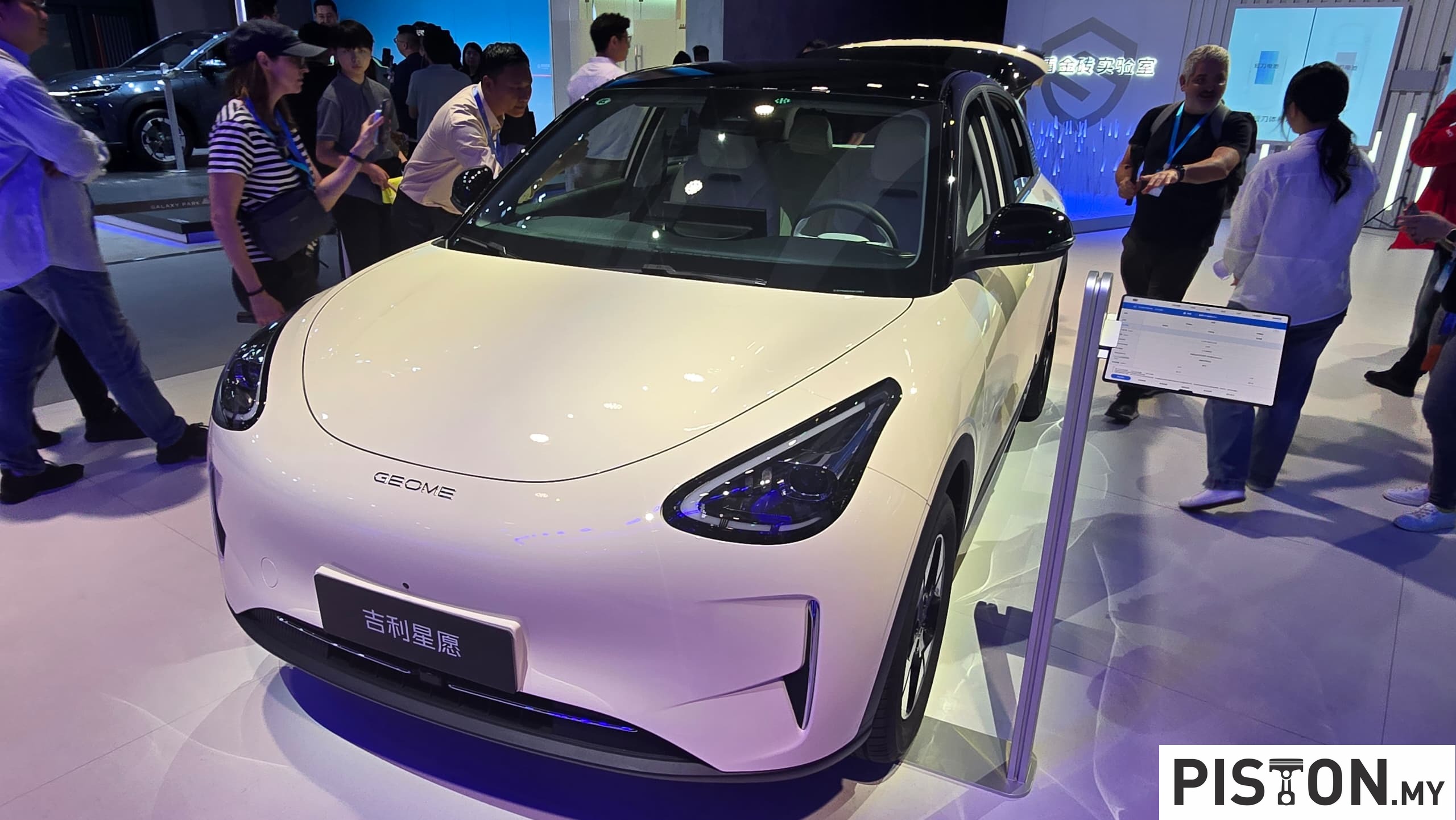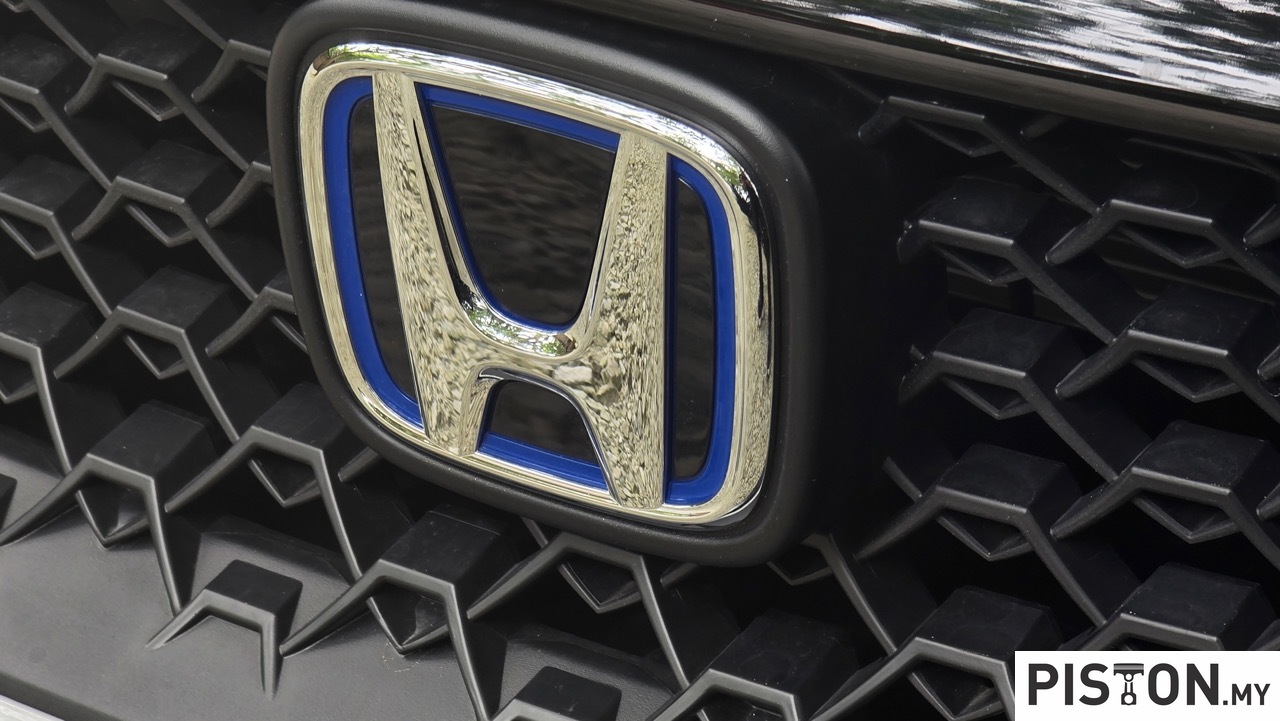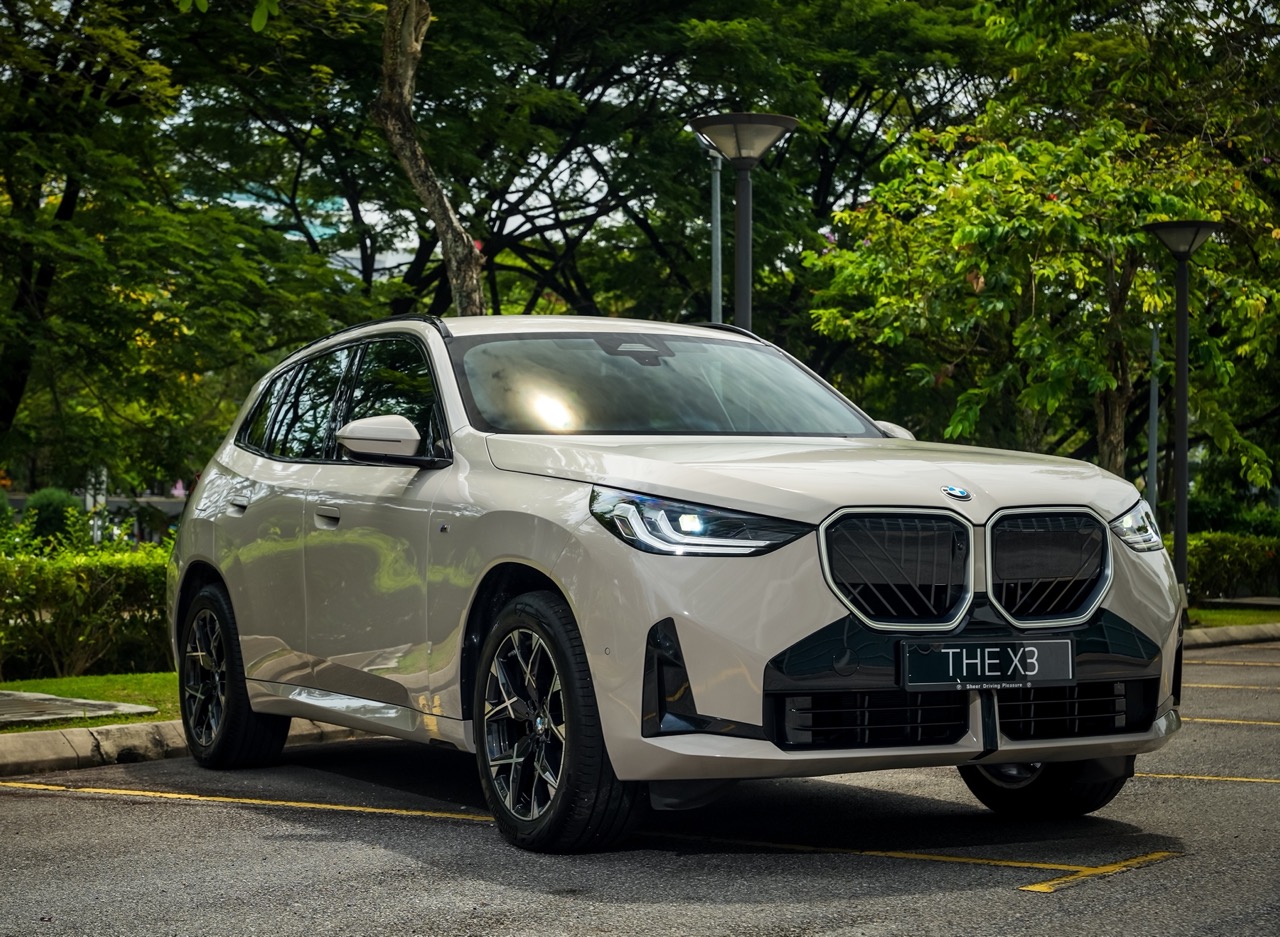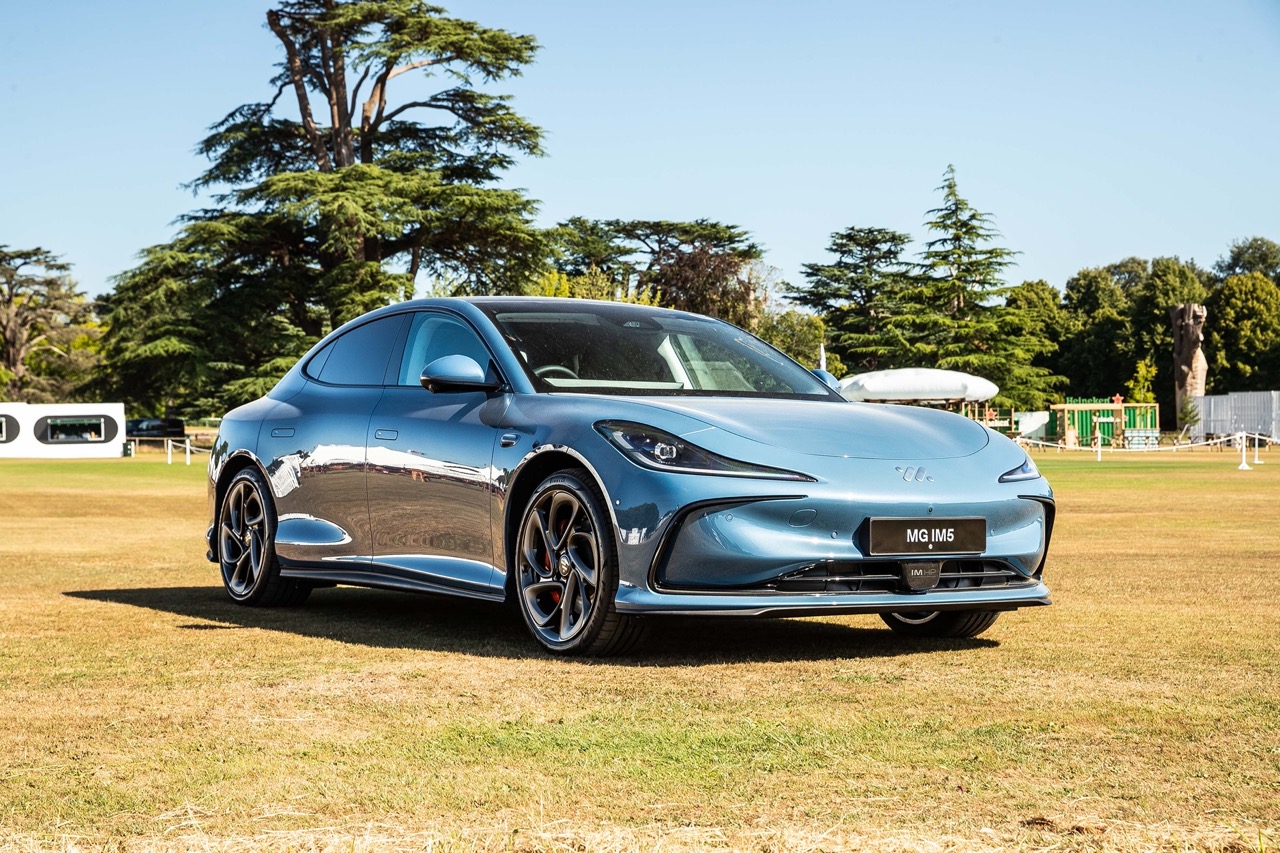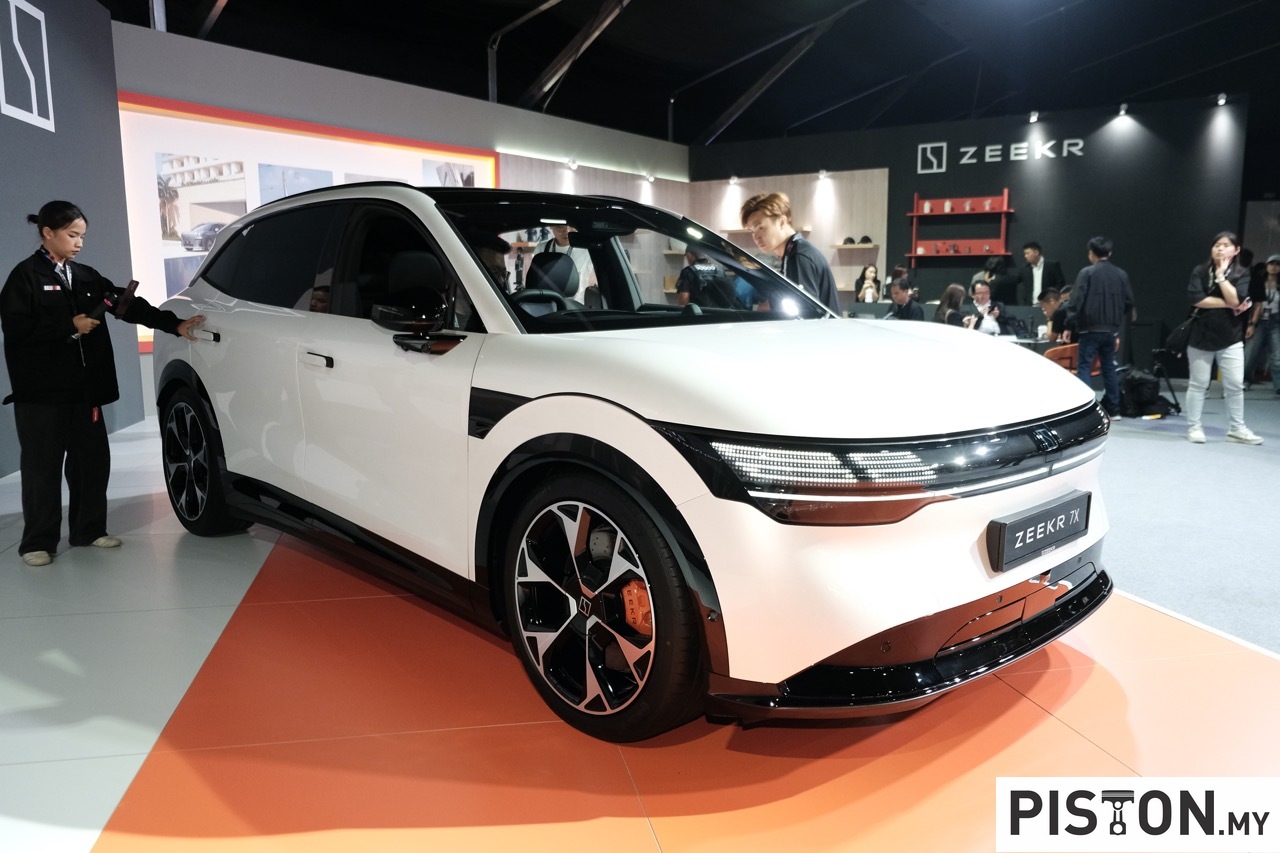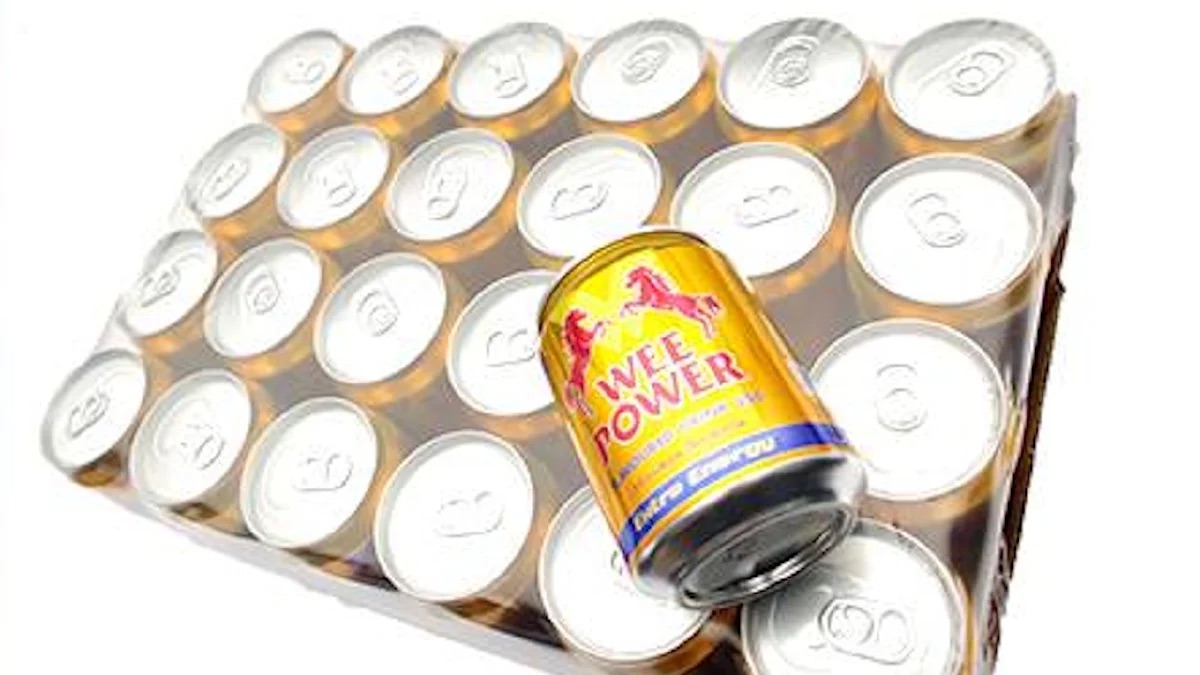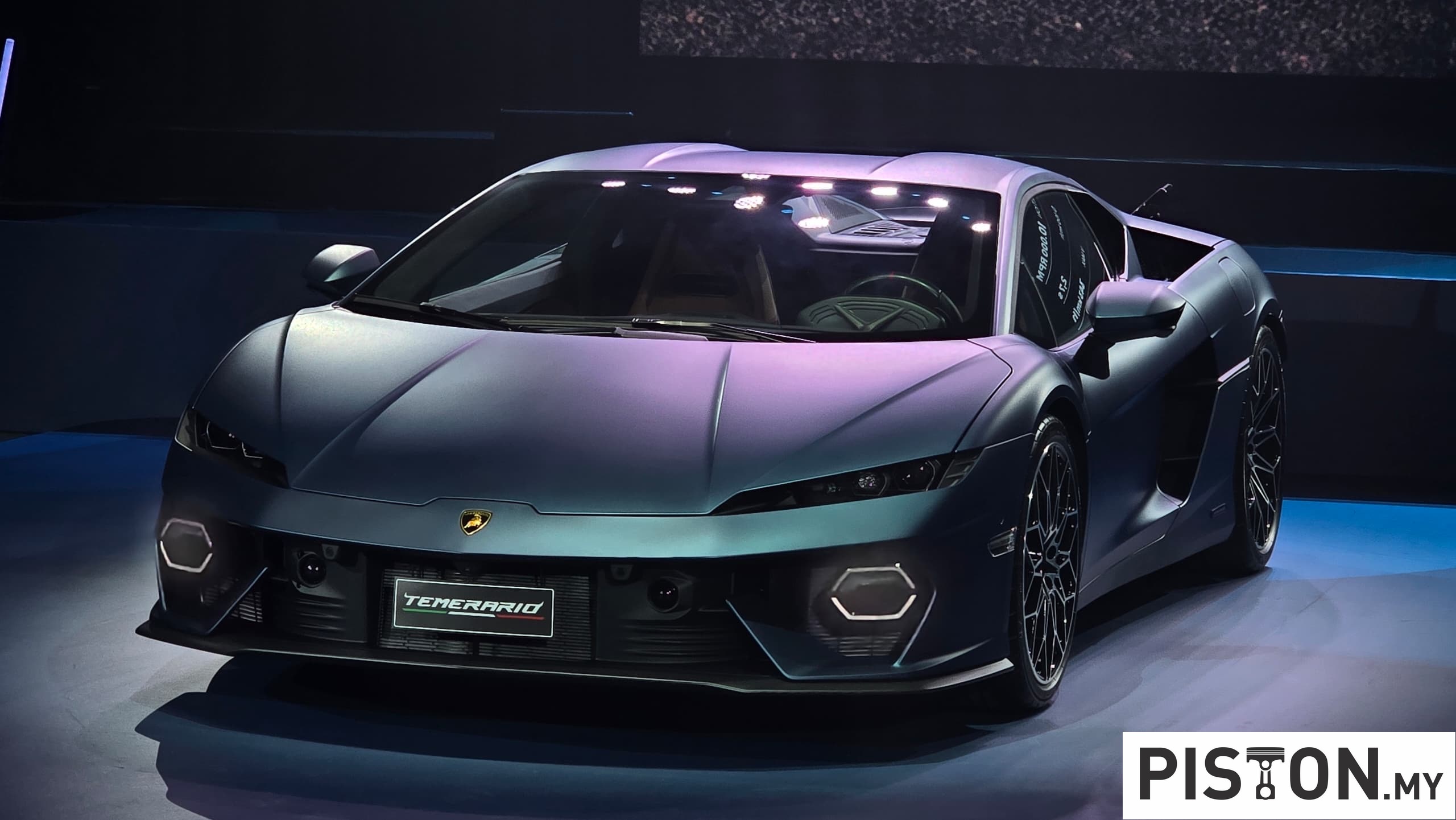Porsche Malaysia introduces the new Porsche 911 GT3 RS: a true masterpiece of automotive engineering. With a sleek design, advanced racing technology, and unparalleled power, the Porsche 911 GT3 RS is a dominant force on the road and the track that joins the 911 lineup here in Malaysia.
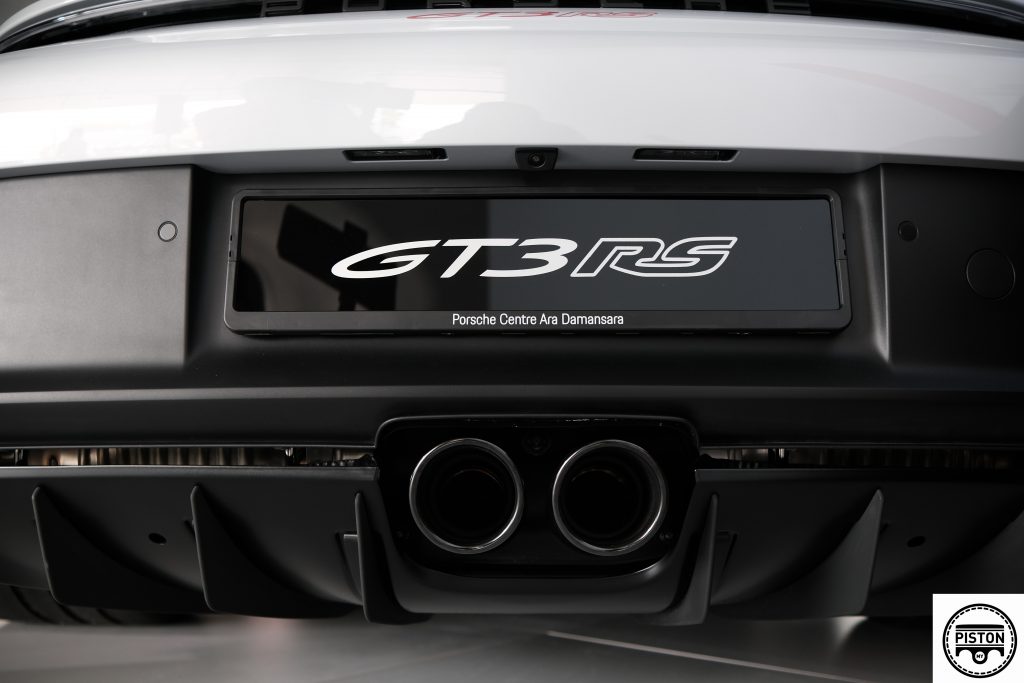
The 2022 launch of the GT3 RS brought forth a marvel where the aerodynamics of this 911 street car surpasses even those of the GT3 R race car.
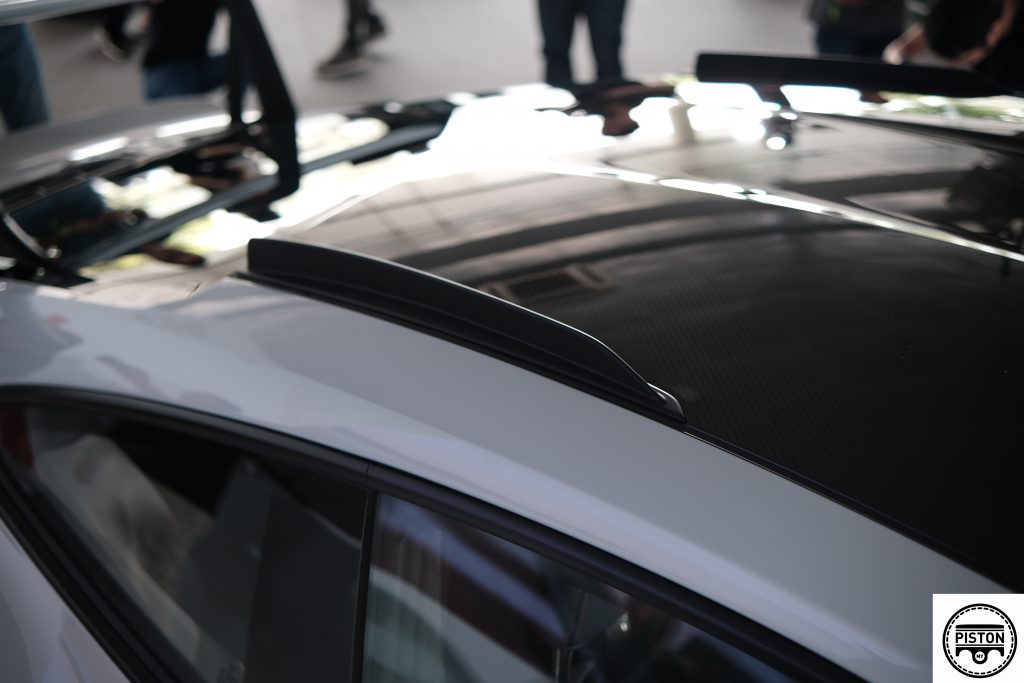
What’s more interesting is that at the heart of the substantial performance enhancement lies the innovative concept of a central radiator – a concept initially introduced in the Le Mans class-winning 911 RSR and later adopted by the 911 GT3 R. Departing from the conventional three-radiator setup of its predecessors, the latest 911 GT3 RS implements a sizeable, angled centre radiator situated in the front of the vehicle, occupying the space typically designated for luggage in other 911 models. This ingenious modification has not only liberated side space but has also facilitated the integration of dynamic aerodynamic components.
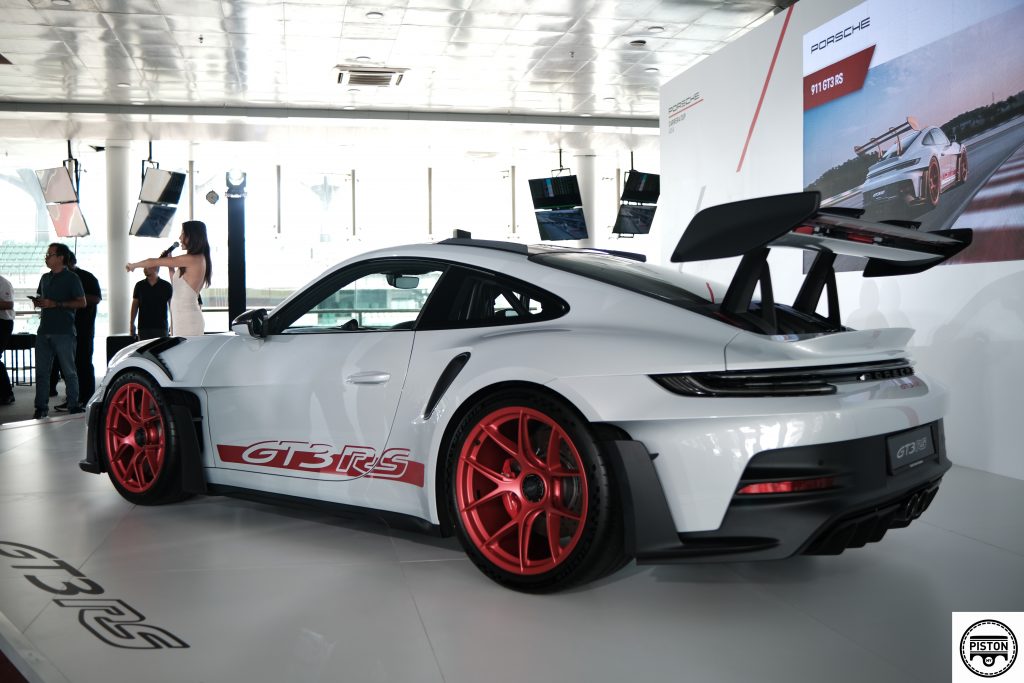
Aerodynamics
Speaking of aerodynamics, the new 911 GT3 RS showcases numerous functional aerodynamic components in its design. A notable highlight is the swan-neck-mounted rear wing, larger than before, consisting of a fixed main part and an adjustable upper element. Notably, the wing’s upper edge surpasses the car’s roof height for the first time in Porsche’s production vehicles. The car’s front no longer includes a traditional front spoiler, replaced by a dividing front splitter that manages airflow over and under the vehicle. Sideblades efficiently direct air outward, while front wheel arches are ventilated through louvered openings in the front wings.
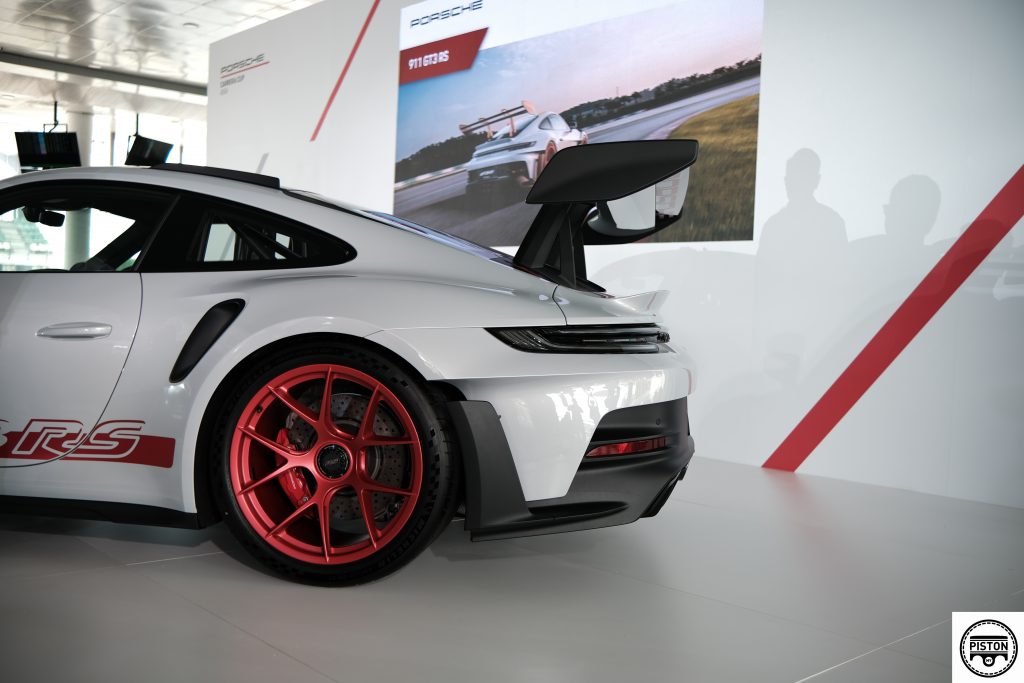
Inspired by the legendary Le Mans-winning 911 GT1, it incorporates inlets behind the front wheels to reduce wheel arch pressure. Side blades behind these inlets guide the airflow sideways. Air from the centrally positioned radiator is expelled through sizable openings on the front lid. Roof fins channel air outward, promoting cooler rear intake temperatures.
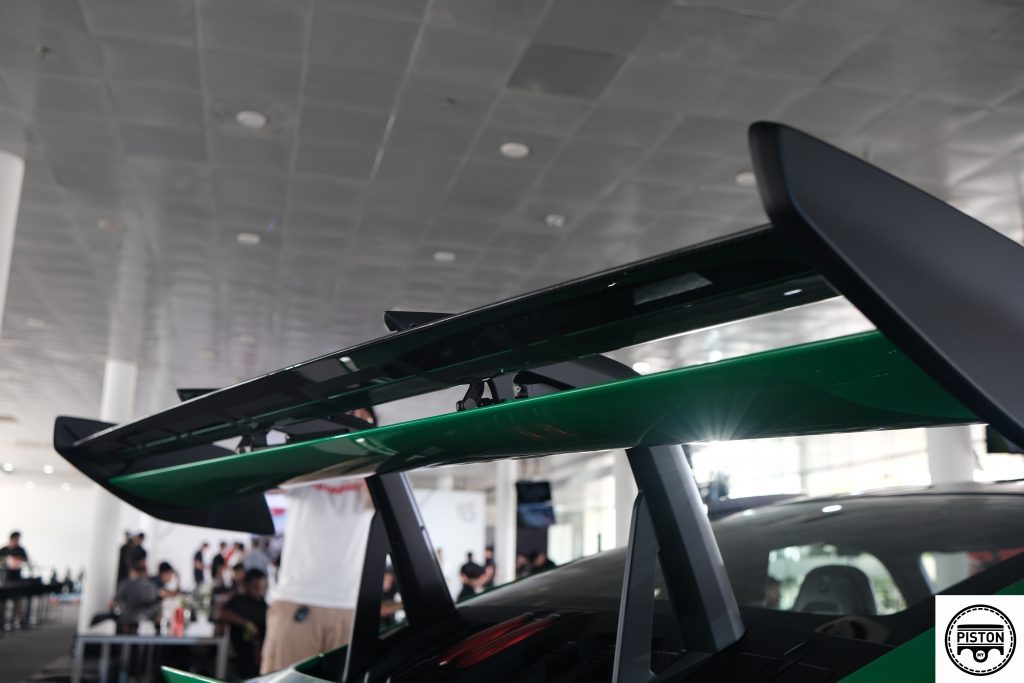
The rear side panel openings are solely dedicated to enhancing aerodynamics, not drawing in process air. The rear wheel arch includes both an intake and a sideblade for improved airflow. The rear diffuser, derived from the 911 GT3, has undergone slight modifications for optimal performance.
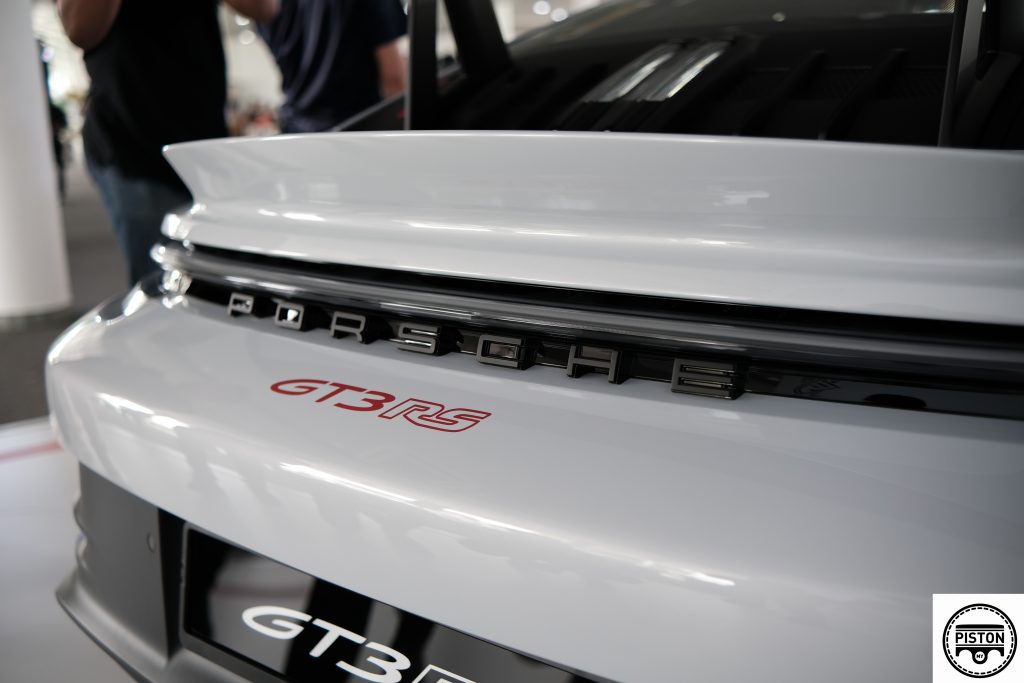
For the first time in a production Porsche, a drag reduction system (DRS) is incorporated. This innovation enables the wings to be adjusted for reduced drag and increased straight-line speed on the track, activated by a button press within a defined range. In instances of high-speed emergency braking, the airbrake function engages. This deploys the front and rear wing elements to their maximum positions, generating an aerodynamic deceleration effect that greatly assists the wheel brakes.
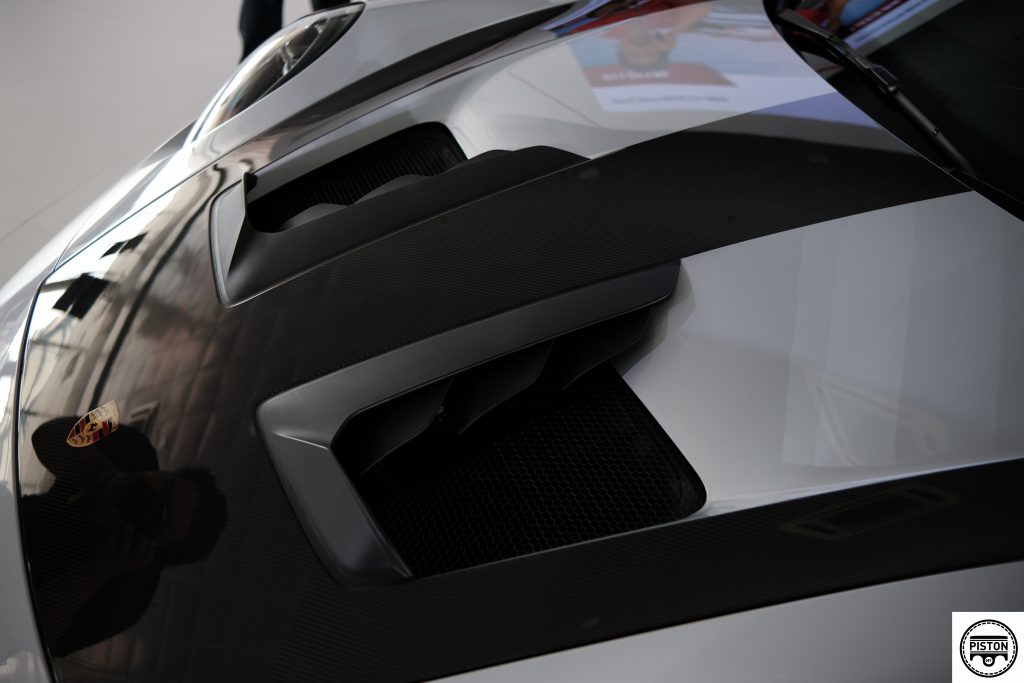
The suspension system receives aerodynamic consideration as well. Due to the significant airflow around the wheel arches of the new 911 GT3 RS, the elements of the double-wishbone front axle incorporate teardrop-shaped designs. These streamlined components, typically found in premium motorsport contexts, contribute to an approximately 40kg increase in front axle downforce at maximum speed. Notably, the wider track of the 911 GT3 RS (29mm wider compared to the 911 GT3) necessitates longer double-wishbone front axle links.
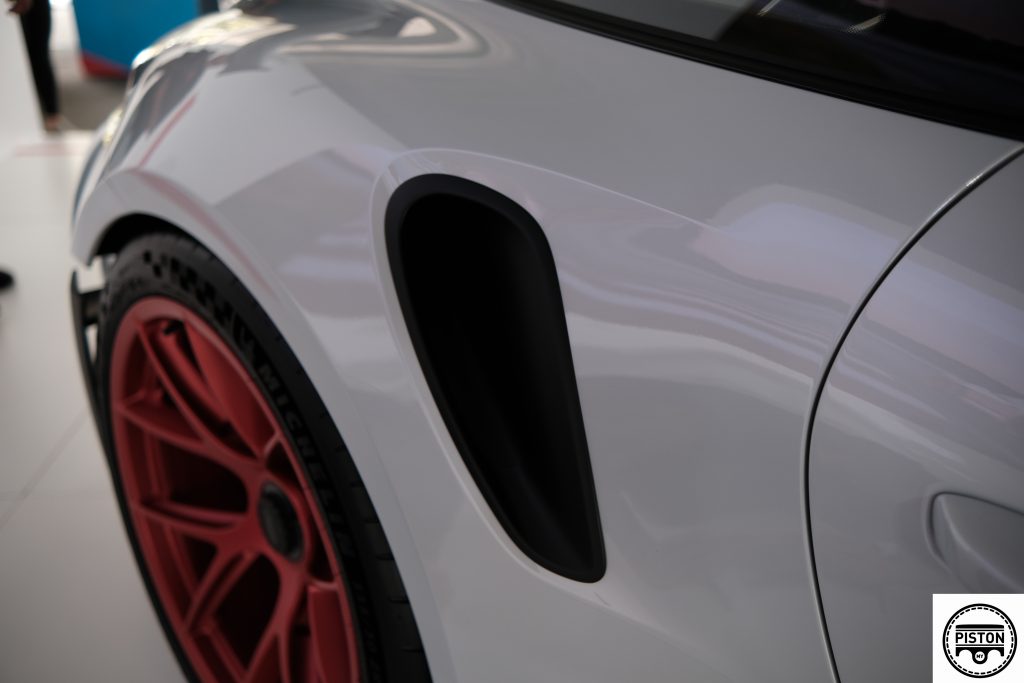
It is equipped with standard forged light-alloy centre-lock wheels. It rides on road-legal sports tires: 275/35 R 20 in the front and 335/30 R21 in the rear, providing excellent mechanical grip.
All About The Power
The 4.0-litre high-revving natural-aspiration engine in the 911 GT3 RS has been further enhanced compared to the 911 GT3. The power increase to 525PS mainly comes from new camshafts with adjusted profiles. Motorsport-derived components like the single-throttle intake system and rigid valve drive are used. The seven-speed Porsche Doppelkupplung (PDK) has a shorter gear ratio than the 911 GT3. Underbody air intakes ensure the transmission can handle extreme track demands. Accelerating from 0 to 100km/h takes 3.2 seconds, with a top speed of 296km/h in seventh gear.
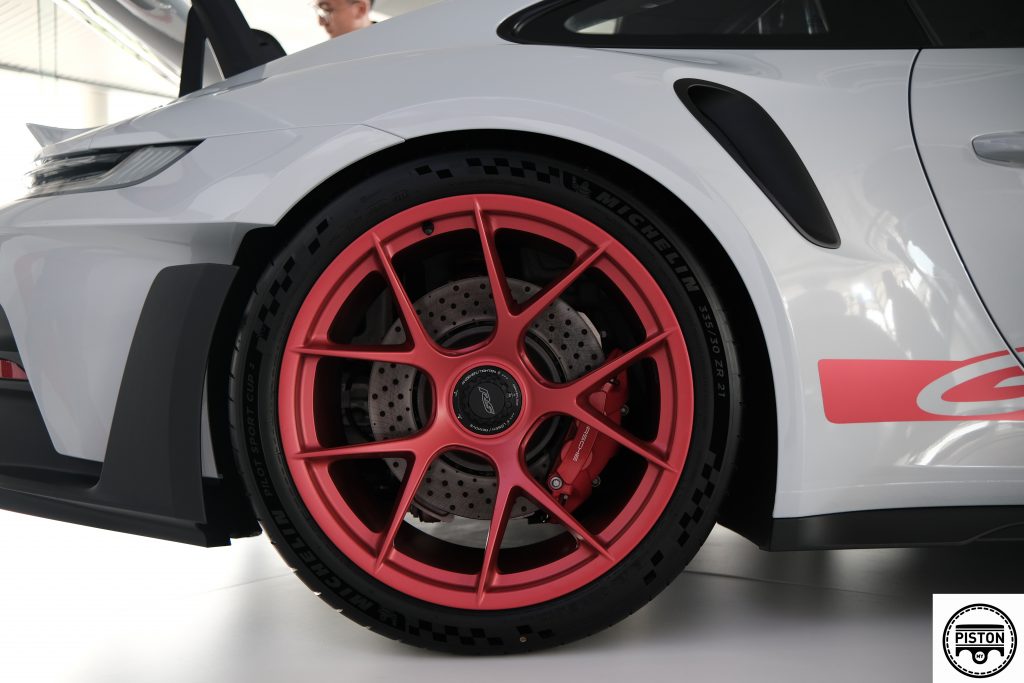
The 911 GT3 RS provides three driving modes: Normal, Sport, and Track. In Track mode, you can fine-tune basic settings individually. This includes adjusting rebound and compression damping for the front and rear axles in multiple stages. The rear differential can also be controlled using steering wheel-mounted rotary controls. This user-friendly system, inspired by motorsport, allows for quick and intuitive adjustments.

Aluminium monobloc fixed-calliper brakes with six pistons each and brake discs with a diameter of 408 mm are used on the front axle. Compared with the 911 GT3, the piston diameters have been increased from 30 to 32 mm. In addition, the thickness of the discs has been increased from 34 to 36 mm. The rear axle continues to be fitted with 380-mm brake discs and four-piston fixed-calliper brakes.
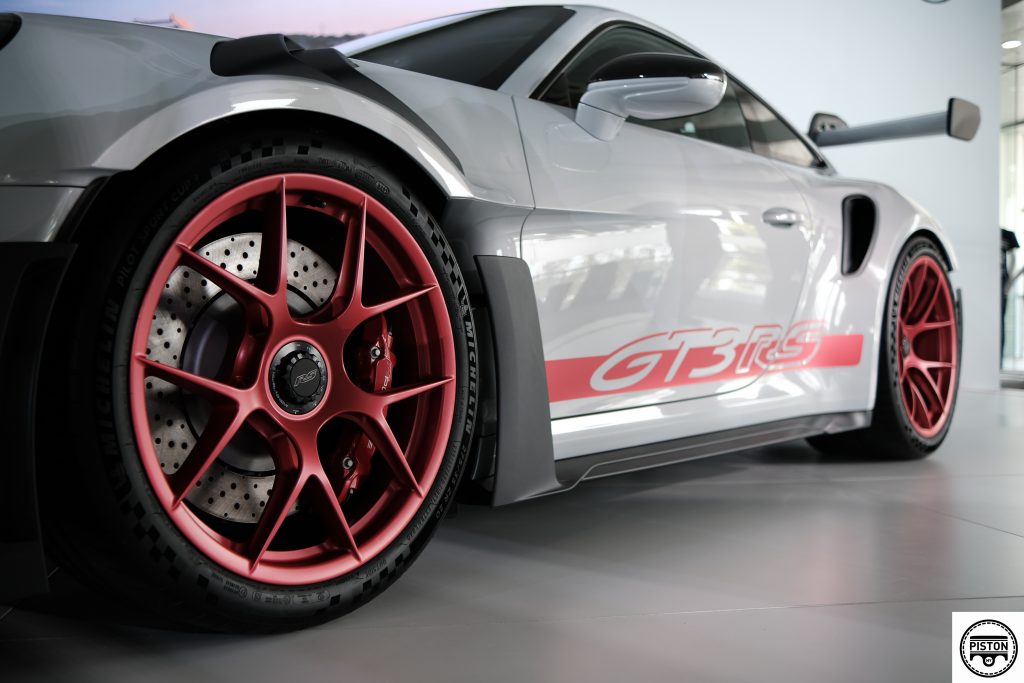
The optionally available Porsche Ceramic Composite Brake (PCCB) has 410-mm discs on the front axle and 390-mm discs on the rear axle.
Lightweight Baby!
Smart lightweight design has been a foundational aspect of all RS models, tracing back to the iconic 911 Carrera RS 2.7. Utilising multiple lightweight techniques, like substantial employment of CFRP (carbon-fibre reinforced polymer), the 911 GT3 RS maintains a mere weight of 1,450kg (according to DIN curb weight) even with larger parts. Notably, CFRP is employed in crafting components such as doors, front wings, roof, and front lid. The interior also features lightweight CFRP, including the standard full bucket seats.
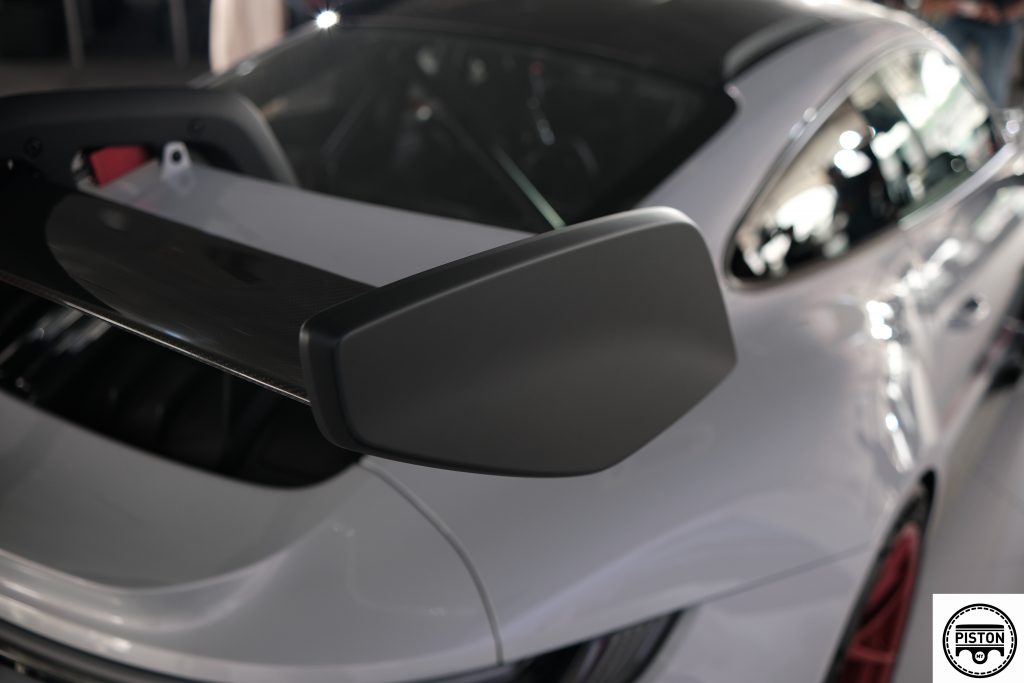
The Cockpit
The steering wheel of the 911 GT3 RS accommodates four distinct rotary controls and a button for the Drag Reduction System (DRS). These controls are visually represented on the instrument cluster’s display during adjustments. Similarly, the track screen, seen in the 911 GT3, is integrated into the GT3 RS. With a button press, the driver can simplify the digital displays on the two seven-inch side screens to show only crucial information. Additionally, the gearshift indicators flanking the analog tachometer are borrowed from the GT3.
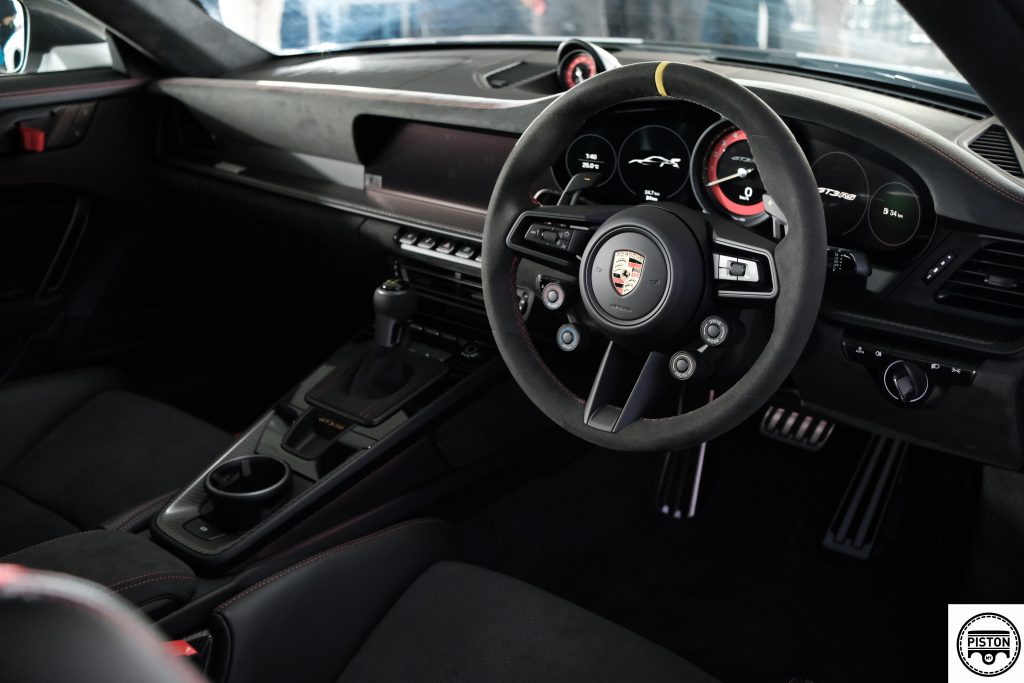
The interior of the new GT sports car adheres to the customary RS style, featuring black leather, Racetex, and carbon-weave accents that establish a pure, sporty atmosphere. The 911 GT3 RS offers the Clubsport package at no additional charge. This package incorporates a steel rollover bar, a portable fire extinguisher, and six-point seat belts for the driver.
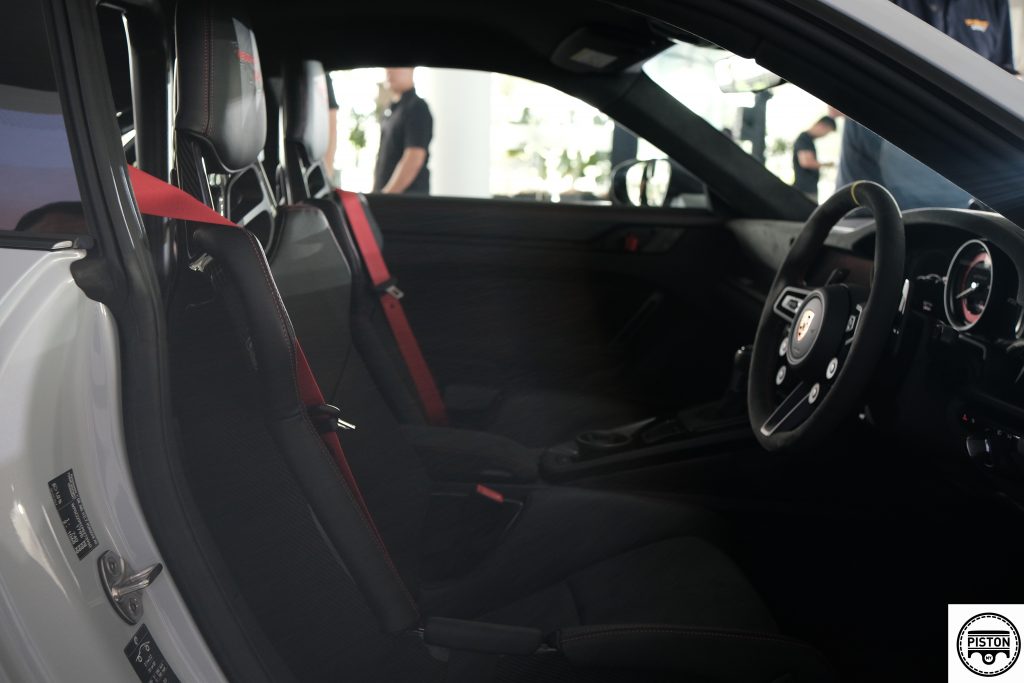
The optional Weissach package, available at an additional cost, offers a substantial array of features. It includes a carbon-weave finish on the front lid, roof, segments of the rear wing, and upper sections of the exterior mirrors. Enhanced driving dynamics result from carbon-fiber reinforced plastic (CFRP) components, such as the front and rear anti-roll bars, rear coupling rods, and shear panel on the rear axle. Notably, the roll bar, now crafted from CFRP, reduces weight by about six kilograms compared to the steel variant.
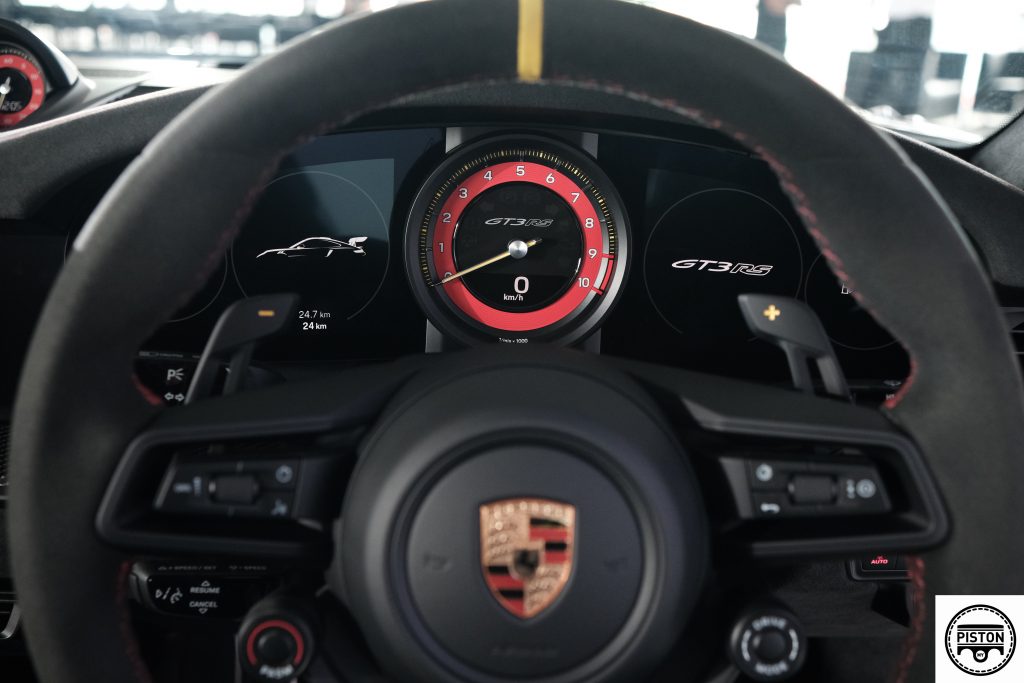
Another standout feature of the Weissach package is the PDK shift paddles that utilise motorsport-inspired magnet technology. This refinement enhances gear changes by providing a more precise pressure point and a distinct tactile click. Additionally, magnesium forged wheels are offered as an optional component with the Weissach package, resulting in a further weight reduction of eight kilograms.
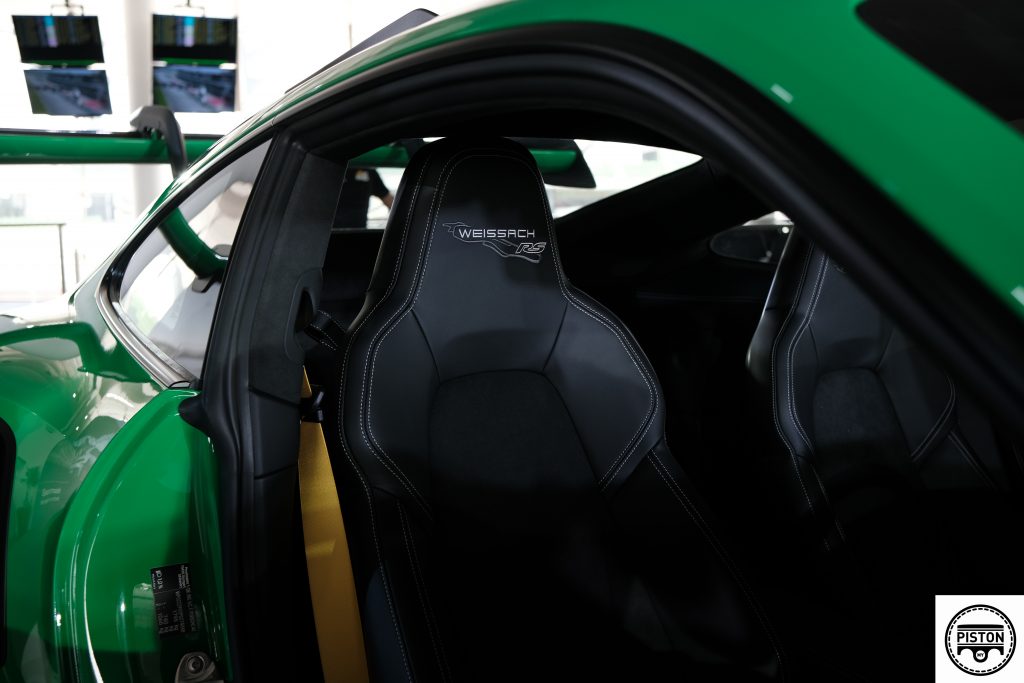
Exclusive Porsche Design Chronograph
Drawing inspiration from the precision-driven world of motorsport, Porsche’s watchmaking division in Solothurn, Switzerland, has created the 911 GT3 RS chronograph, an exclusive timepiece for car owners. The mechanical watch showcases a glass-bead blasted case available in natural or black titanium, featuring a screw-down crown. Powering the watch is the mechanical Porsche Design chronograph calibre WERK 01.200, which has earned COSC certification for its remarkable accuracy.
Featuring a flyback function, the 911 GT3 RS chronograph enables users to initiate, halt, and reset the second hand with a single motion. The chronograph pushers are engraved with ‘Start/Stop’ and ‘Next Lap,’ underlining that this chronograph transcends timekeeping. Alongside advancements like the pulsometer scale on the bezel, the watch also integrates numerous design elements and materials from the GT3 RS.
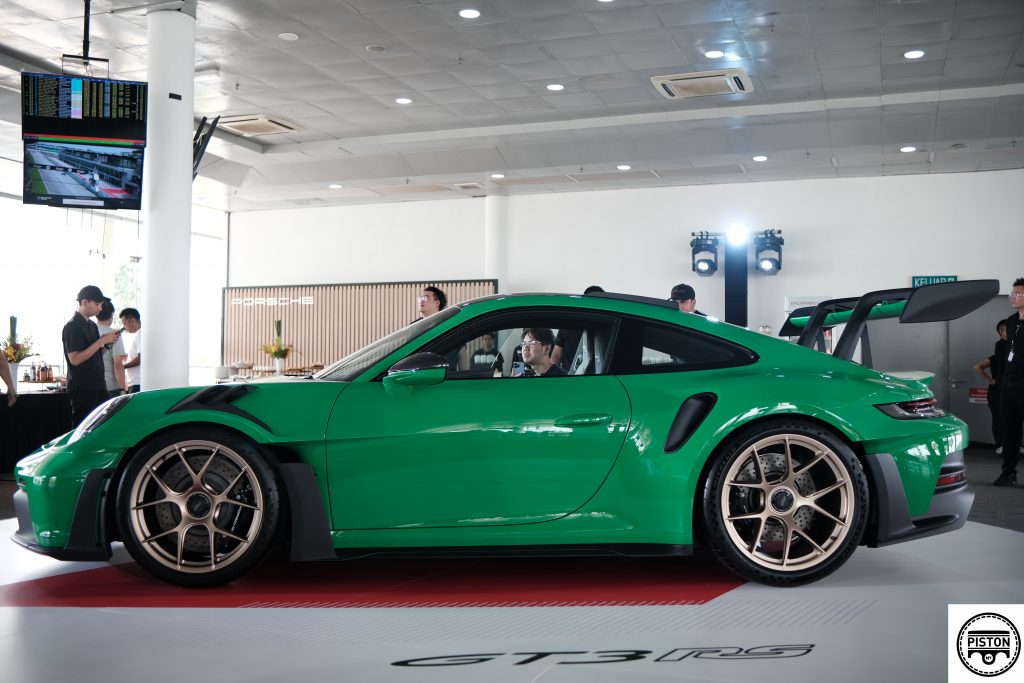
The new Porsche 911 GT3 RS is priced starting from RM2,630,000.
